
The Trek Details
The Trek in a snapshot
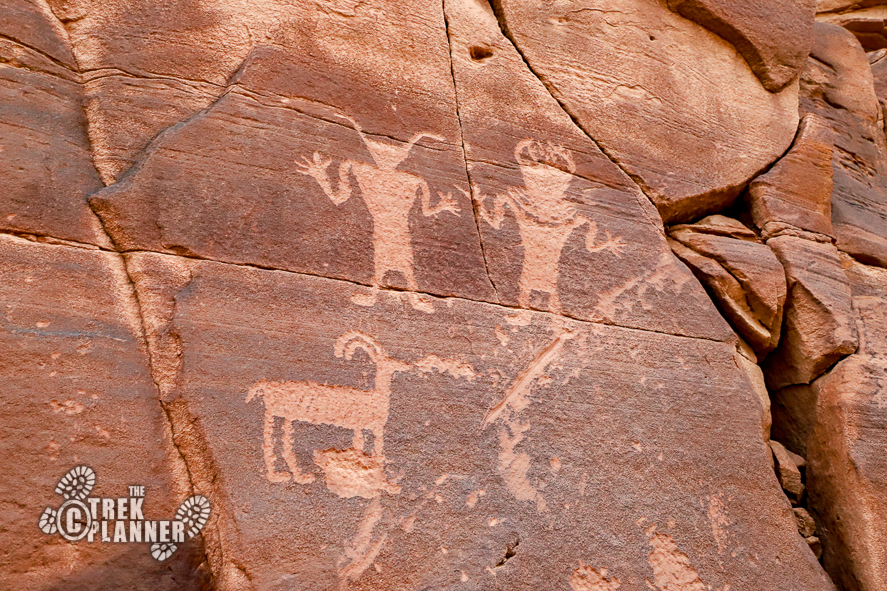
Note: I am no longer offering Insider Memberships.
Please purchase my Nine Mile Guidebook!
Note: some of the sites listed can only be reached by drone or seen by high-powered binoculars
All GPS coordinates are all in order beginning at Soldier Canyon Mine and going forward to the Great Hunt – one after the next!
Most of these petroglyphs don’t have actual names. But, I have named them to make them easier to reference in this guide.
Buy The Trek Planner Official Guidebook!
While not an exhaustive history, my guidebook opens access to over 230 hidden petroglyphs, ancient granaries, and secluded ruins that are rarely documented elsewhere. After five years of research and more than twenty visits, this guidebook provides a one-of-a-kind experience, allowing you to explore Utah’s “Longest Art Gallery” in ways previously unavailable. Dive into Utah’s unparalleled past with this unique guide, designed for explorers who seek the extraordinary.



My first time visiting 9 Mile Canyon I decided to check into the Office of Tourism in price and ask them some questions. When I arrived, a very helpful lady was at the desk and she gave me a few pamphlets and some advice on how to best visit the canyon. She also told me that many of the petroglyphs, granaries, and other sites are on private property so please be respectful and observe from a distance if posted!
The lady told me that the best way to view 9 Mile Canyon is through a guiding company. Well, I didn’t exactly plan this trip in advance so that option was out of the question, at least for today. I opened the pamphlet and saw pictures of incredible petroglyphs and ancient ruins. I noticed in this pamphlet that there were mile markers to these sites and so I figured I could easily just drive up to the mile marker and find them. Wrong! I quickly found out that the mile markers in the pamphlet published by the city are incorrect. Unfortunately for me, I was already an hour away from Price at this point and couldn’t easily go back to the Office of Tourism and get some better information – I was stuck.
Yet, this was perfectly fine for me since I am naturally a positive person, I was excited for the challenge of trying to find all these places. Some of the places are actually marked on the road so even if you don’t have a map or driving guide, you can still see a few sites on your own. I will provide as many GPS coordinates as I can for all the things that I found. I know there are tons more to see but I have provided a pretty big list of amazing petroglyphs, pictographs, cabins, ruins, and more for you! I only ask that you please be respectful of the rock art and private property. This is why I 100% recommend you bring some binoculars with you on this journey. Many of the petroglyphs are up high and may be inaccessible but you can view hundreds/thousands of petroglyphs right from your car! Another issue is dust from all the traffic on the roads! The dust sticks to the petroglyphs and can damage them over time. Also, please do not touch or vandalize the petroglyphs. I know this may seem like common sense, but some people don’t know you shouldn’t deface the rock art!
9 Mile Canyon has had peoples live here for at least 8,000 years! The Fremont culture is the most predominant in the canyon along with the Ute. You will see many other signs of settlers and pioneers who passed through this area, including the 9th US Cavalry (late 1800s) who built the road through the canyon.
The 9 Mile Canyon name may have come from John Wesley Powell’s cartographer who while they were exploring Green River in 1869 named the canyon 9 Mile Canyon even though the canyon is much longer than just nine miles.
This canyon holds more than 10,000 petroglyphs and pictographs!
I began my journey with a gas fill-up at Millers Gas Station in Wellington Utah. This is the perfect place to start because the turn-off to 9 Mile Canyon is just down the street. Follow my driving directions if you need it. I won’t tell you the mile posts because it can get confusing and there is just too much to see.
From Millers Market in Wellington, continue down Highway 191 for 1.2 miles, turn left until you pass the trucking company facility on your right. Now, you will be travelling on Soldier Creek Road which will then turn in to 9 Mile Canyon Road. There isn’t much to see before you get into the canyon. You will pass prairie land and some broken buildings and structures. After you travel about 10.1 miles you will arrive at the canyon entrance. The next items are in order:
(just about all the petroglyphs are located on the left side of the road)
-
- The first big thing to see is the Soldier Canyon Mine. The mine is fenced at its boundary and the mine entrances have been sealed since July 1999. You can still see remnants of this large coal mine including a conveyor system, coal hopper, warehouse, office, and other support buildings.

- Look to your left on a large boulder and you will see what I think is a ranch symbol and some other initials. They are faint, but you can see them from your car


- Big Sulphur Canyon will be on your left. Coming up will be Nine Mile Ranch. The ranch features some cabins and areas for a tent or RV for rent.
- R B Glines Initials are on your left underneath a rock ledge with a drawing. I can’t really see the date or the picture, but the date may say 1864
- The First Site will be on your left too. You will see a small pull out with a sign that says, “First Site”. The petroglyphs and pictographs are on the cliff wall. Look high up for some too. You will see animals, figures, circles, spirals, lines, dots, and more


First Site - Cottonwood Glen Picnic Area is a great place to stretch the legs. There is a pit style outhouse here with covered picnic benches. You will also find ruins to an old ranch complete with some broken buildings. You can peek inside the house but look behind it for what used to be the stone fireplace, well and cellar. According to a sign in the big cabin, a man by the name of George Carlos “Don” Johnstun from Iowa in 1986 came to this area and started a life. By 1920 he bought more land and eventually sold it to different people in 1925. The land is now owned by Carbon County. Lots of water can be found in the creek below



- Squiggly Trees and Waves Glyph – This small glyph looks like house tops or squiggly trees or waves. It’s hard to see but it’s not far from the road

- Cabins and Corral – You can see remnants of early settlers by their cabins and corral
- Zigzag Pictograph – painted in red on a yellowish rock face
- Snake Panel – High up on the cliffs you will see a snake (or a river path). There are several of these markings along with animals and other strange depictions.

- Long Neck Ram Panel – This fascinating and large panel is kind of hard to see from the road. You will need to hike up a bit to get a better view of it. There are two large rams with stretched out necks. You can also see a person holding a shield or a ball. You will see depictions of people/spirits with large hands and sharp points on their heads.


- Snakes with two Circles Panel – There is a long line that appears to be a snake with a circle above and a circle below it. You will also see forms of humans and animals, zigzag patterns, and other odd shapes in this amazing panel.
- Warrior Panel – Small panel of men with shields and swords and bows. There is what I think is a shaman with a curled staff. Or perhaps, it’s just another warrior with a sword raised in the air. You can see the initials S.F. among the petroglyphs.

- Zigzag Pictograph and Sheep Canyon – Underneath a small rock ledge to your left you can see a red zigzag pattern that was painted on the rock face. Sheep Canyon is to your right.
- Alien Head Glyph – This one is hard to see from the road but it’s a depiction of a figure with two antennae. It’s located on a flat rock away from the road on the left
- The Watchman Pictograph – This is very high up from the road. You will need a drone to see it or hike up the steep terrain. There is a anthropomorph, zigzag pattern, and a very large anthropomorph
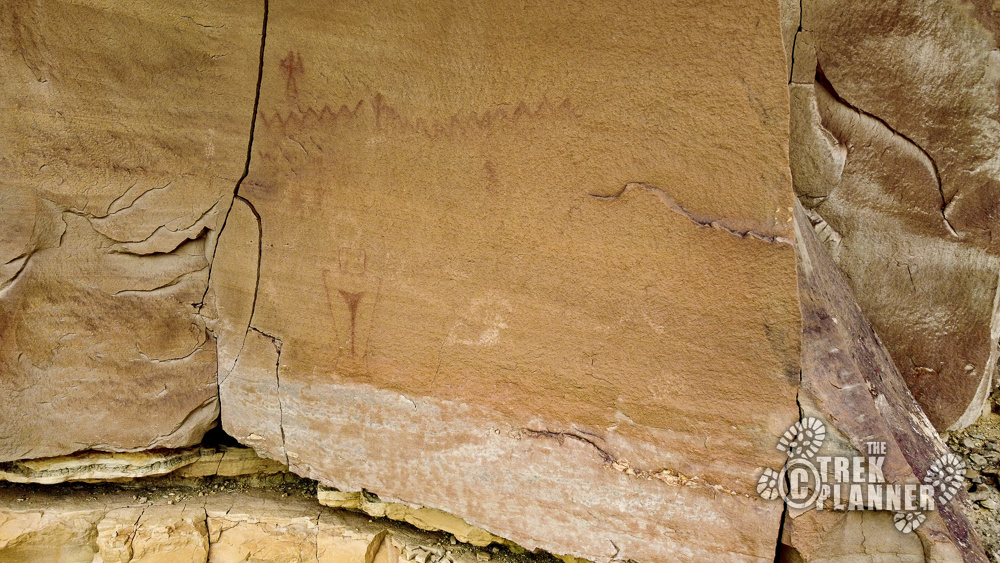
- Incomplete Shield – You can’t see this from the road, but this little carved shield stands as a witness that the Fremont literally were all over these mountains and valleys!
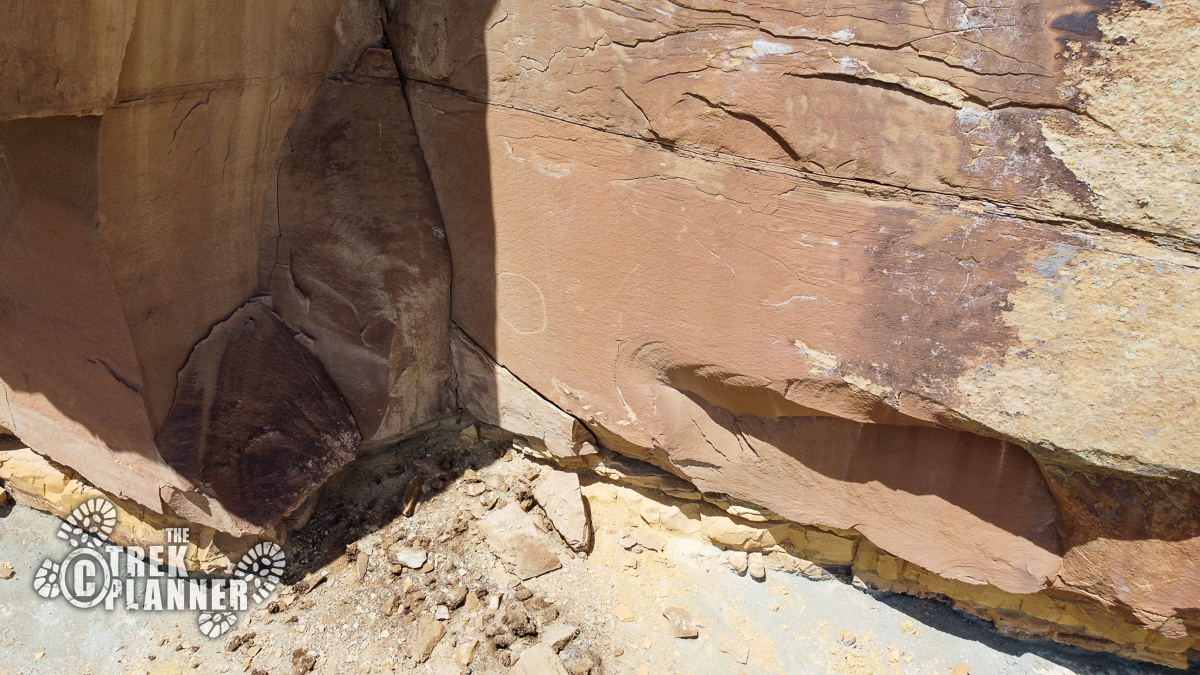
- G L Box and Davis Initials
- Hollow Ram Glyphs Up on the rock wall to the left there are some animal petroglpyhs. You will also see a clear hollow ram or sheep glyph.
- Bill Cook sure wanted his name to be known. He wrote it in large font under a ledge. Other text is seen here
- WM Carroll and others wrote their names here
- Hunter Glyph – You can see a petroglyph of a hunter with a bow and then what appears to be an animal of some kind. Some idiot tried to cut out the animal with a knife or saw but failed. It is now destroyed forever.
- Rob Powell 1887 and others Inscription
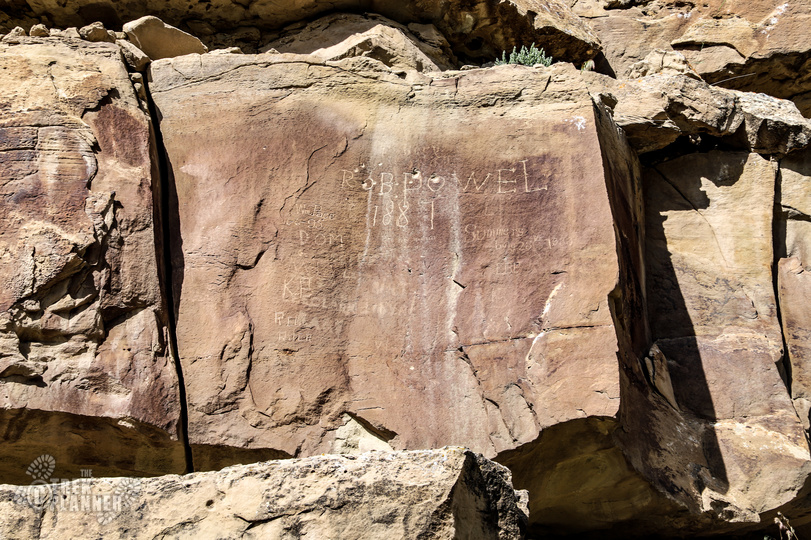
- Old Cabins and Ranch – The first big thing to see is the Soldier Canyon Mine. The mine is fenced around and seems to be very quiet nowadays. You can still see lots of remnants of this large coal mine including a conveyer system, coal hopper, and other buildings.

- Sheep Glyphs – they are hard to see but they are there on the rock face riddled with bullet holes.
- Horses and Riders One of the more interesting petroglyphs in this panel is a figure leading another figure who is riding a horse.

- Cave of Pictographs – a group of anthropomorphic figures on the inside of a small cave
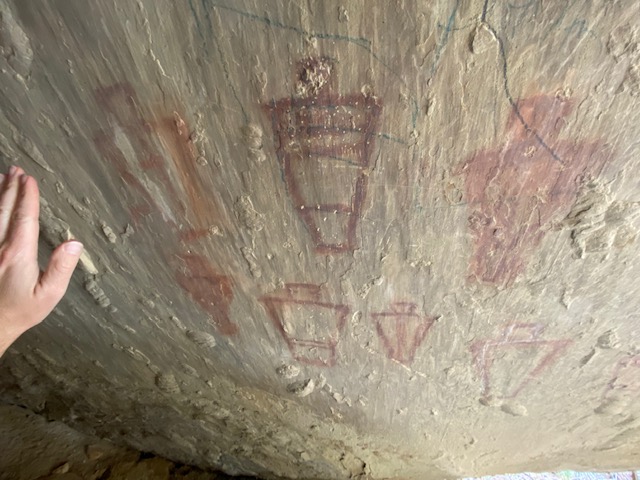

- Frank Something Inscription
- Argyle Canyon Road – leads to lots of other canyons and private property
- Dots Glyph – look high up on the cliff walls about 50 feet to see the dots
- Animal Glyph (small) – looks like a coyote, dog, or something similar
- Open Arms Man Glyph – looks like he is doing jumping jacks
- Headdress Glyph – an interesting figure with a headdress that looks like antlers


- Humanoid Glyph – appears to be a person holding a shield or sphere
- S.H. Gasot Inscription 1885
- Balanced Rock and Panel – This panel is on private property so please view it from the road. Balanced Rock is seemingly minutes away from tipping over. It is a great stop because there are some significant petroglyphs here such as human figures, animals, squiggles, and lines with hash marks. You can find the rock art below Balanced Rock to the left.
- The Juggler Panel – This appears to be a spiritual figure of someone juggling balls or basket weaving. You can also see what appears to be a spider’s web and some other animals and people marching with shields. Some experts believe that the figure juggling is Spider Woman. The Pueblo and Navajo believe that Spider Woman taught their peoples how to weave.



- Spiral glyph – higher from the road
- Squiggles and Dots Panel on the purple rock
- Hidden Zigzags – You won’t be able to see these very well without binoculars or a telephoto lens, but there are two long zigzags on the inside of this rock that is in the center of the canyon tower
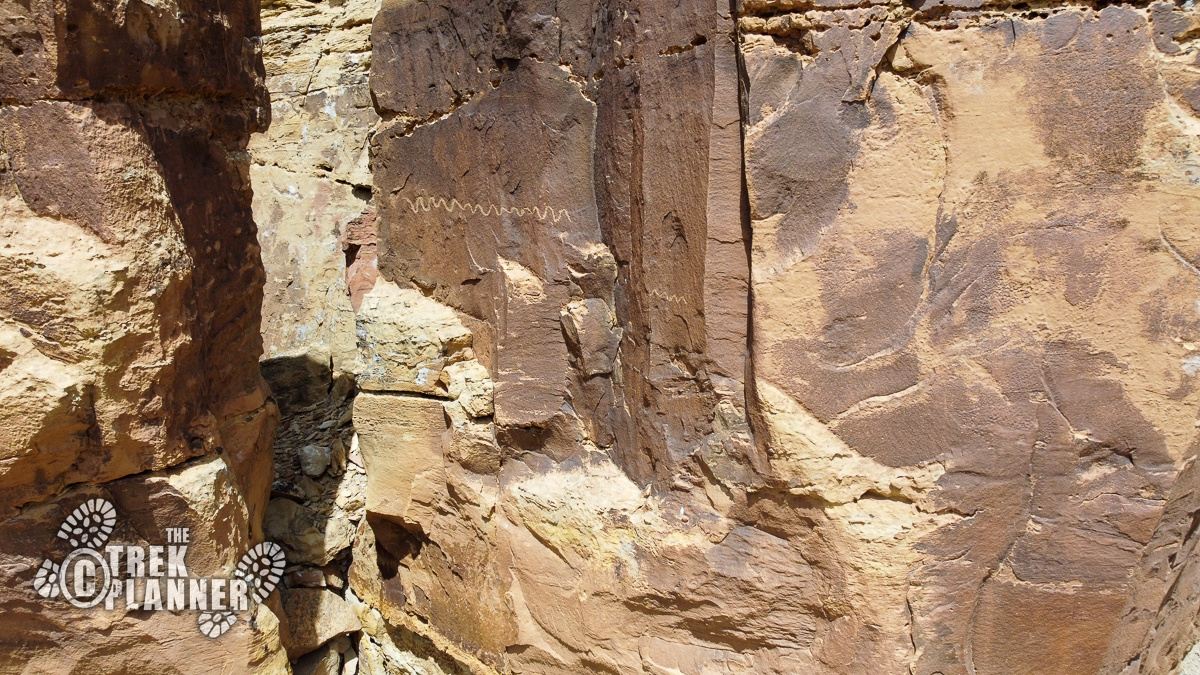
- Old Settlement – lots of old buildings and ranch land. Private Property


- Abell inscription next to other figures
- Canyon Junction Petroglyphs – there are tons of petroglyphs here. Look on the walls to the left. You can see animals, circles, spirals, and lots more!
- 5 Warriors Pictographs – you can view these from the road, but take the short walk and see these amazing red painted figures! They are located under a ledge

- Holding Hands – to the right of the 5 Warriors, you will see three other figures that appear to be holding hands.

- “Coyote Placed the Stars” Panel is located up from the road. There is a sign that also has viewing portals to see it. It’s high off the ground on the left side.
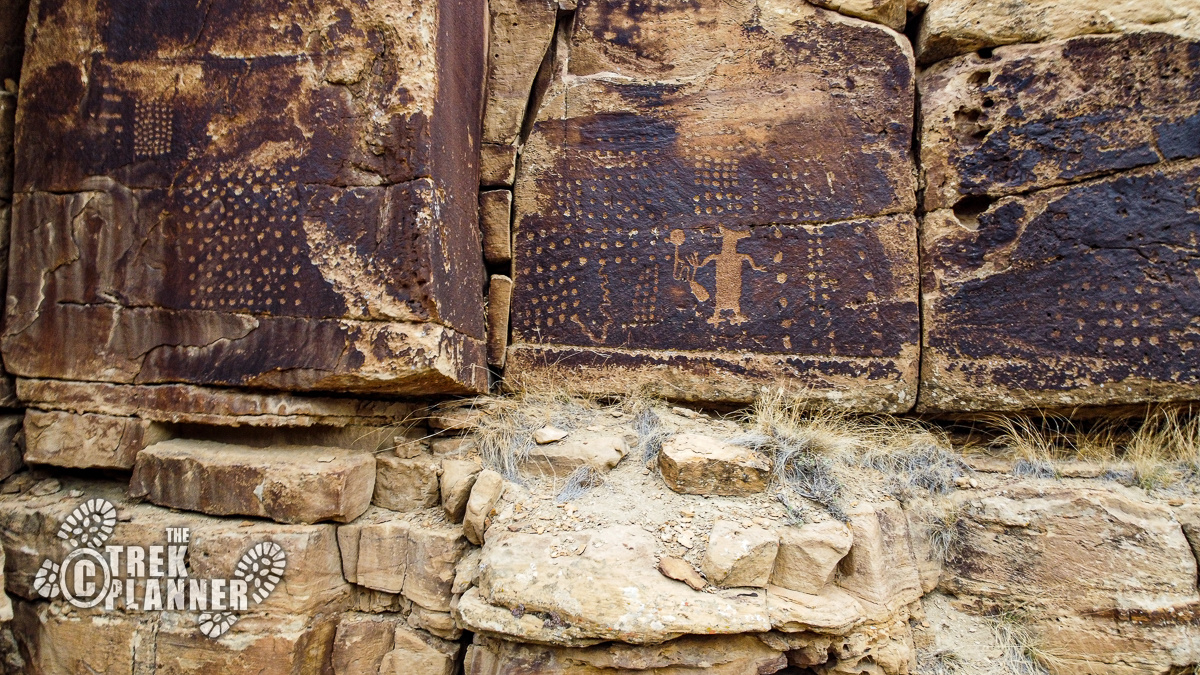
- Harmon Canyon Road and Trail Canyon
- Dots and Animals Panel – Lots of dots in nice rows and some rams and deer

- Fasselin Ranch – large ranch land with some buildings. Private Property
- On the red rock to the left you will see L Wilkison and others inscriptions
- The Owl Panel is located here on private property. It’s a very short walk, but an absolute necessity to see 3 incredible owls!
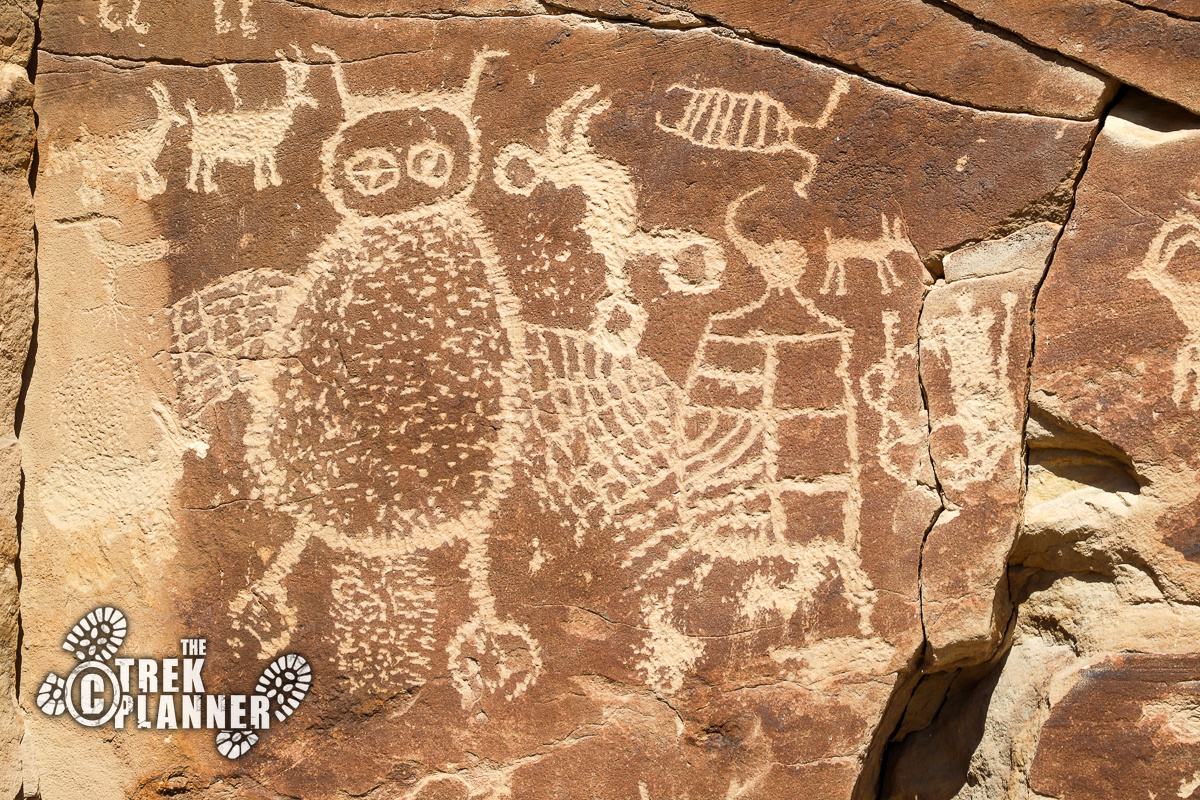
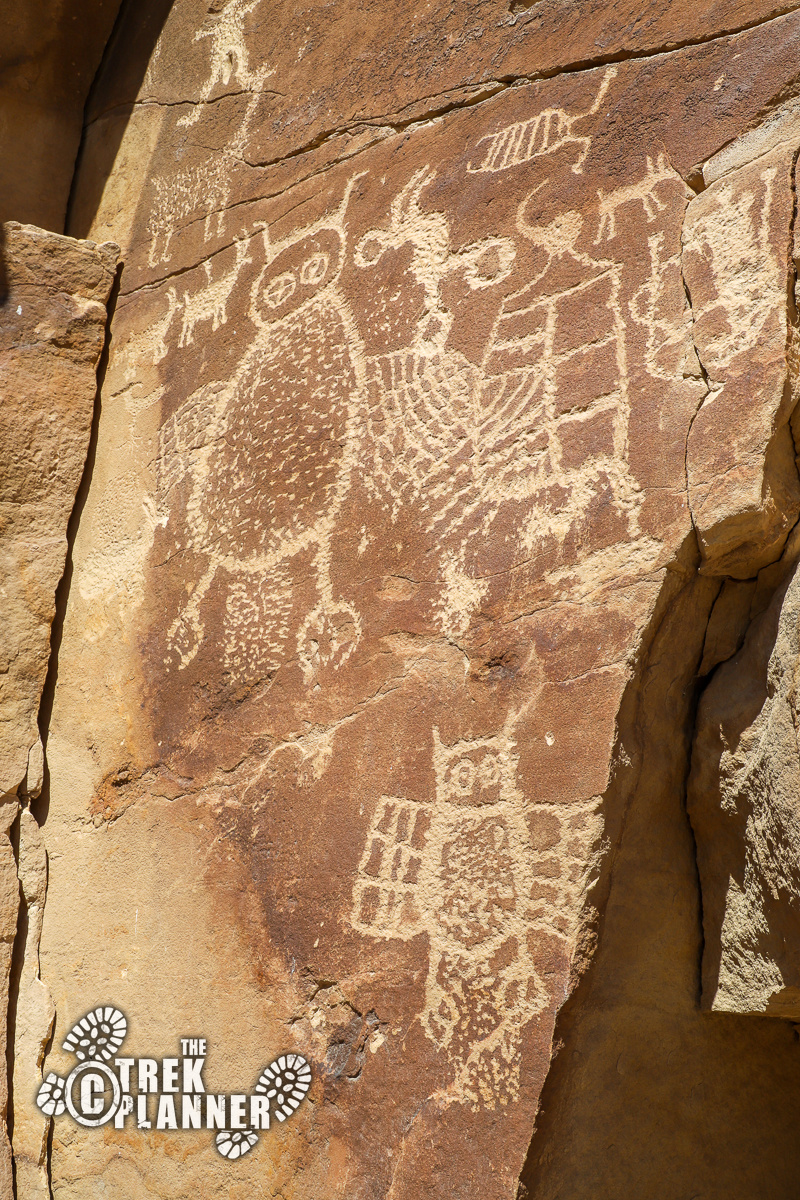
- Other Petroglyphs – It’s not really clear what’s going on here, but these are located north of the Owl Panel
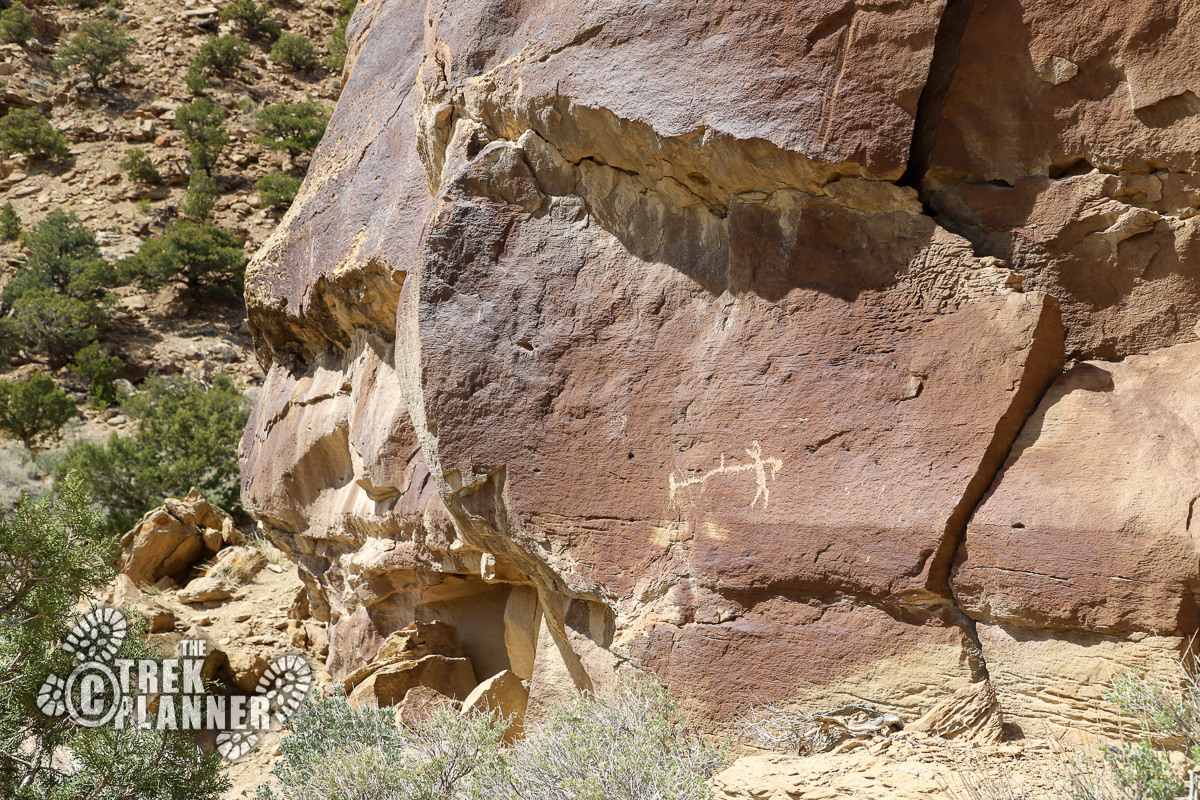
- Dotted Sheep Glyphs – These are still considered petroglyphs even though they are pecked lightly
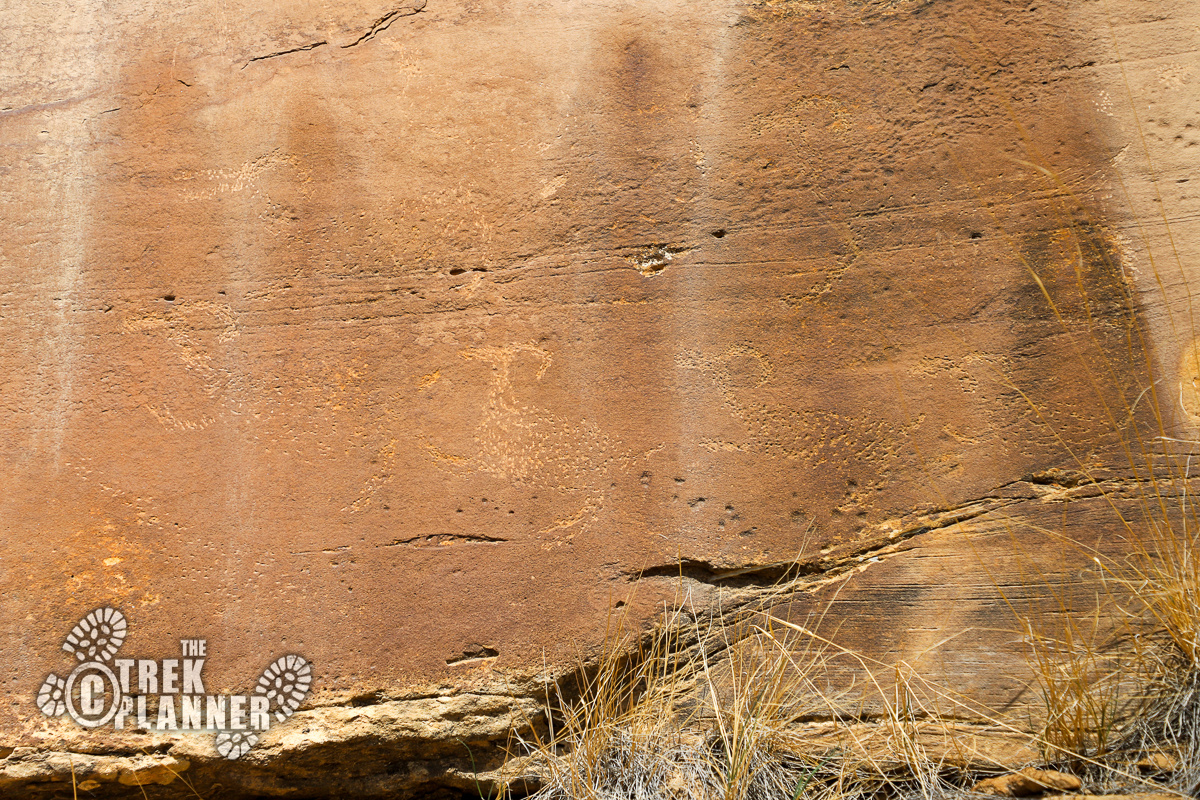
- Spooky Man Glyph – this anthropomorph petroglyph has been faded, but it looks creepy
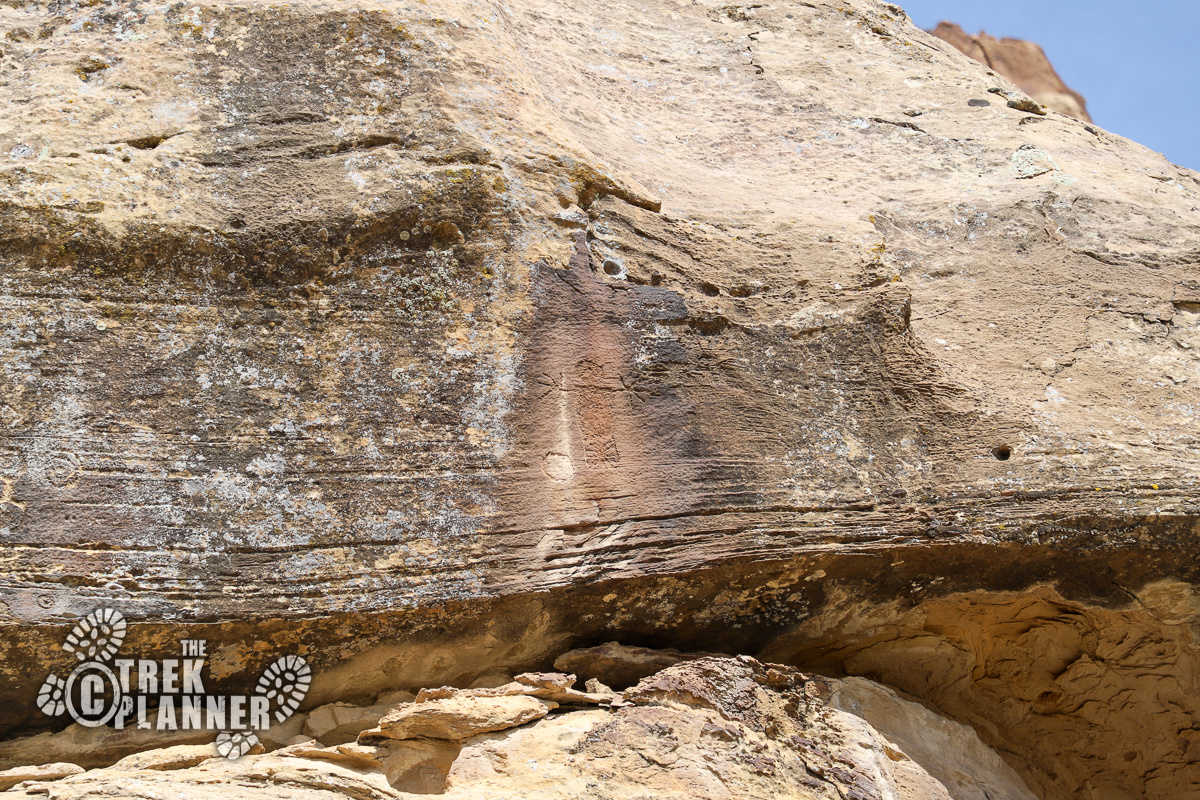
- Squiggles and Big hands Panel – Some clear zigzags and squiggles can be seen. A hand that has many fingers with other figures and some animals. A man holding his hands high in the air can be seen too
- Long Body Panel – This panel has an animal with a long body but with only two front feet and a narrow head. Other glyphs and animals are also present
- Sun Glyphs – On the left side of this panel is what appears to be a sun with its rays shining outward.
- Patterns Panel – This incredible panel features several patterns, spirals, human forms, and connecting birds (cranes?). Lots of clear zigzag patterns…what do these mean? This is a must see!




- Currant Canyon – This appears to be a storage area with many metal pipes and other equipment.
- Thin Man Glyph – look high up to see what appears to be a man staring right back at you…
- Lone Sheep Petroglyph – You won’t be able to see this petroglyph of a big horn sheep unless you have a drone or hike up to it. I wanted to include it in this guide so you will know that rock art is located in the low valleys and at the very tops of the mountains in 9 Mile Canyon. There are probably many other petroglyphs undiscovered here…
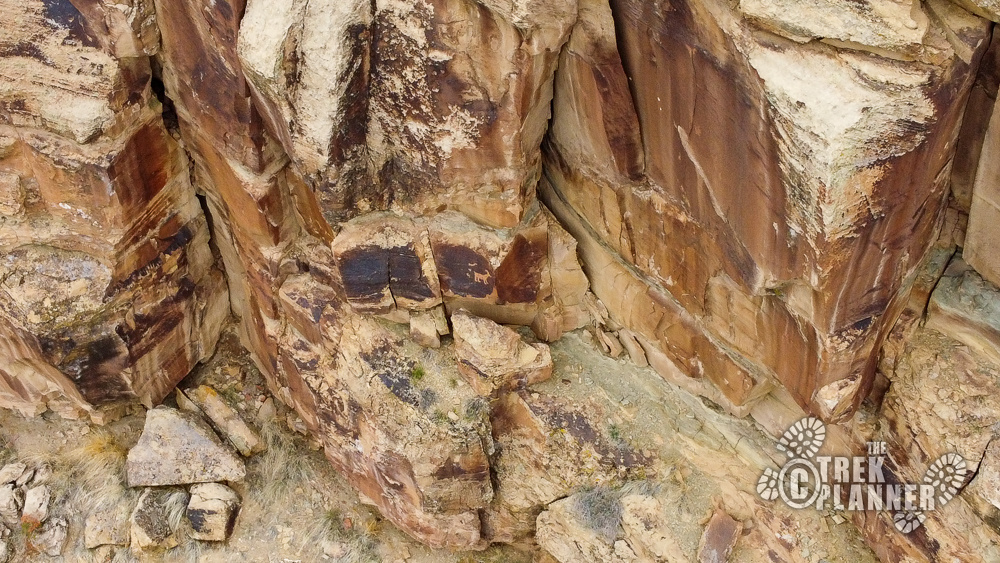
- Bud Loveeess Inscription – Not sure what all the E’s mean.
- Family Glyphs – A hunter and his wife and their pet dog and lizard
- Stretched Animal and Star Glyphs – This elongated ram is easy to see from the road. To the right of these petroglyphs you will see an animal with long legs and some line patterns. Another animal can be seen with stars coming off its head.
- Three Fatmen Glyph – Are these three fat figures? Or is the artist showing a transformation sequence of a spiritual being transforming into a human? Who knows! We are left to speculate on lots of things in this canyon.
- Ivan Demill Feb 14, 1928 Hells Hole Inscription

- Manta Ray Petroglyph – again and some animals and a nice spiral and dots. You can also see a very strange petroglyph here of a tree, man, and what looks like a manta ray or another strange shape.
- Juanita Harold Grove Inscription
- Hollow Figures with Triangle Heads
- Large Dots and Figures – Hundreds of dots can be seen on this panel. Various animals, shapes, and figures are also present. Make sure to find the red and yellow painted man!
- Checkerboard Panel – I am always fascinated when I see squares or checkerboards or boxes in rock art. Could these boxes be layouts for a nearby settlement?
- Squiggly Pattern – Various petroglpyhs can be seen at this panel including spirals, animals, and wave patterns.
- Distinct Spiral Glyph – a very clear spiral
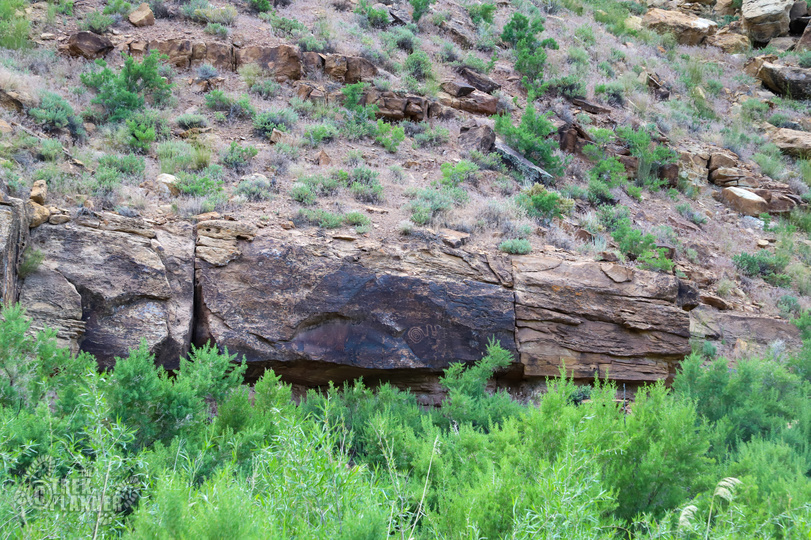
- Dots and Sheep – more dots and sheep!
- Scratched Elk Panel – look high up on your left and you may see some very faint elk petroglyphs. There is a cedar tree blocking the view a little, so you may need to hike up to better see them
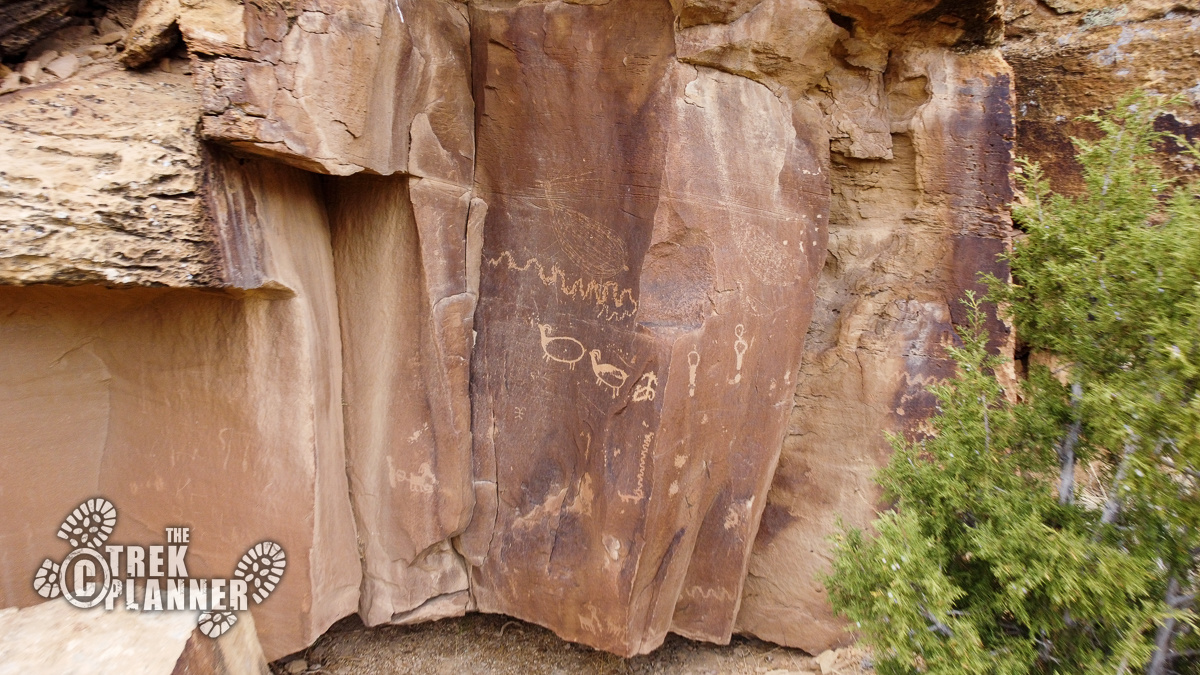
- Laser Sheep Panel – the sheep has zigzag “lasers” coming out of its head
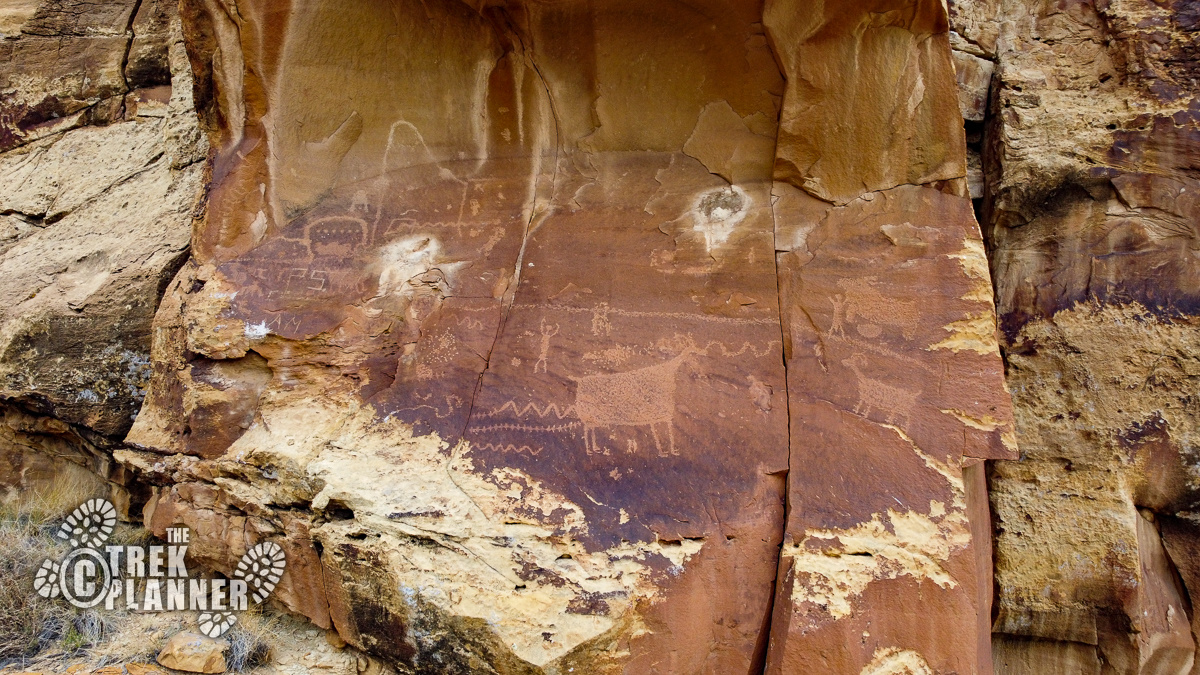
- You probably won’t notice these ruins while you’re driving, but they are located on top of this ledge. There are remnants of several structures here at Hilltop Ruins
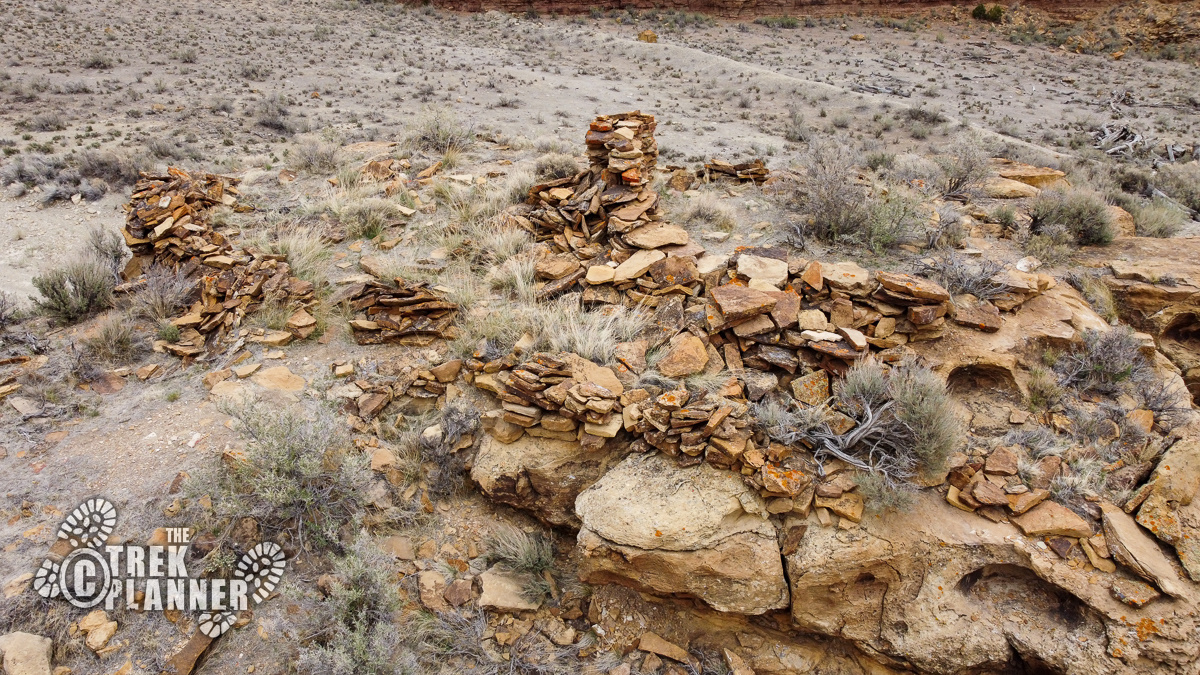
- Petes Canyon to the left
- Old US Army Cabins – You can see some old cabins here and one of them has “US Army” written on it. US Cavalry troops improved the dirt road and installed a telegraph wire in the canyon in 1886. You can see many of the metal poles still in the ground to this day.
- Three Hands Panel – located on your left higher up
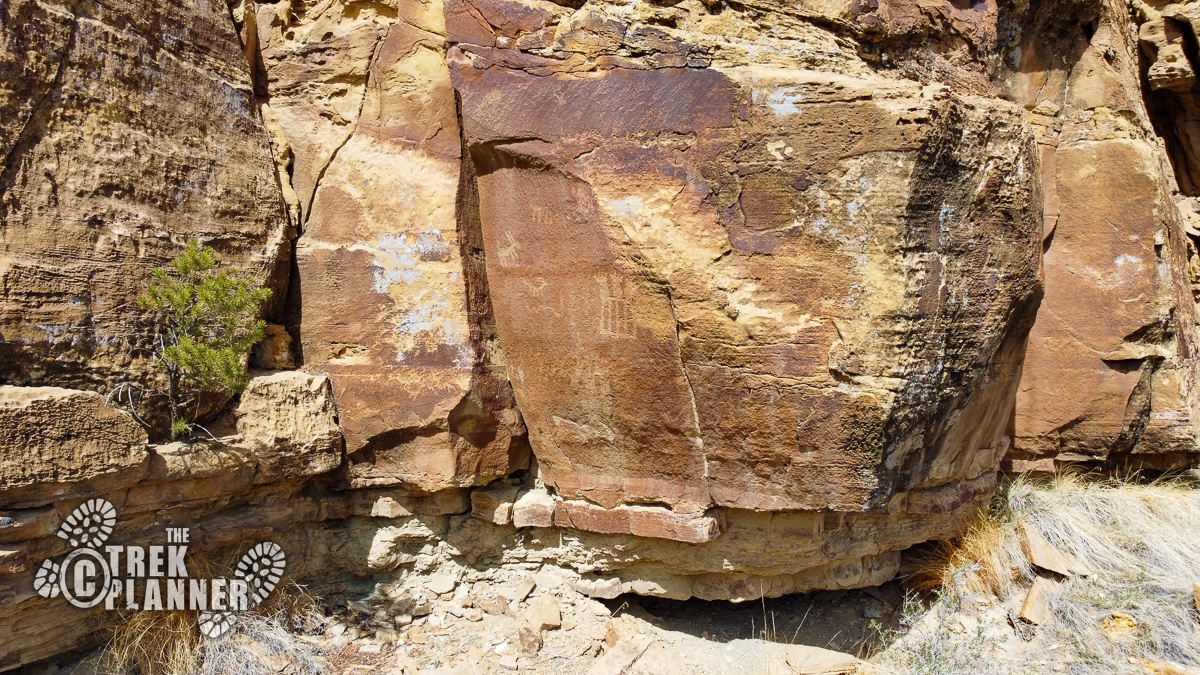
- 13 Painted Hashmarks Panel – these are 13 white painted hashmarks and then there appears to be several other markings in red. These are located under a small overhang
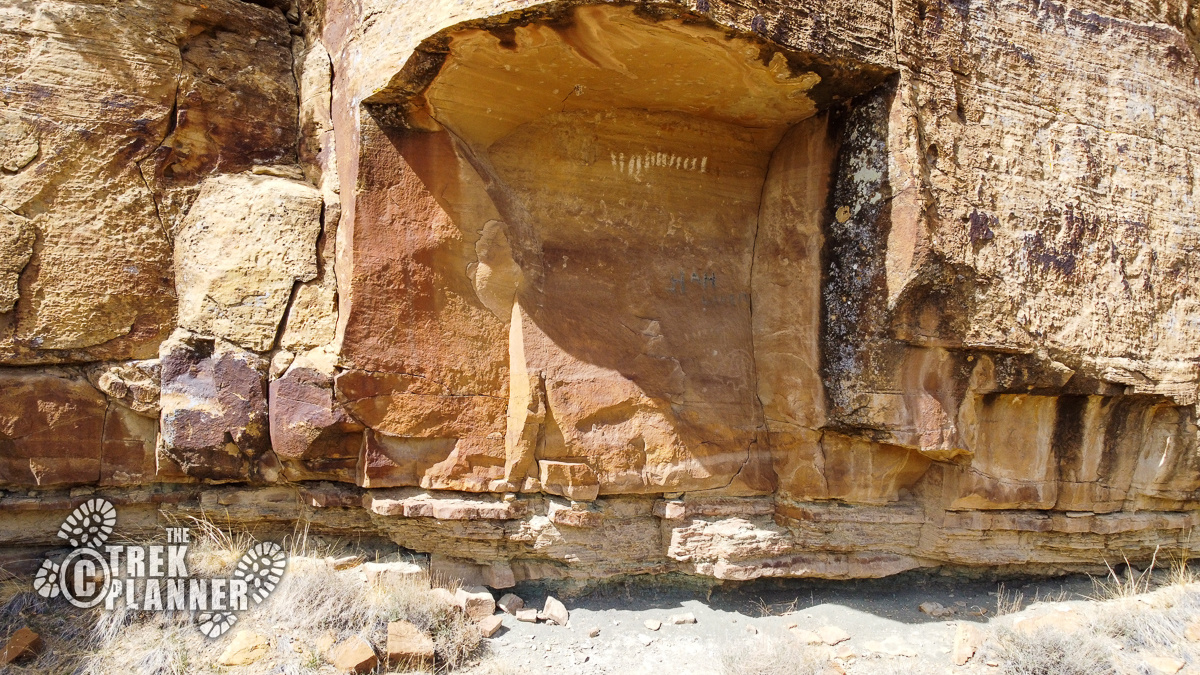
- Overhang Panel – lots of petroglyphs here! It might even be worth hiking up to it.
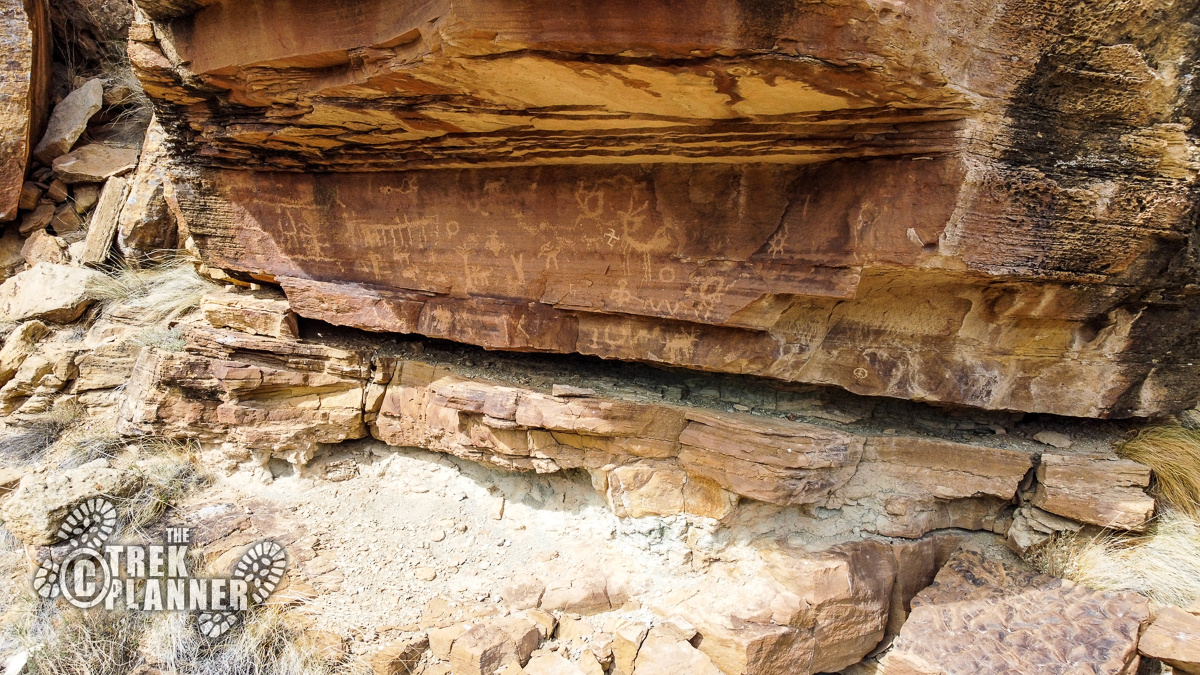
- Hologram Figures – these painted figures with outstretched hands are really neat. This is a junction point for Gate Canyon so there would probably be many travelers coming through here. Why would the Fremont paint these “hologram” like figures at this point?
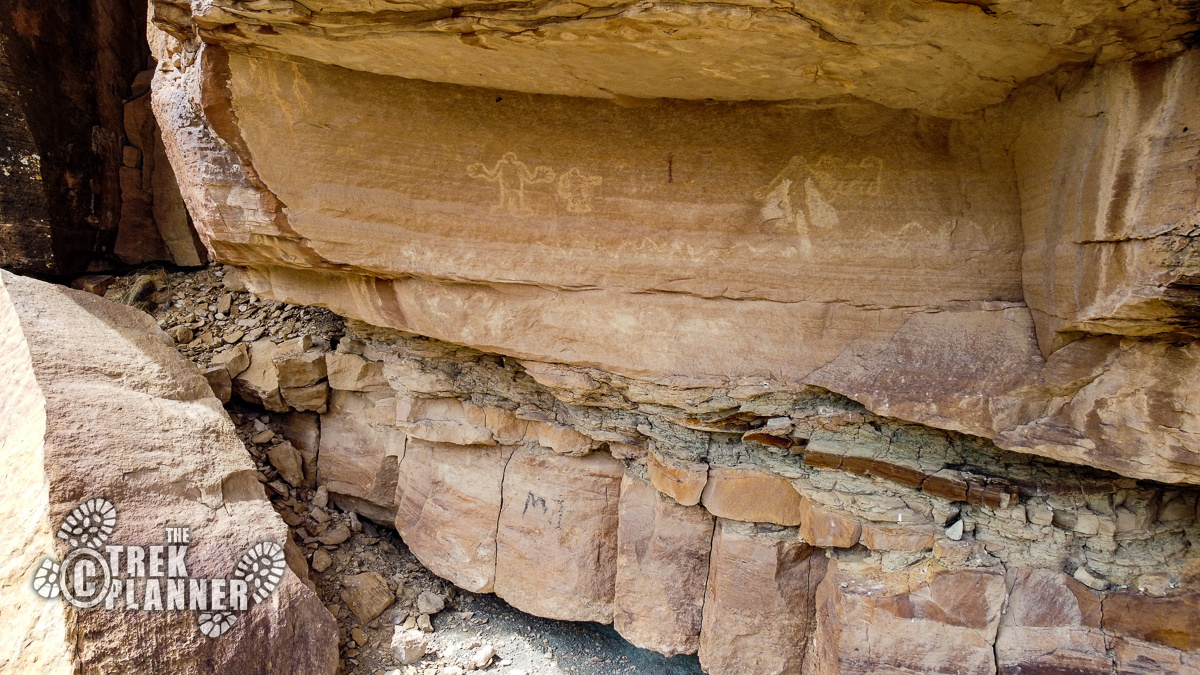
- Gate Canyon to your left. If you want to go to the town of Myton and eventually Vernal or Heber then this is the road you take. Some people start the 9 Mile Canyon journey from Wellington and then visit the canyon and then exit this way. The next nine items are things you can see in Gate Canyon or near Myton.

- Slender Dog Glyph (Gate Canyon) – A figure can be seen of a person without arms. A very slender dog-like creature is next to it.
- Alf Moore and Others Markings (Gate Canyon)
- Powell Family Inscriptions (Gate Canyon)
- Leonard Oct 12, 1886 (Gate Canyon)– It looks like above Leonard’s name are some ranch or branding symbols.
- E D Ingle Marking (Gate Canyon)
- B Roberts Inscription (Gate Canyon)
- L R Peterson 1972 (Gate Canyon)
- Delphia Miller (Gate Canyon) – I haven’t seen too many female names among the many 9 Mile Canyon inscriptions. Most of these inscriptions were made using black wagon wheel grease.
- Rock Structures (before Gate Canyon) – If you plan to be going through the Myton way in or out of 9 Mile Canyon, stop at these fascinating structures. All that is left are some stone outlines of what used to be buildings or corrals. These are located right off the road next to large boulders.

- Elk Glyphs – nice depictions of elk
- The Eternal Spider Web Panel is located up high. I have been to 9 Mile Canyon many times now and only recently noticed this one! It looks like spiral, spider web, or is it something else?
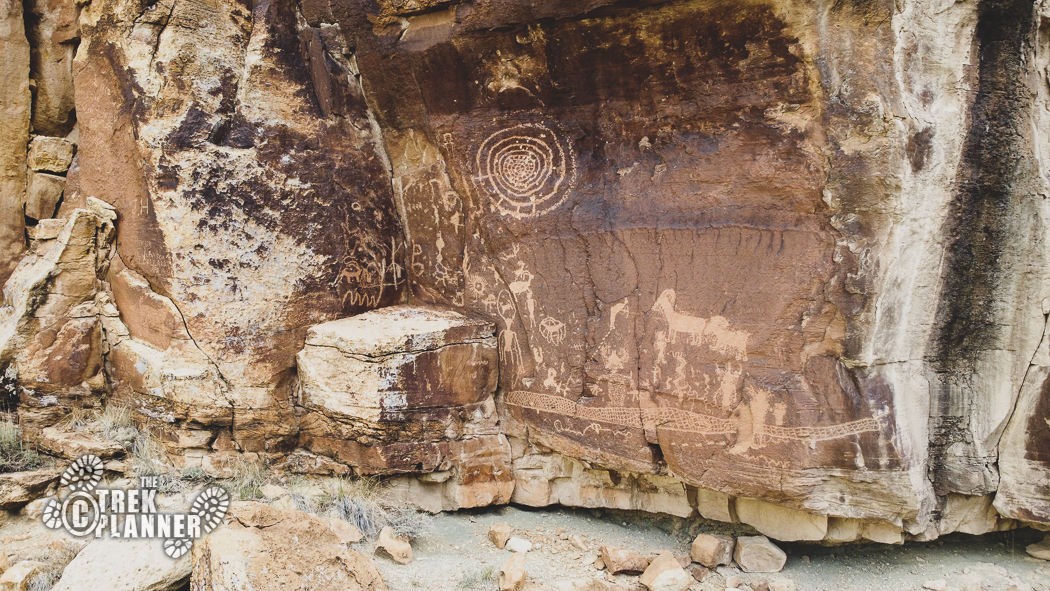
- The “Protected Ones” Panel. These petroglyphs are encircled about by a many pecked dots. What’s on the inside of the circle? Are they animals? Is this a depiction of an ancient corral?
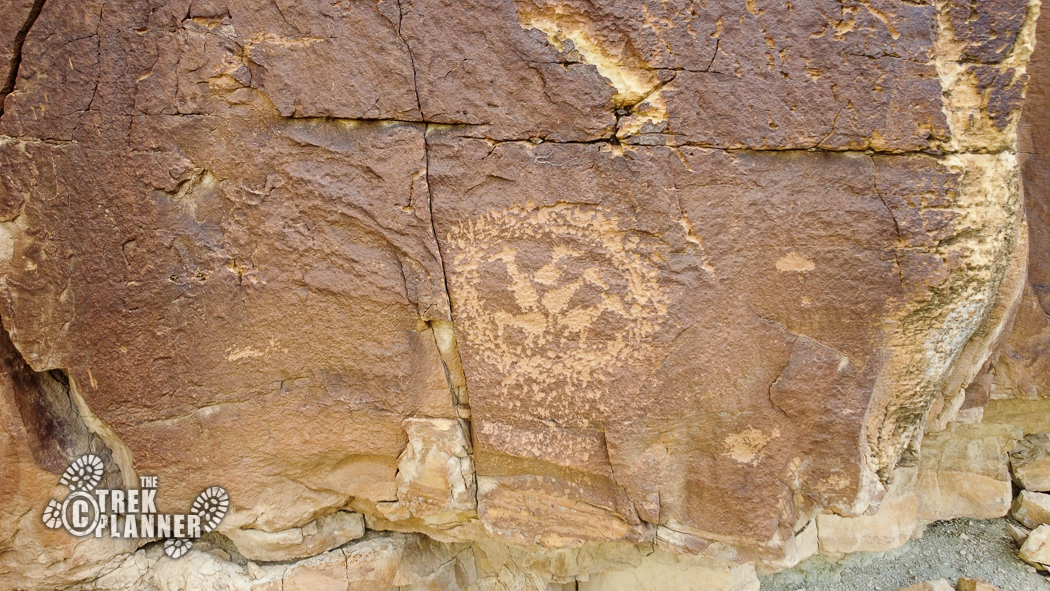
- Comb Head Panel. This panel is located near the “Protected Ones” Panel

- Rainbow Glyphs – I think this is of a rainbow but who knows! It’s large and easy to see. You can also see a dog or coyote glyph too. This is one of my favorite panels in all of 9 Mile Canyon!


- O. Wouymon Inscription – not sure who this is but they have a strange last name
- Hidden Map Glyphs – Are these just random squiggles and wave patterns? Or are maps and directions hidden inside these carvings?
- Spiked Head Glyph – This one is kind of hard to see but it looks like a figure with spikes on its head. You can also see some dots and animals next to it. These petroglyphs are to the south of the natural gas pipeline about 50 feet up.
- Devil Glyph – There is a figure with two points on its head with its hands spread out. The entire figure is in the motion of walking towards something…
- Water Canyon is on your left. This is some type of small station for the pipeline in the canyon.
- Strange Shape Glyph – Is this petroglyph just three boxes or is it a figure holding a staff? The initials C.G are carved here too. You can see these inscriptions to your left.
- Small petroglyph of a horse and rider hunting deer
- Terrain Map Panel – Another large petroglyph panel full of fascinating rock art. Many of the petroglyphs on this panel look like what could be rivers and mountains. Almost like a map… As you have been driving through the canyon, have you seen similarities in styles, patterns, figures, and shapes?
- Halloween 1956 Inscription – “O.B. Oct 31, 1956” and a very odd petroglyph to the left of it
- Outline Man Glyph – hollow man
- Boxes Glyph – More boxes and then a man inside a circle with a hollow face

- Pot Belly Glyph – is this a person with a pot belly or is it someone holding a shield?
- I named this panel the Journal Panel, because it looks like someone was documenting. I could be totally wrong, but this panel can be viewed with binoculars or a telephoto lens.
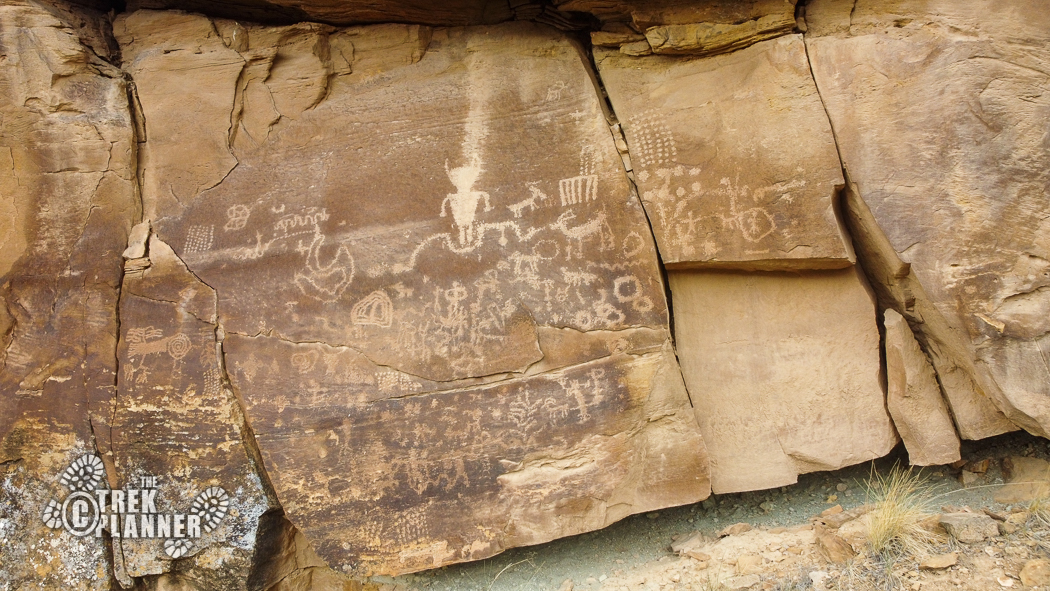
- Granary – there is a steep pull-out on the right side with a viewing portal to see a granary on the cliffs. This incredible structure was built with mortar and stacked rocks and even has a lid! From my picture you can see that the original creators placed branches in a corner too – I wonder why?
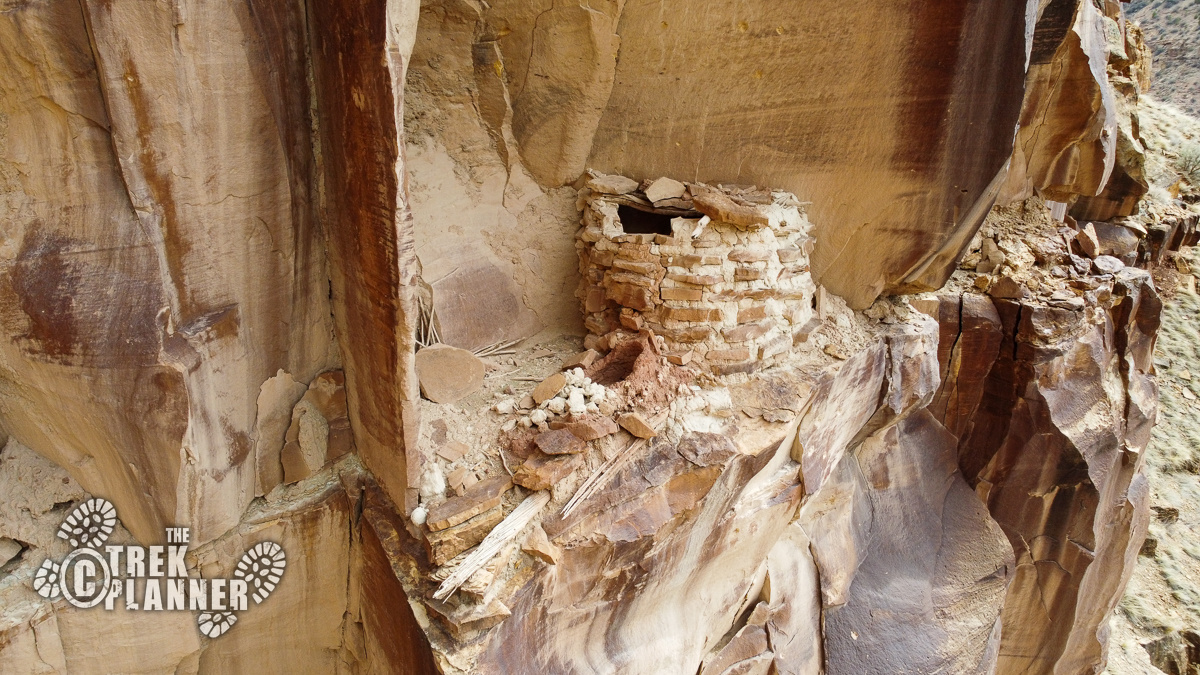
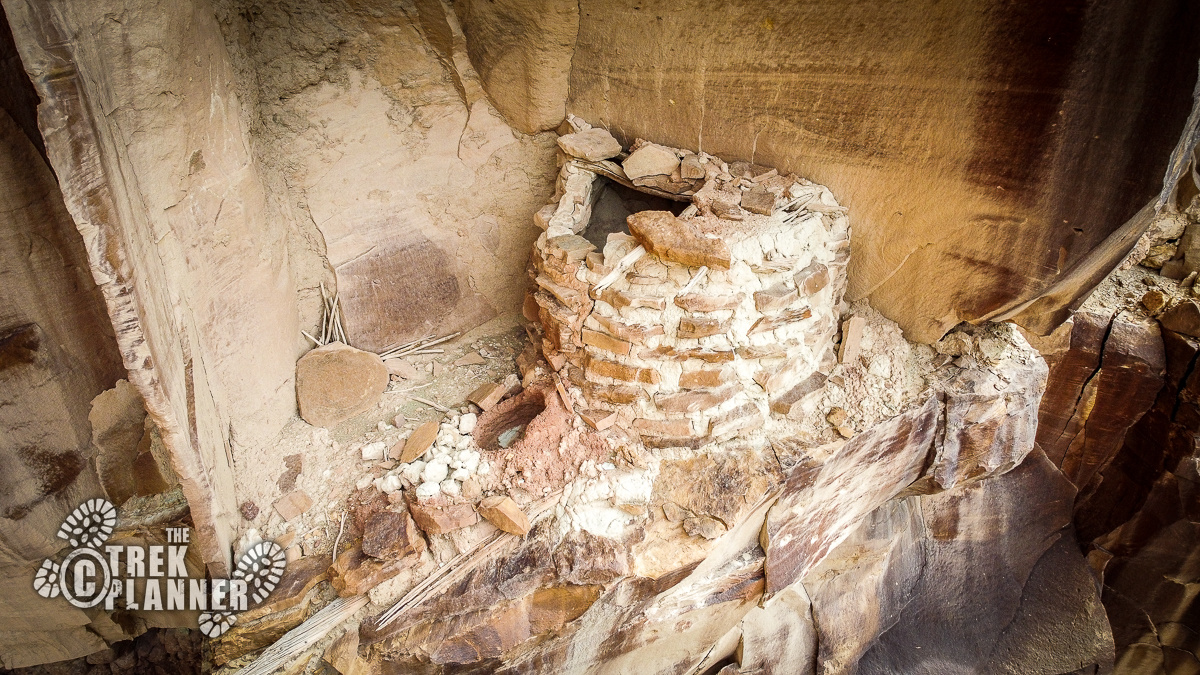
- Unseen Hideout – you can’t see these ruins unless you have a drone or hike the steep terrain to them. There are remnants of an ancient structure. It’s unclear what it was

- Unseen Hideout Entrance – This steep little hideout was made even more of a hideout by adding these stacked rocks to make the visitor crawl under the ledge to the right in order to get access inside!
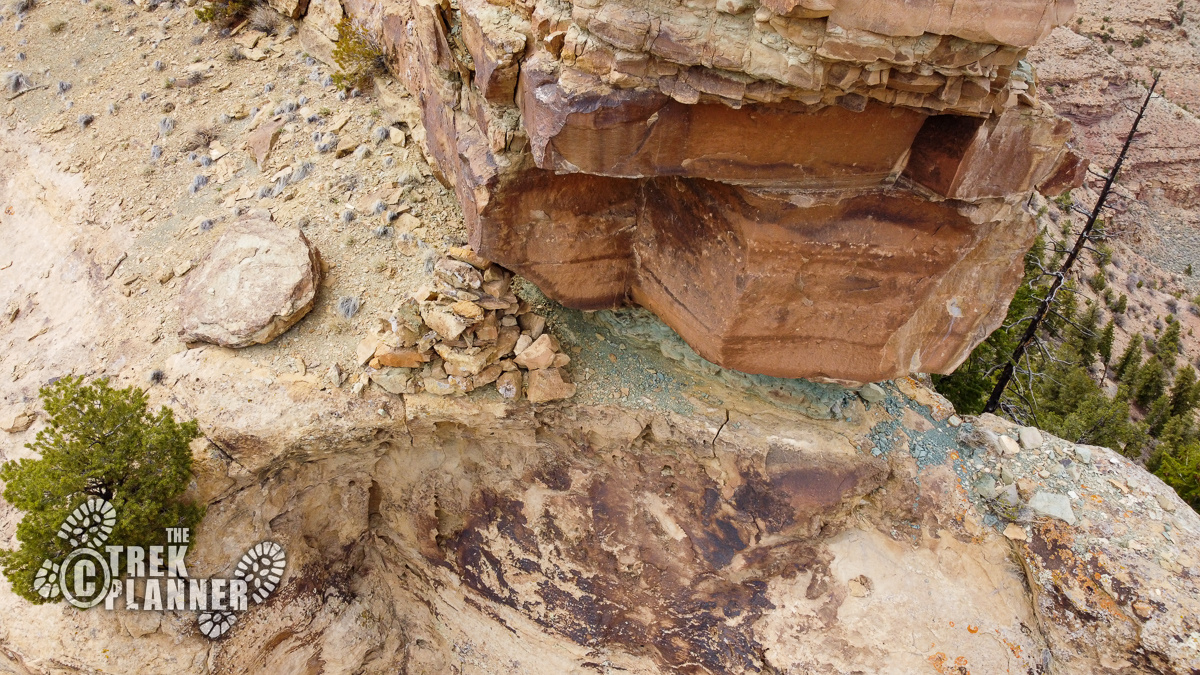
- Man riding large animal – it’s not clear wither it’s a horse, elk, cow, or bear

- Old Stone Structure – These stones stacked on top of each other appear to be from what was a building or fence line.
- Blind Canyon to the left
- Prickly Pear Canyon is to your right. A Jeep trail goes through this canyon and into the mountains.
- Natural Gas Compression Station – you may have noticed signs or the buried natural gas pipeline throughout the canyon. This is one of the compression stations to keep the gas moving through the pipes. You can see the huge fans on the side of the red buildings

- Dry Canyon to your right. There are lots of things to see down here that won’t take up too much extra time. The road is more narrow but you won’t have any problems driving it. The next four items are things to see in Dry Canyon.
- Hunter’s Blind is a ruin underneath an alcove that I found after checking out the Man Leading Sheep glyphs.
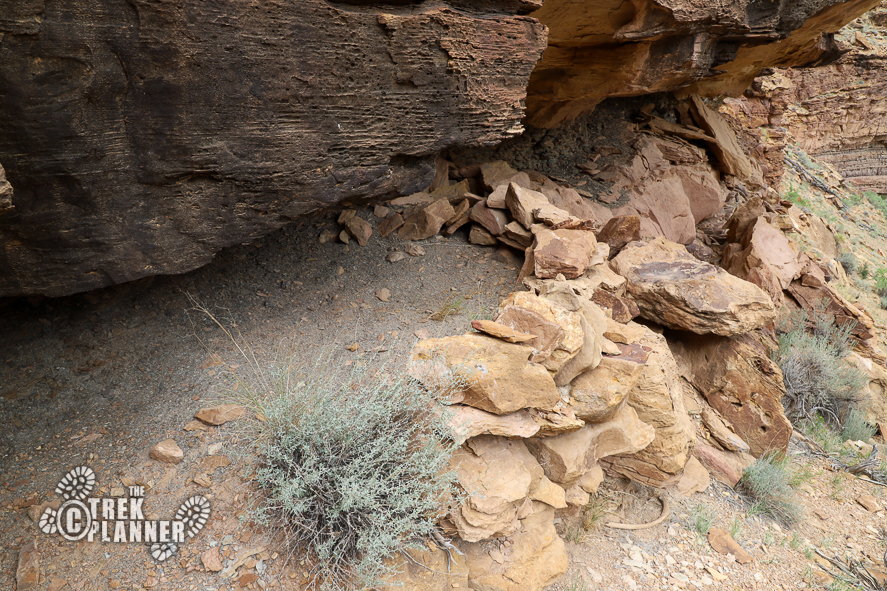
- Spiked Hair Panel. I have seen similar petroglyphs to these elsewhere in Utah. I wonder what the spiked hair signifies or means? There are two very distinctly carved anthropomorphs next to the spiked hair panel.


- The Workshop. This area looks like it was worked at one point. Maybe there was something buried here or it was used to gather resources. There are a couple of holes dug and some stacked rocks
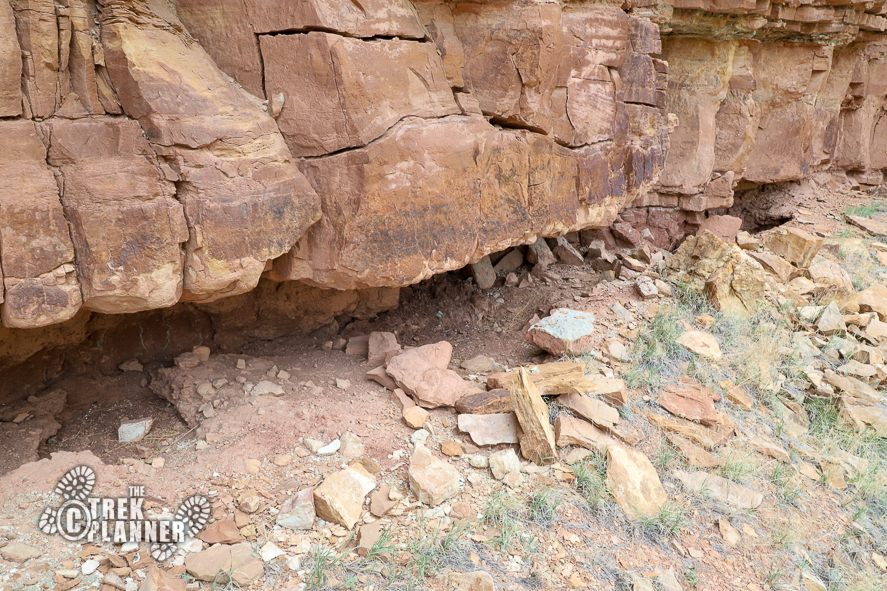
- The Kachina Panel is a must-see in my opinion. It’s full of so many wonderful petroglyphs that you could easily spend 10 minutes here just admiring this panel alone! I call it the Kachina Panel because there are many small anthropomorphs that have horns, antlers, antennae, in all shapes and sizes.
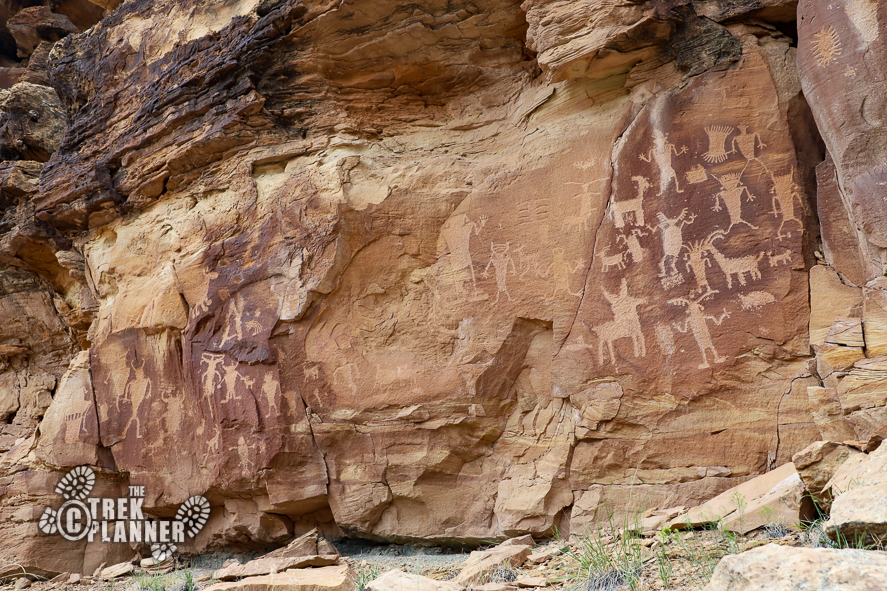


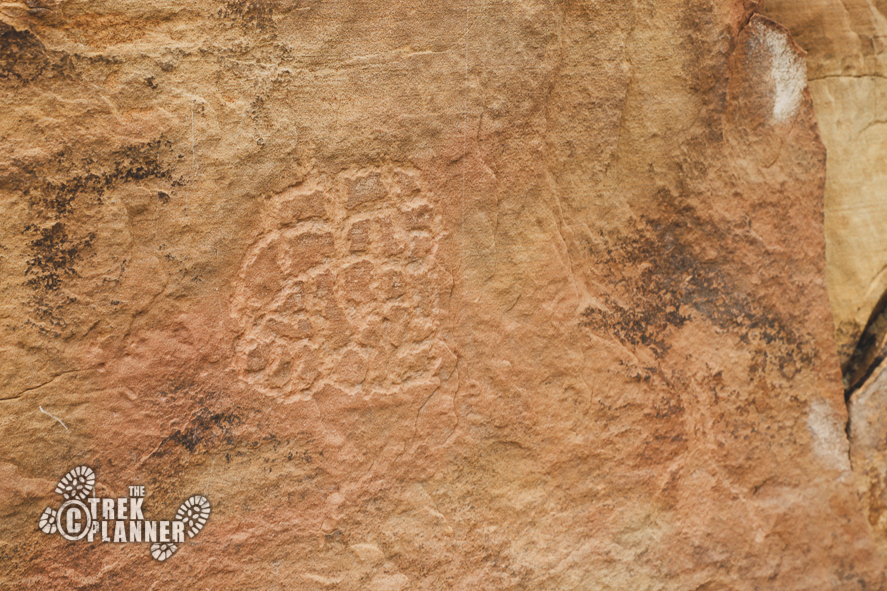
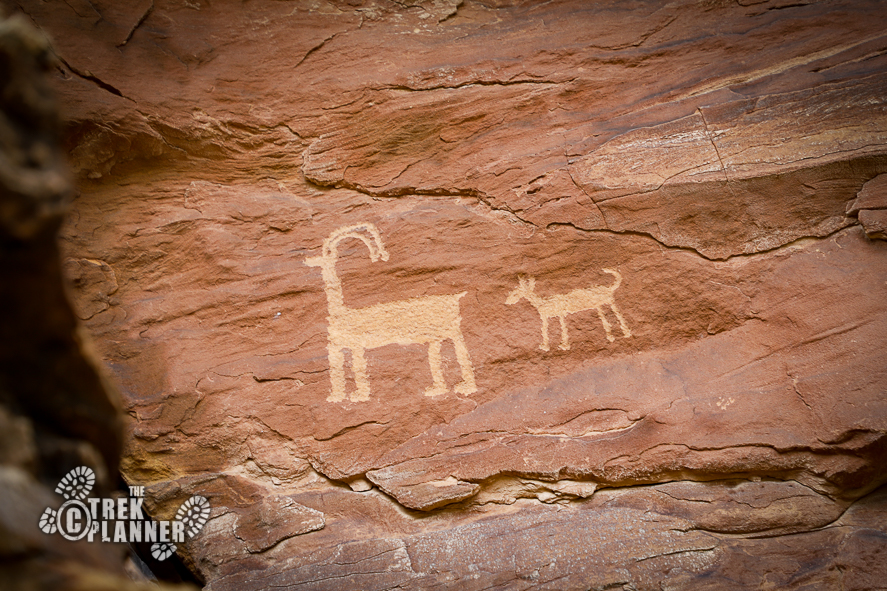
- Man Leading Sheep is an incredible petroglyph that is located about 1,000 ft. away. You won’t be able to see this from the road so hiking to it is required. Why is this man leading the sheep? Or is the man doing something entirely different?
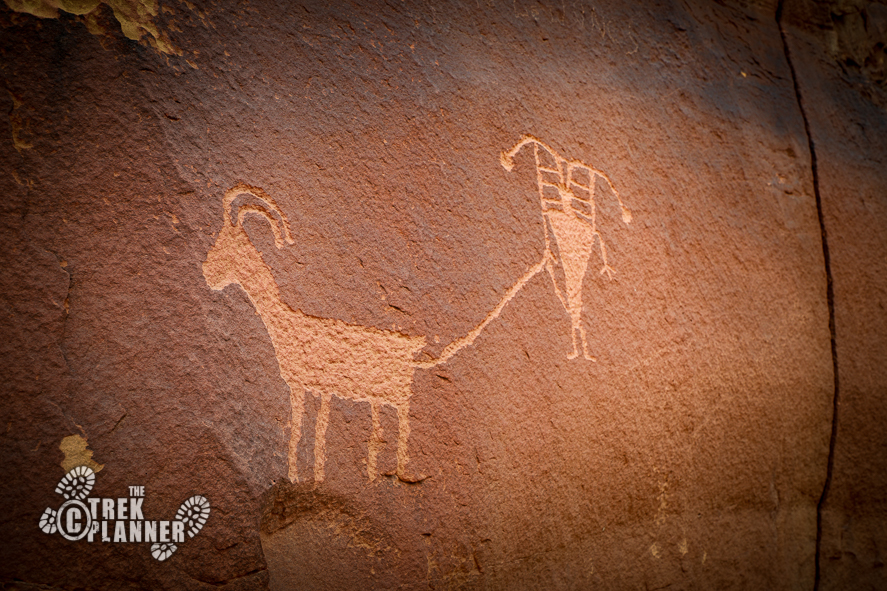
- Crack Sheep Panel. You will need to hike up to see this panel. There are two sets of sheep glyphs and they are all pointed towards this crack in the rock. There is a sheep carved right at the edge of the crack and there is an anthropomorph right behind it with a dog. Almost like they are trying to trap the sheep on a cliff’s edge so they can hunt it!
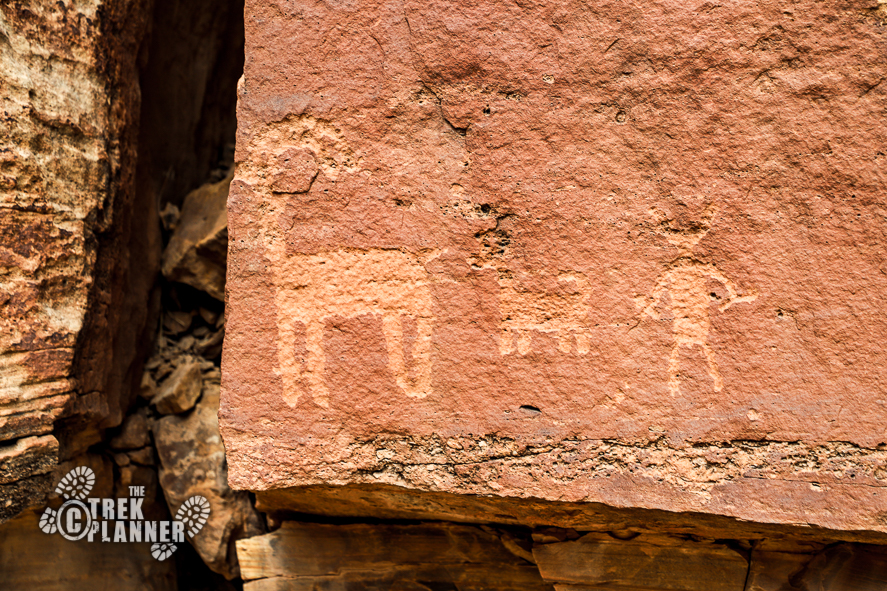
- Sheep City and Double-Headed Sheep Panel. There are so many sheep here it looks like they built a city! You can also see a double-headed sheep
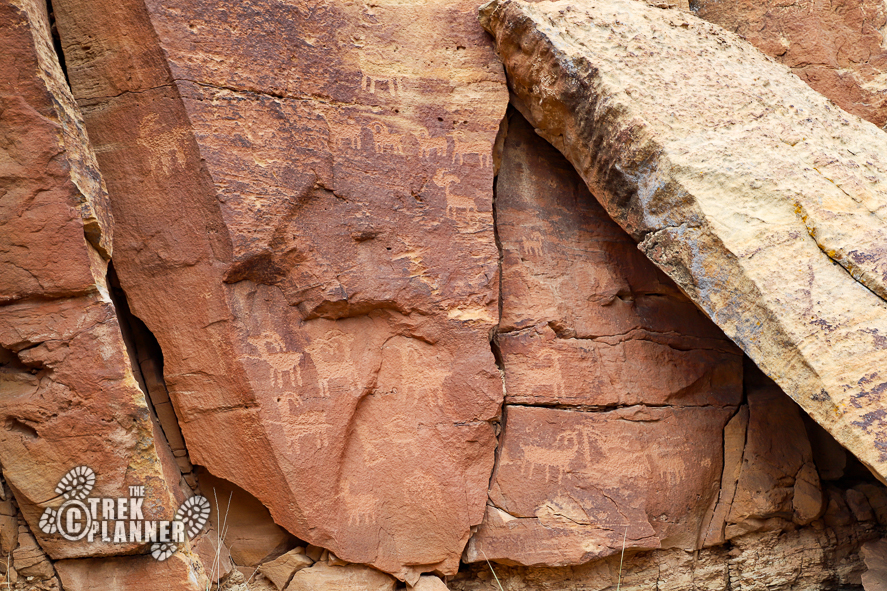
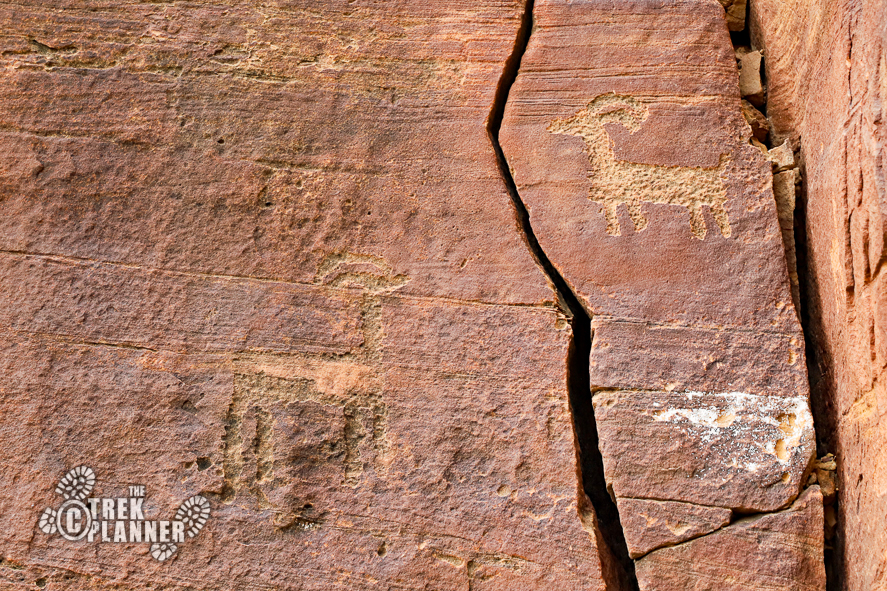
- Mirror Sheep and Rain Man Panel. One of the sheep was carved so it could be easily seen; it has five legs! The other sheep is directly next to it and looks similar in design
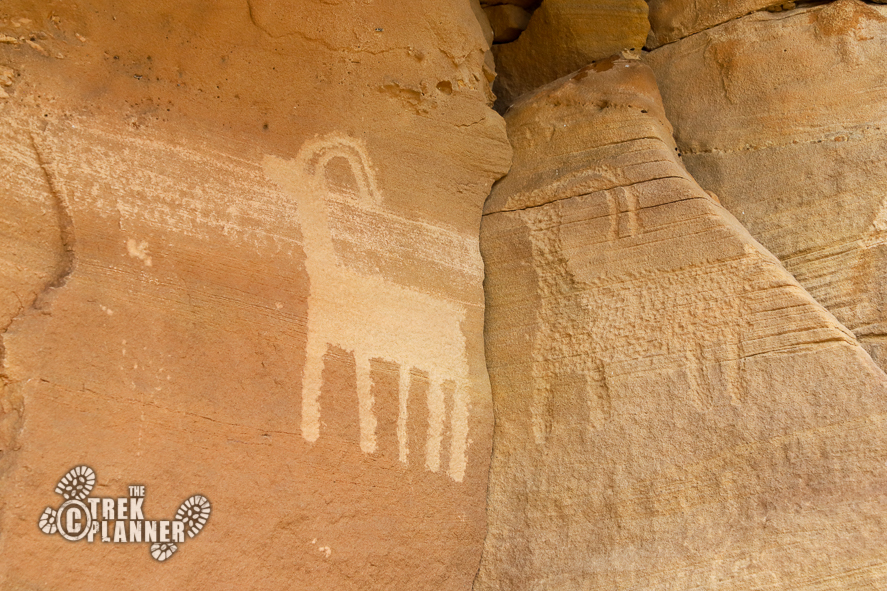
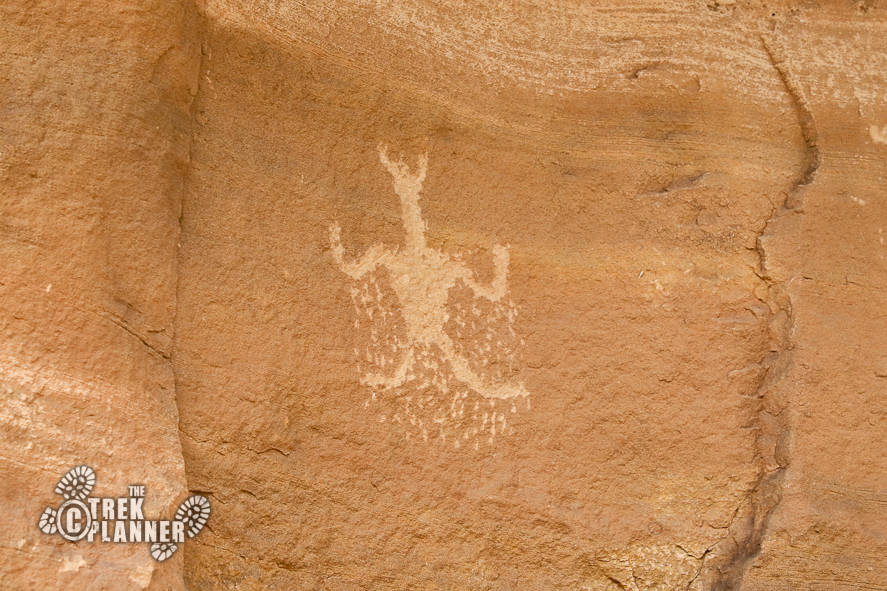
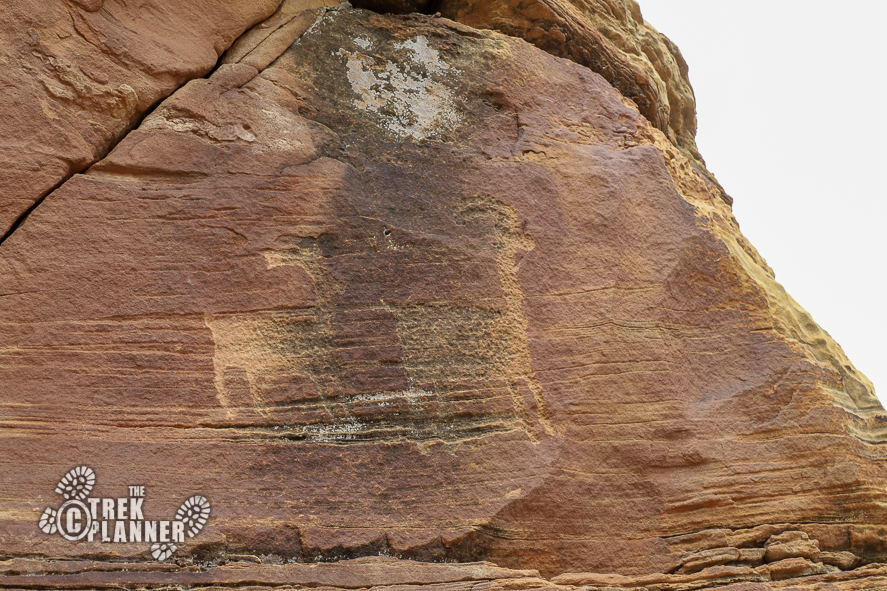

- Cliff Edge Panel is located overlooking the canyon below
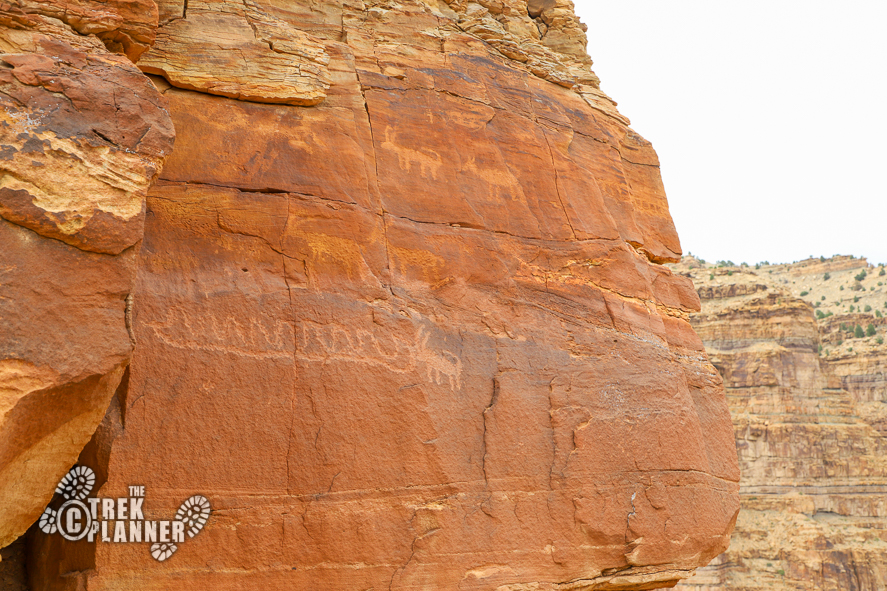
- Ancient Rock Fence. It appears that this fence was used as part of what I’m called the Sheep’s Demise (see below).
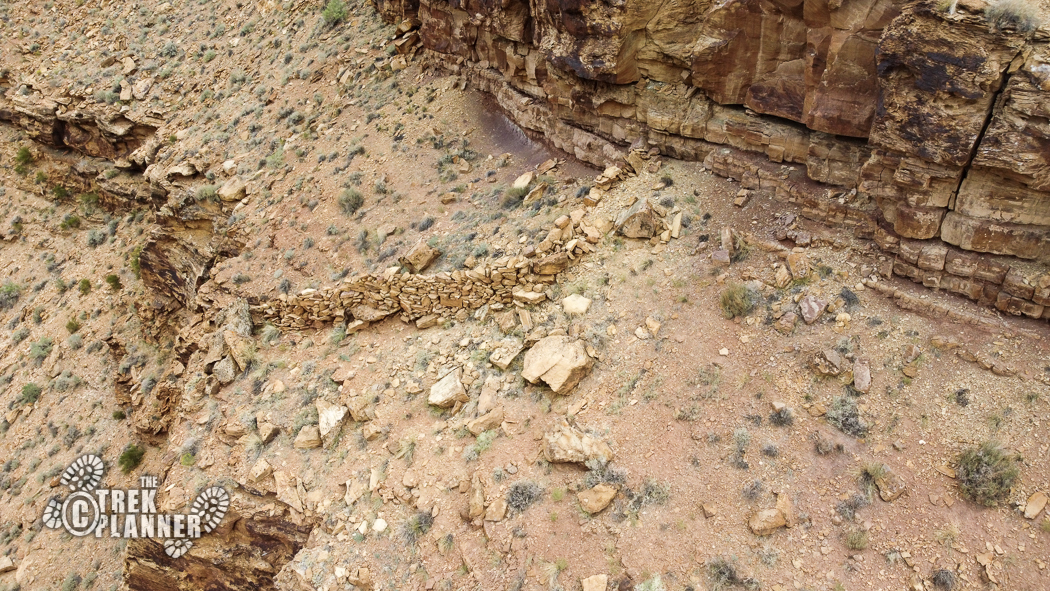
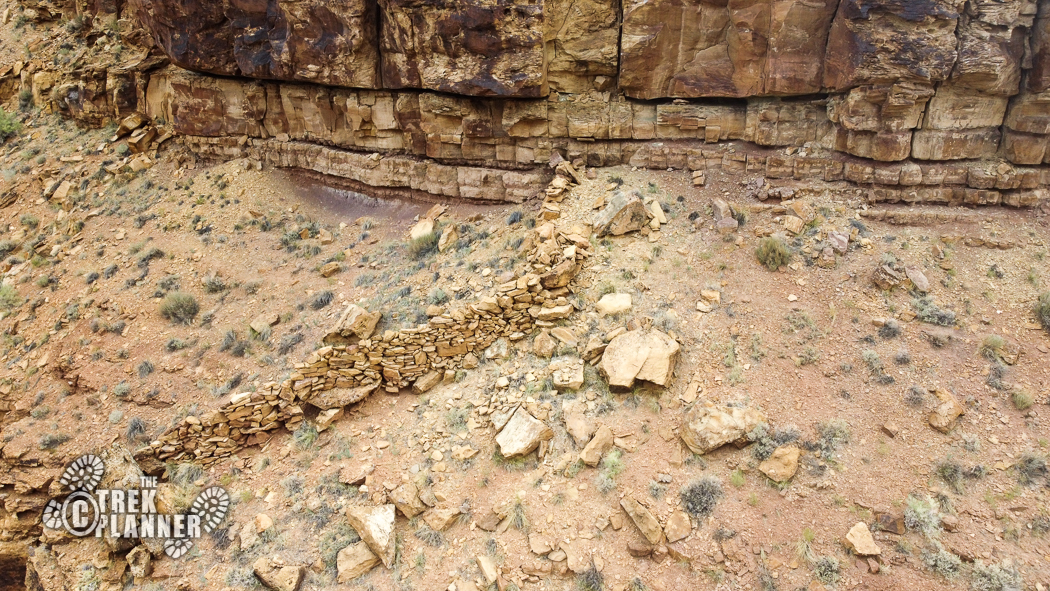
- Sheep’s Demise Gulch. I’m not an archeologist, but this area looks like it was just made to be a place to purposely corral and then hunt big horn sheep. Here is why I’m thinking this: there are dozens of big horn sheep petroglyphs carved on the nearby rocks, some of which have arrows and spears in them. The entire area is shaped in such a way to easily force and corral the sheep into one place without them escaping. There is a ruin that appears to be a hunters blind. When the sheep are forced down the center of the gulch, they will then be forced again to go up the south side where they will come to a rock fence. This fence will keep the sheep from going any further and the hunters can then close in. There are cliffs too so if the sheep jump or fall they will die and be easily taken as well.
- Face and Shield Glyphs (Dry Canyon) – The faces or shields are painted white and red. One features a circle with a line down the center and two small circles on either side. You will need to go down Dry Canyon to view these. The pictographs will be on your right side under a rock ledge.
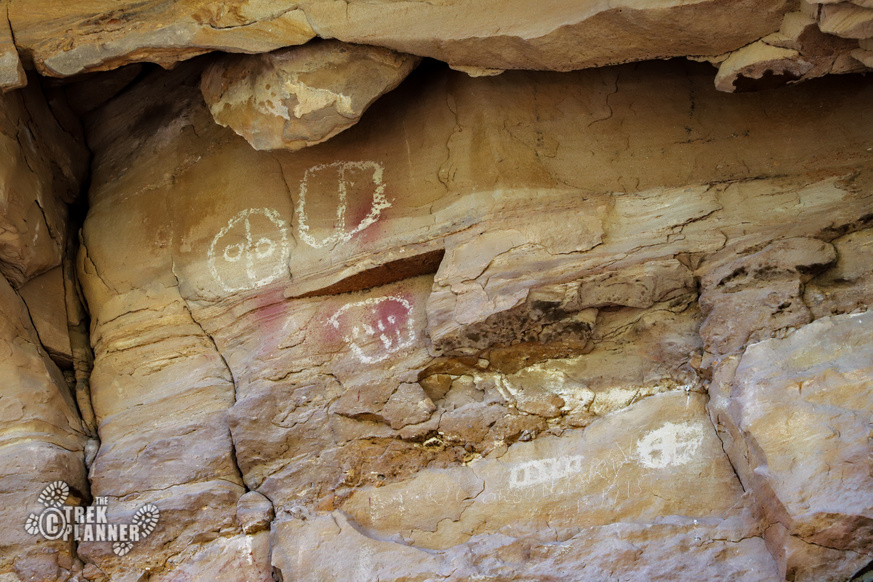
- The Mummy (Dry Canyon) – The Mummy is a rock feature that looks like a standing mummy.
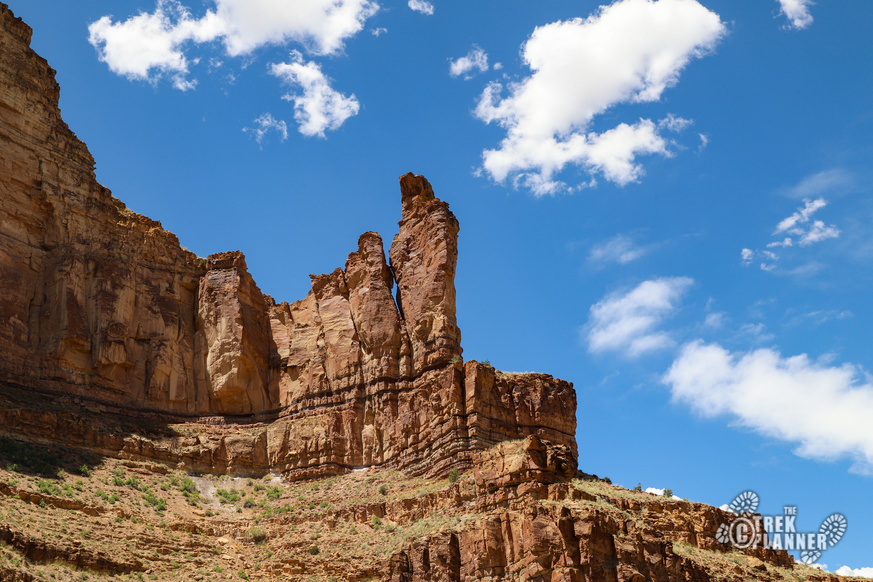
- Painted Star Panel is located underneath a rock ledge. It’s painted in white and is still in great condition. There is a figure and a star with a zigzag tail
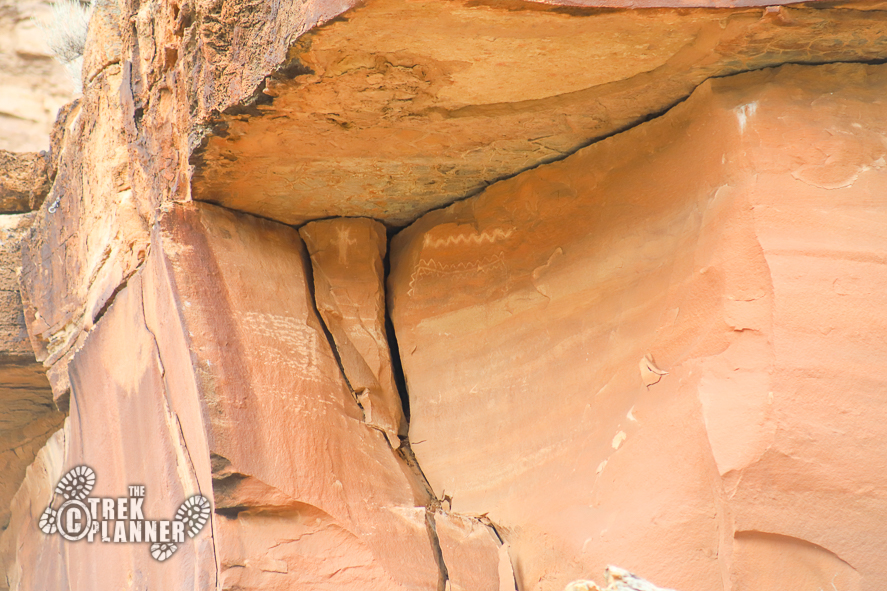
- Fremont Fortress seems to be defensive in nature. The only way on top of it is over a rock wall where the Fremont stacked rocks at the entrance.
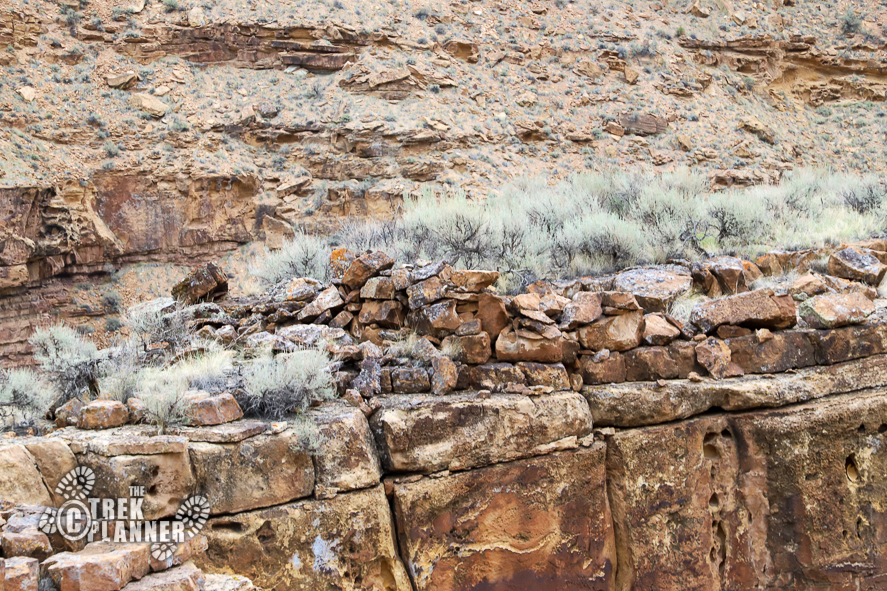

- Sheep Hunt Panel is where you can see a hunter with a bow and arrow hunting several big horn sheep
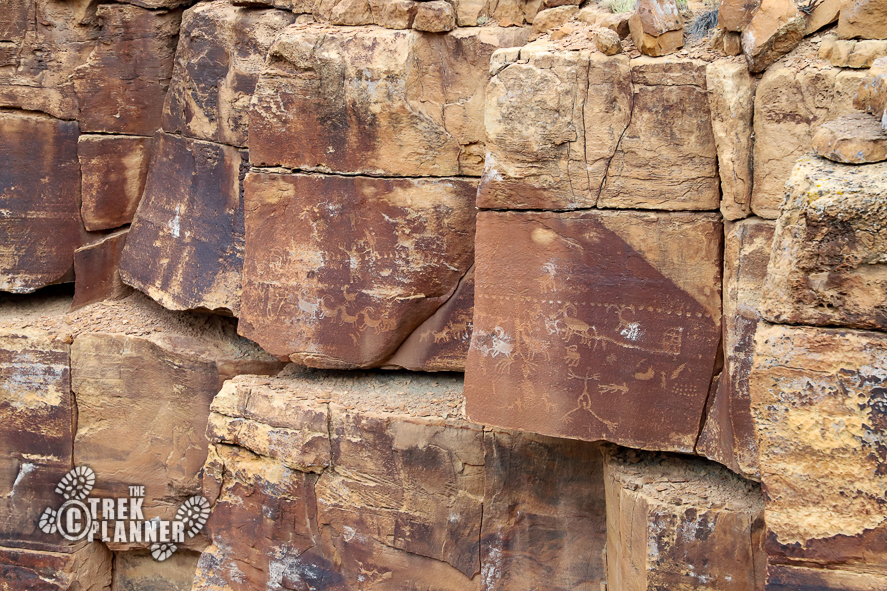
- Ancient Ruin 1 (approximate location). I couldn’t get a good GPS coordinate on this, but it’s somewhere near this spot. You will need to hike to see this ruin. You can see a circle of rock that was made into some sort of shelter or hunter’s blind.
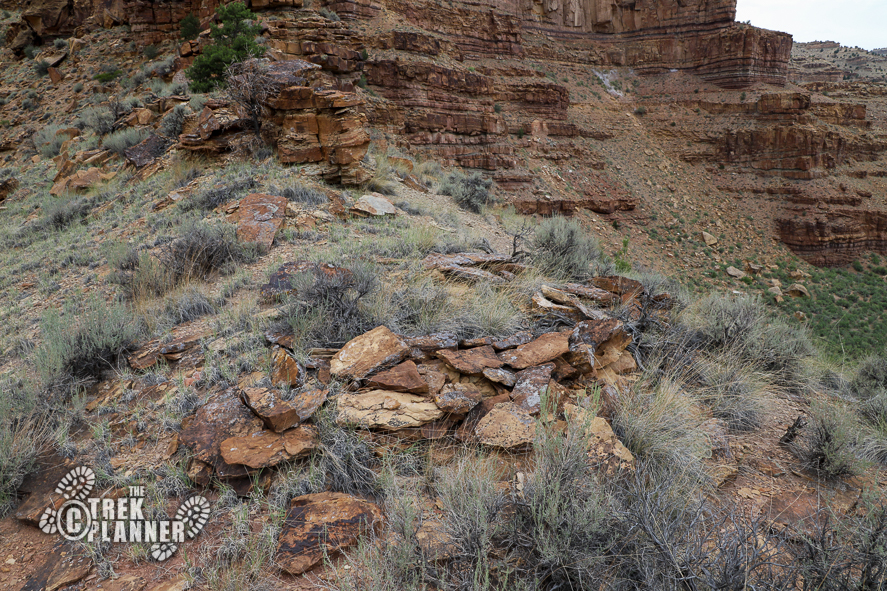
- Ancient Ruin 2 (approximate location). I couldn’t get a good GPS coordinate on this, but it’s somewhere near this spot. You will need to hike to see this ruin. This ruin is very old and in bad condition. You can still see several layers of stones placed on top of each other to make a structure of some kind.

- Circle Ruin is located higher up and worth the hike to it. I spent about 1/4 mile hiking to it and saw several petroglyphs along the way. It could be seen from the road, but basically impossible unless you know what you’re looking for. This rock structure has fallen down on one side, but the side that is still standing is very enjoyable to see!
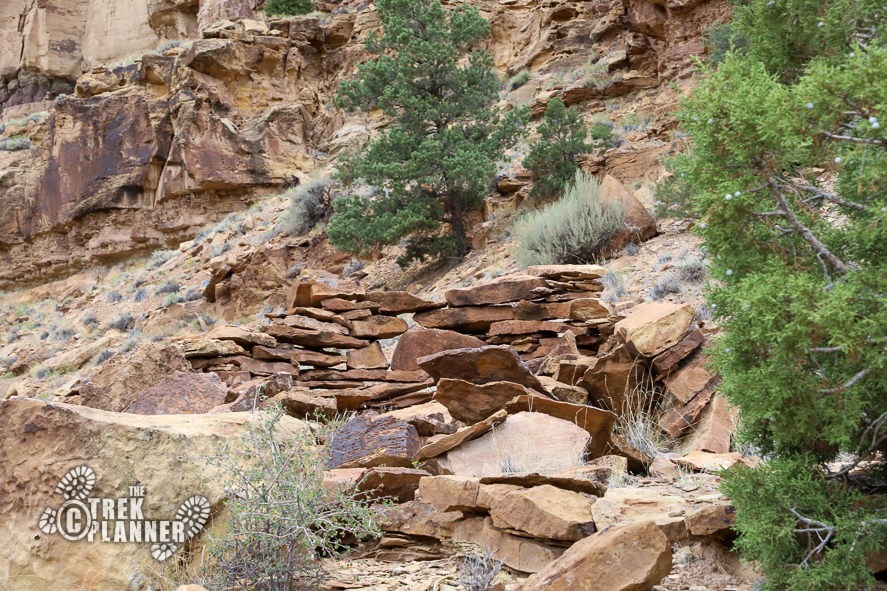

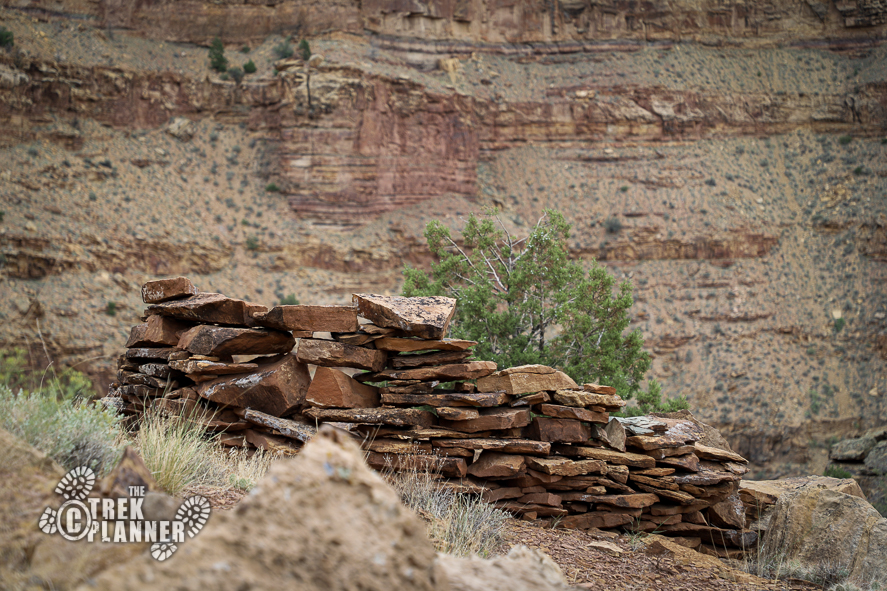
- Cliffside Condo Ruins can’t be seen unless you have a drone. There are several ruins here and I’m not sure what they were used for.
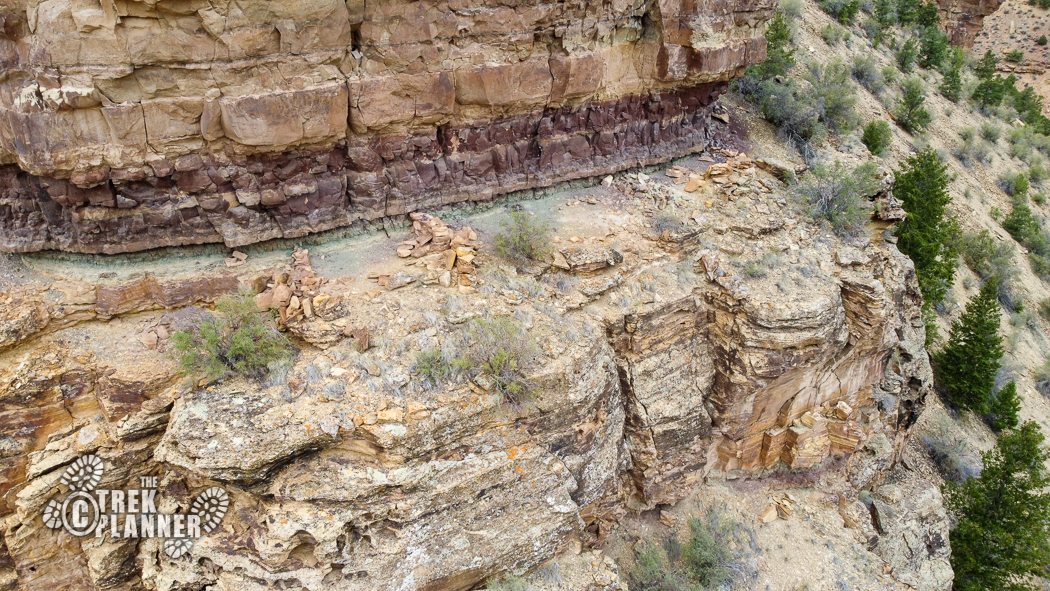
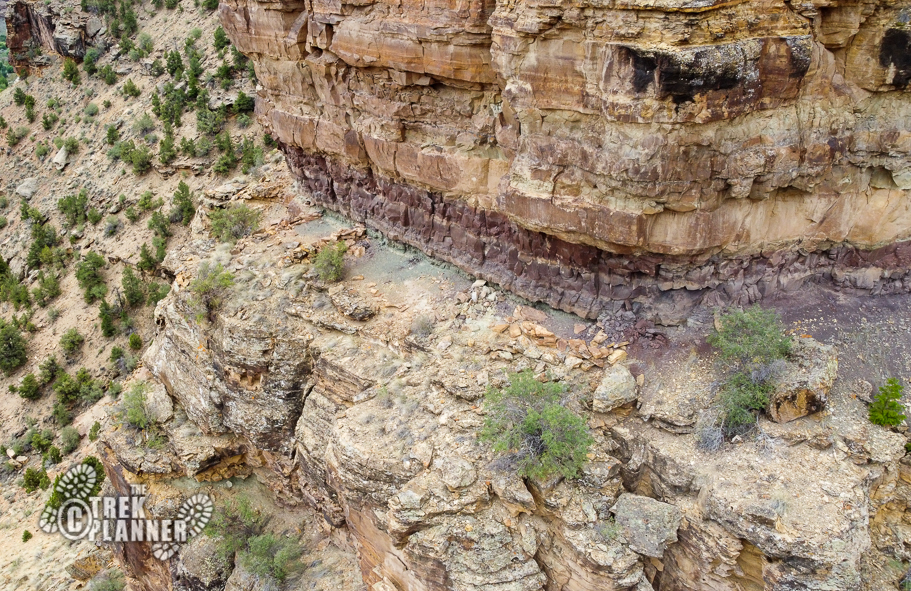
- Spiral Snake Panel (Dry Canyon) – You can see this fantastic panel right from the road, but I recommend getting up close to these beautiful petroglyphs. Some highlights are the spiral snake and a figure with a crab head or four antennae.
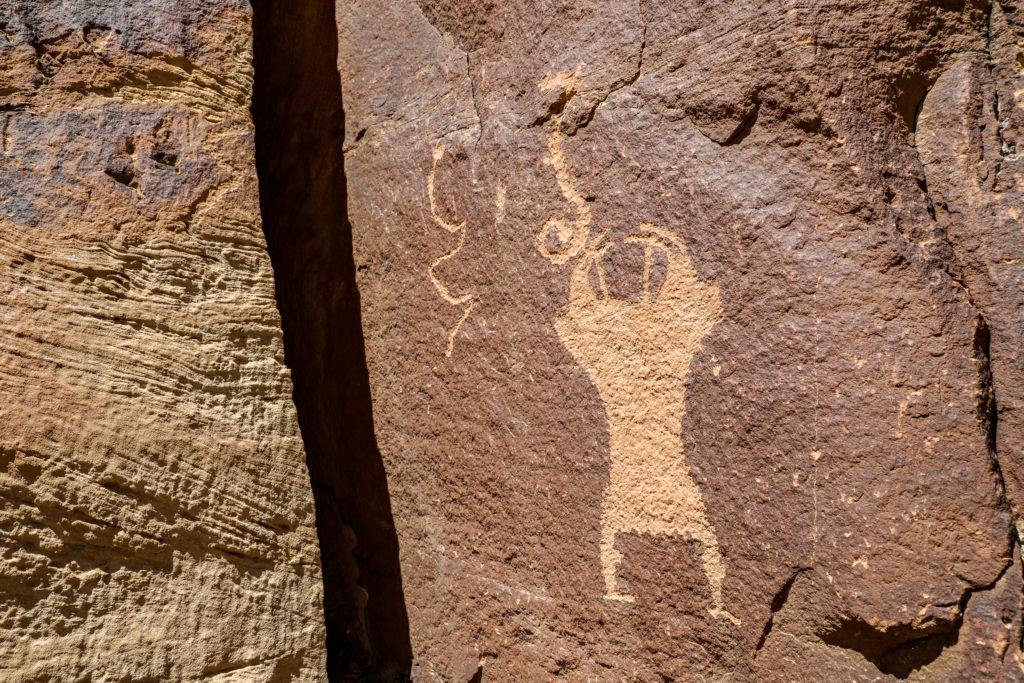
- Rivers Panel (Dry Canyon) – You will then need to get out of your vehicle and hike along the rock wall about 250 ft to see the rock art. Are these rivers or are they supposed to be blanket patterns or something else?

- UFO Petroglyph – I know this isn’t really a UFO, but it looks peculiarly like a craft of some kind
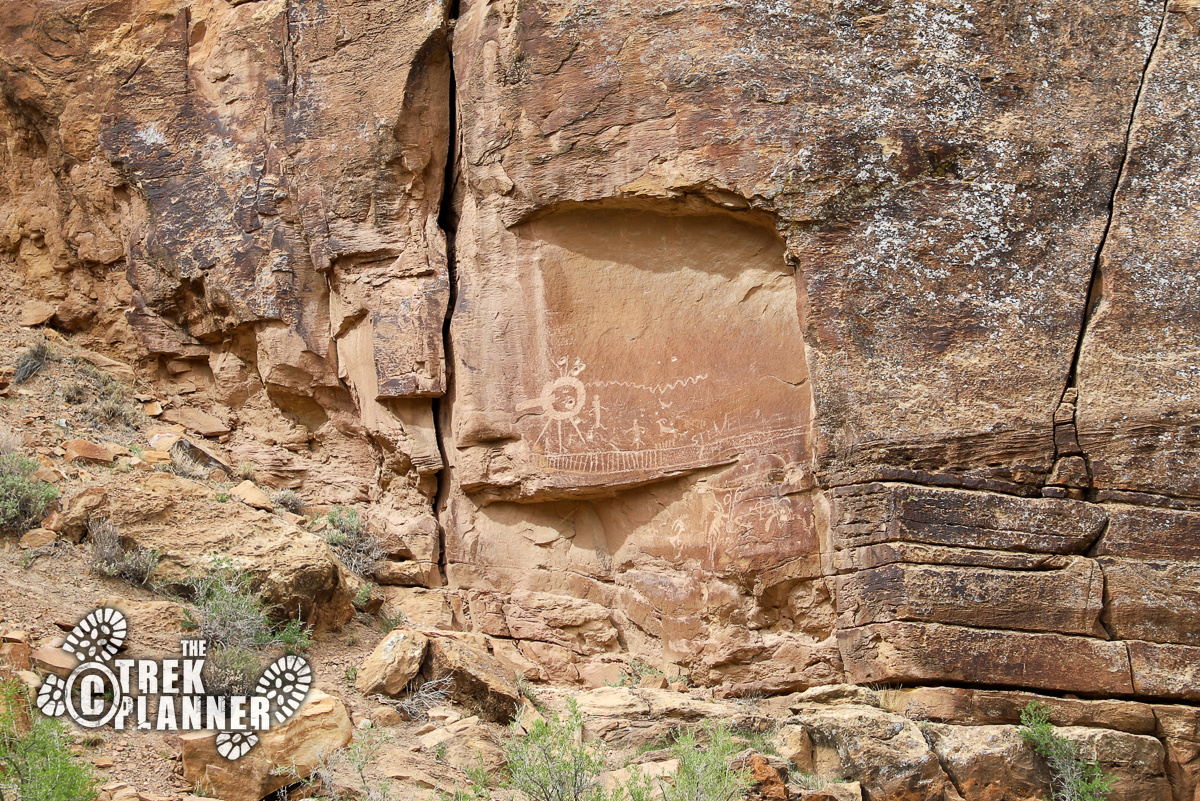
- Daddy Canyon Complex – This is an amazing area with incredible petroglyphs and pictographs that you must spend lots of time seeing. Take the short hike at the parking area and visit many Fremont and Ute rock art. Pit style bathrooms are located here.




Daddy Canyon 
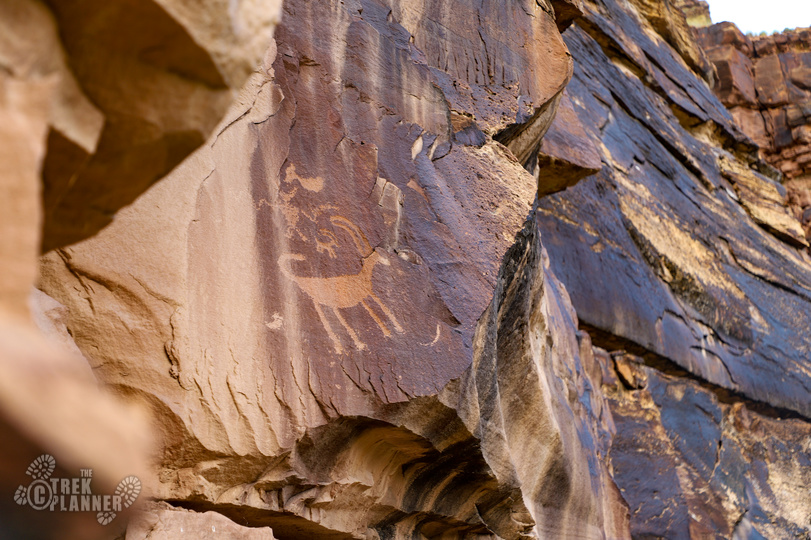
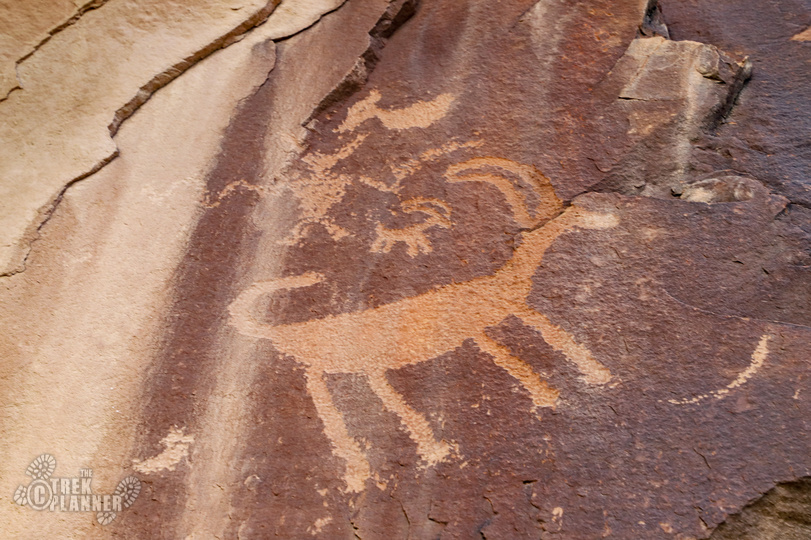

- No Trespassing Glyphs (Rasmussen’s Cave) – the land owner was clearly annoyed at people trespassing on his land trying to view the rock art up close. He decided to make a strong statement and paint over a pictograph of a red elk. I can understand the land owner’s frustration, but this one act done in anger by the land owner has forever destroyed this magnificent pictograph. The cave is just a small alcove next to the road.

- Marching Sheep Panel looks like a bunch of big horn sheep are marching in a straight line.
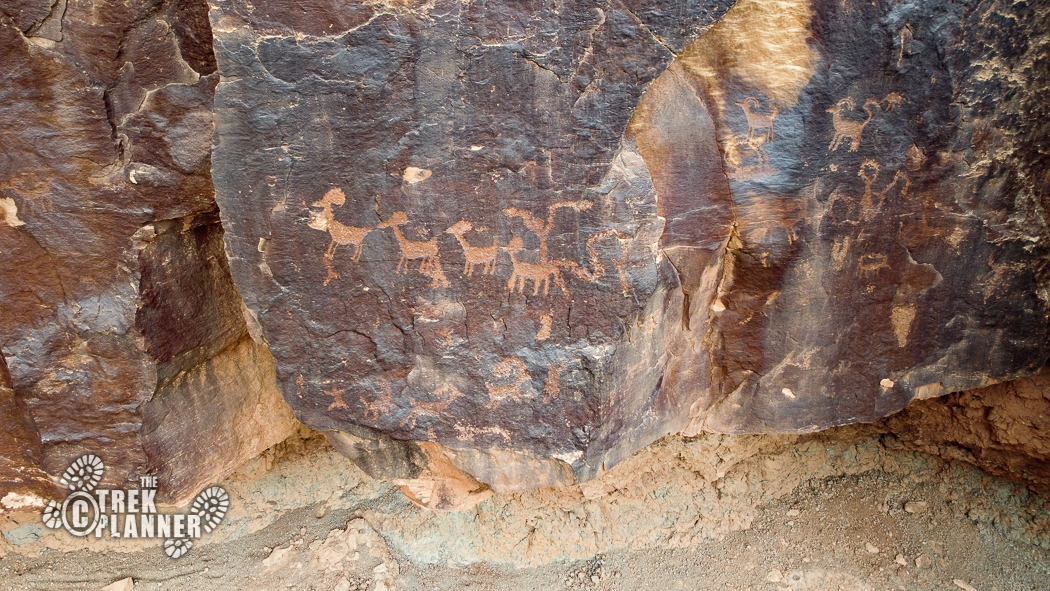
- Daddy Canyon is to your left. Many of the petroglyphs are located on the walls near the canyon floor. It is quite a remarkable canyon! From the pamphlet I got from the Office of Tourism in Price, Daddy Canyon “probably received its name from Katherine Nutter when she referred to her husband Preston. She was much younger than him and always referred to him as “Daddy,” “Daddy Dearest” and “My Daddy” in her letters to him.” What a strange couple! Preston was a major cattle herder in the area with thousands of cattle roaming here before.
- Swastika – (not visible unless you use a drone or hike to it) The swastika looks old, but I’m not sure if it’s ancient or not. The swastika was a symbol used by ancient Native peoples, but was most likely used as vandalism here.
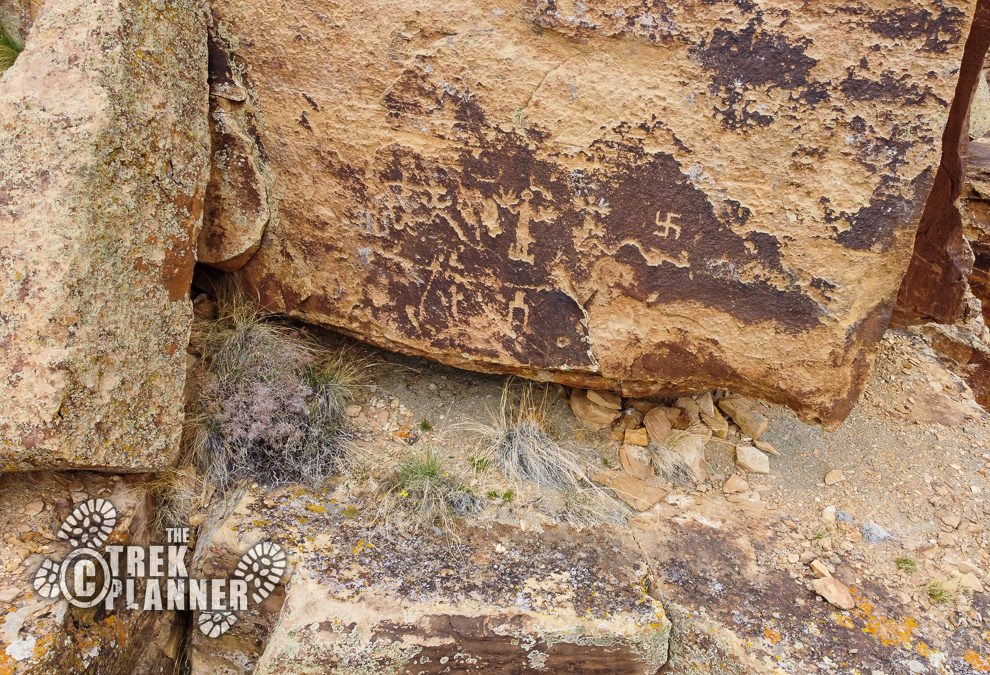
- Broken Shelter – (not visible unless you use a drone or hike to it) – you can see how the Fremont built up this little cave by stacking rocks on the bottom
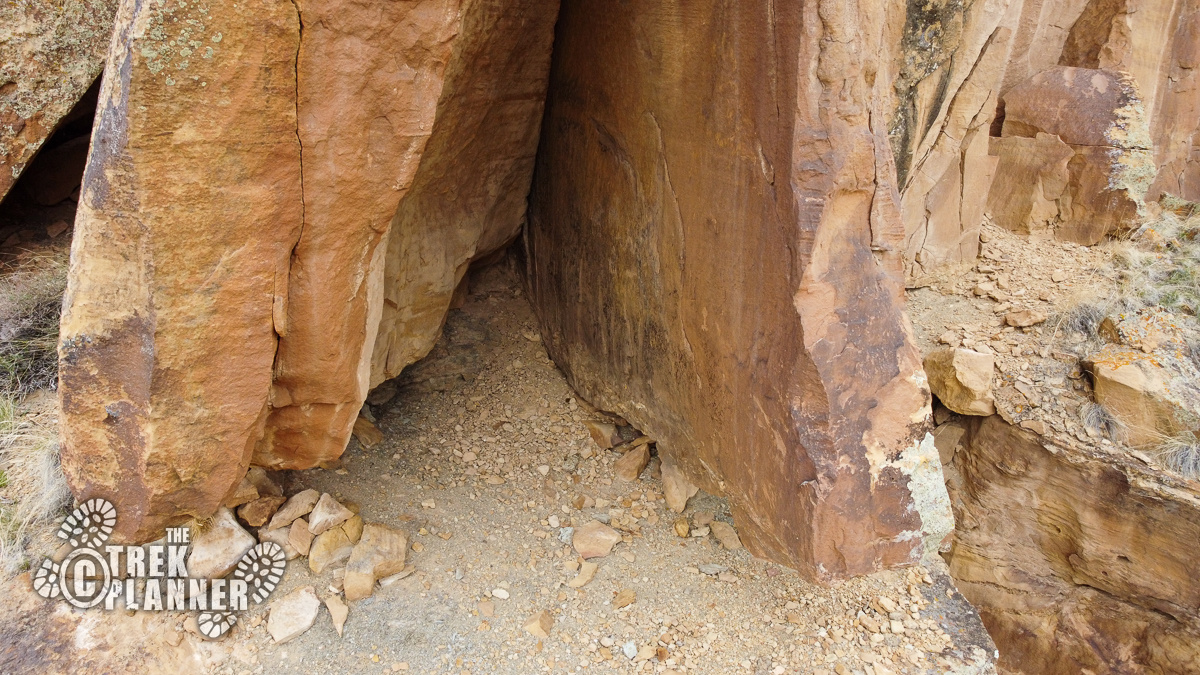
- Wine Opener Glyph – (not visible unless you use a drone or a telephoto lens) Looks like a wine opener (not really, but kind of)
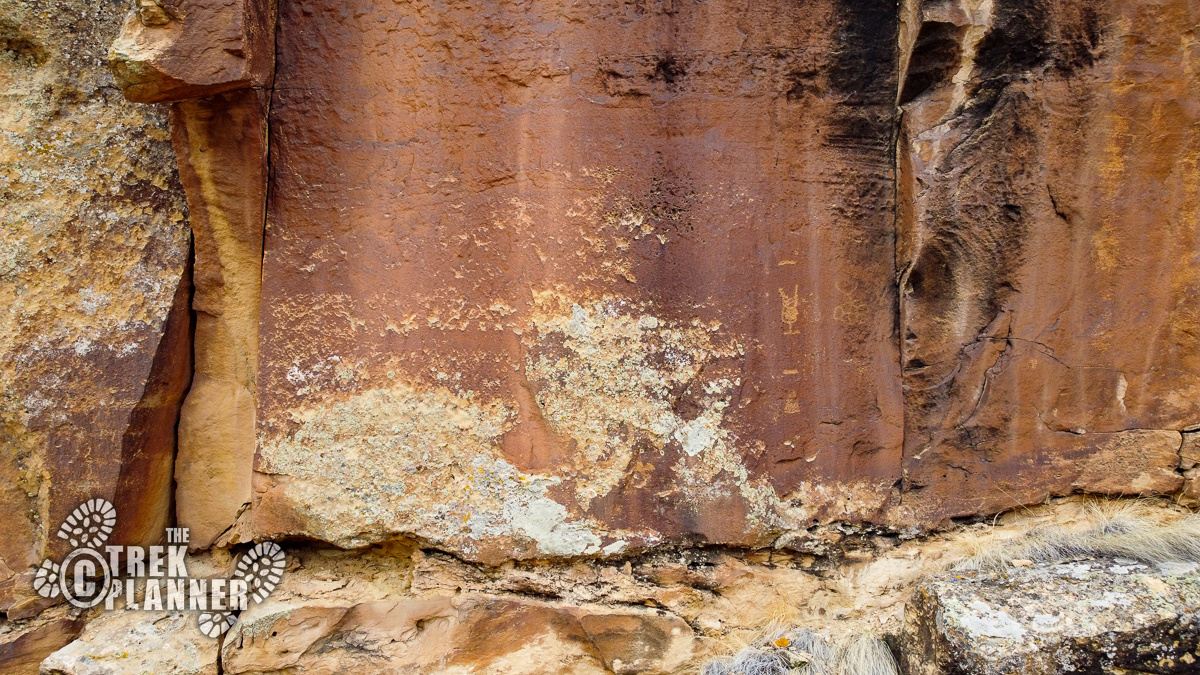
- 3 Grinding Marks – (not visible unless you use a drone or a telephoto lens) a petroglyph and it appears someone ground some marks on this boulder
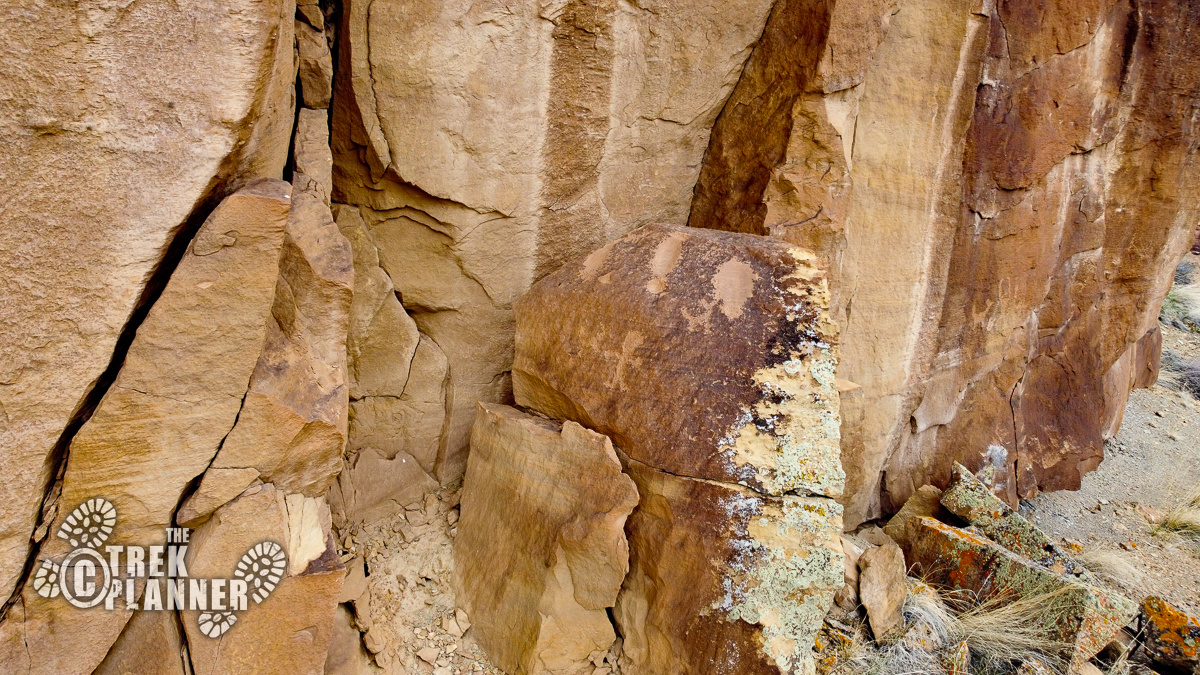
- Odd Symbol – (not visible unless you use a drone or a telephoto lens) Not sure what this one is. Any ideas?
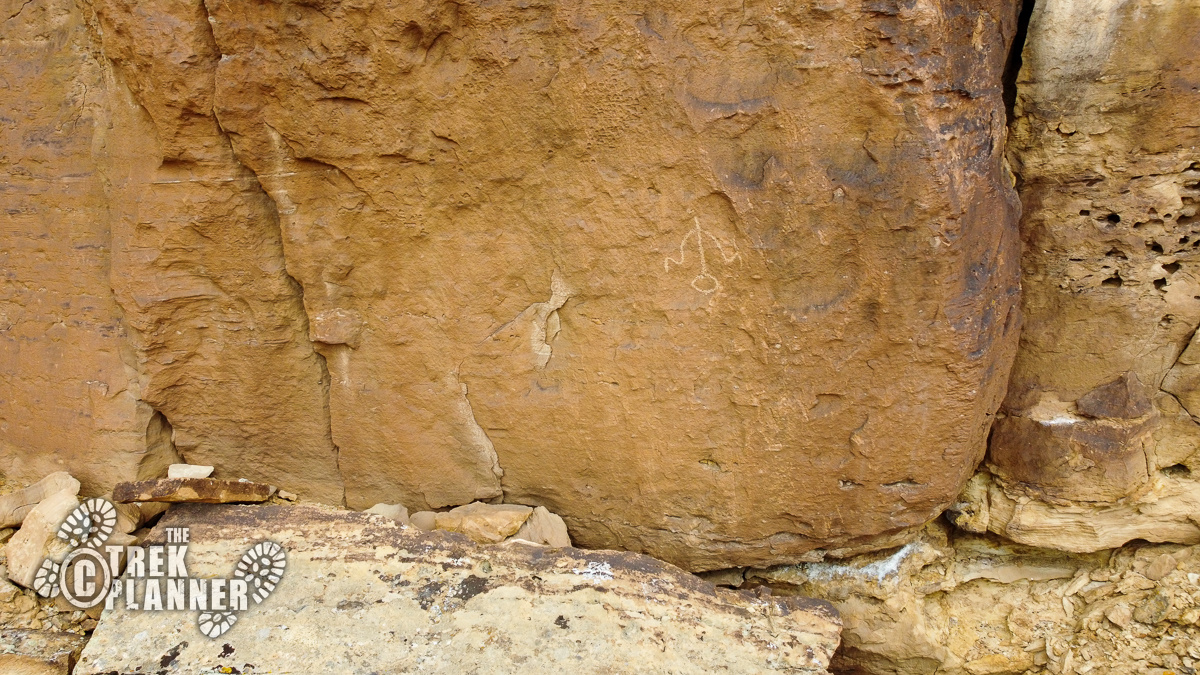
- X Marks the Spot – (not visible unless you use a drone or a telephoto lens) An “X” symbol with two hooks on the tops.
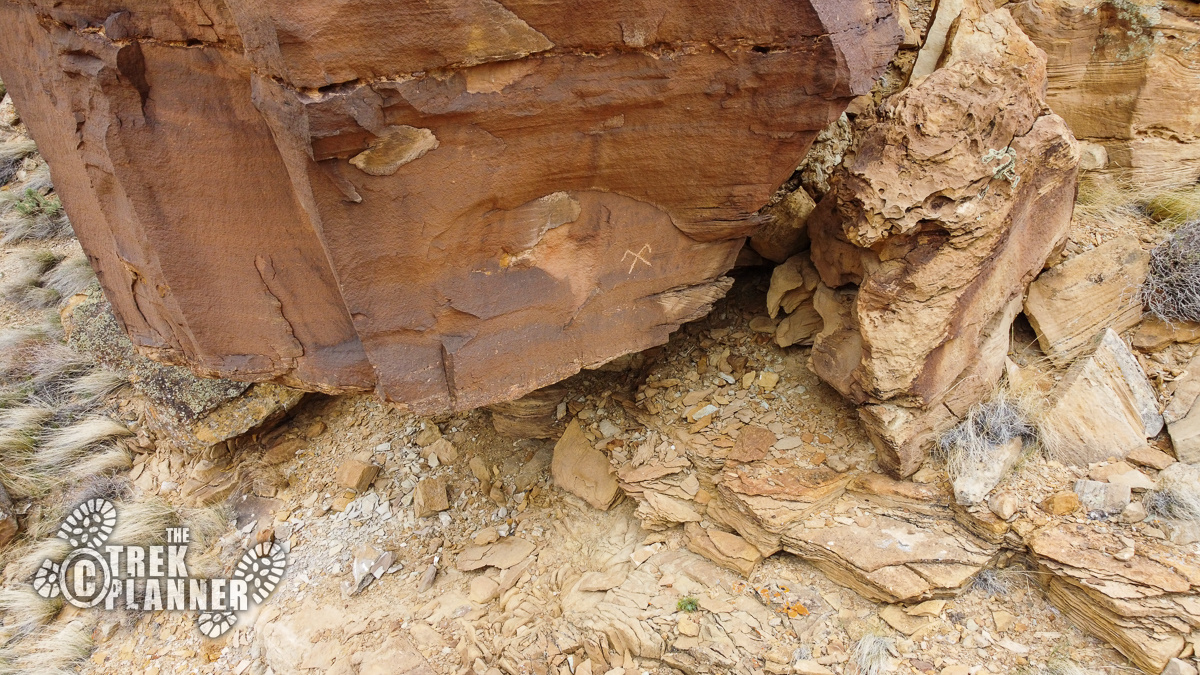
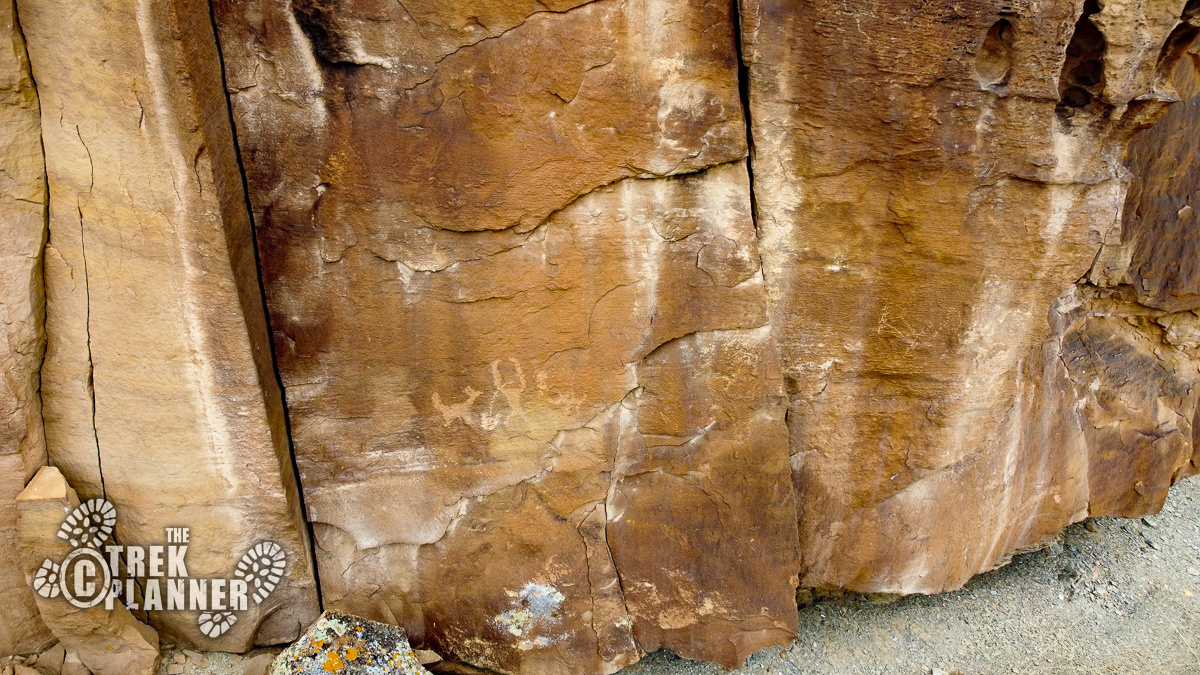
- Lookout Ruin is impossible to see from the road. You will need to hike to it or use a drone if you have one. It would have a great vantage point of both up and down the canyon.
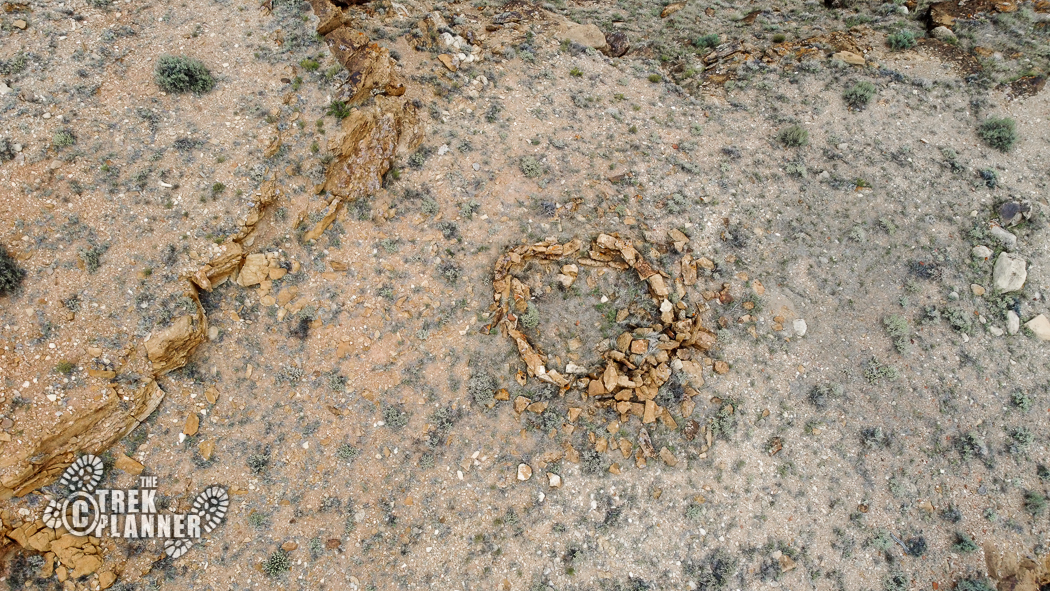
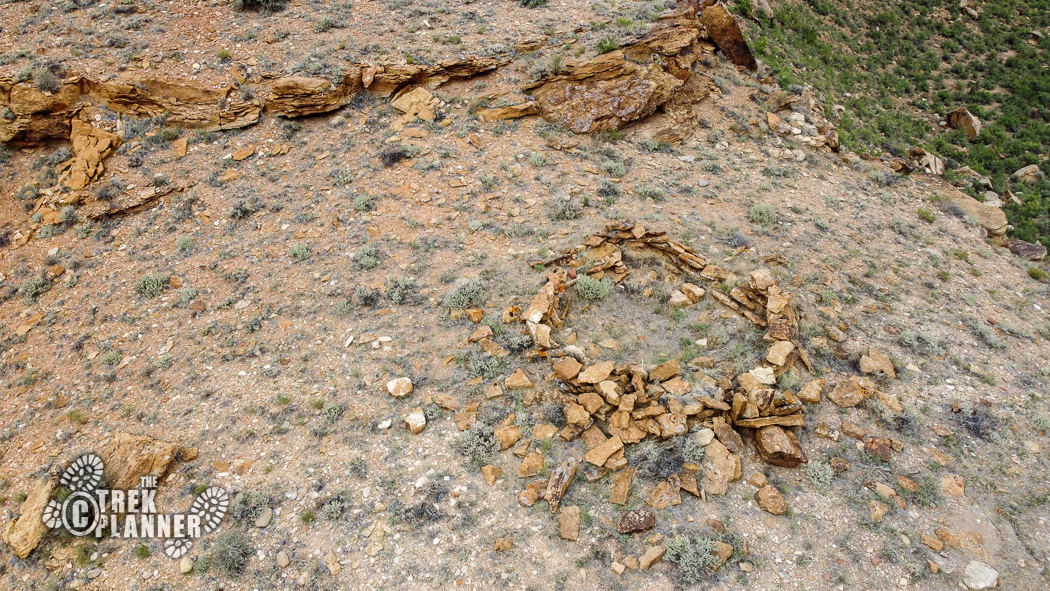
- On the south side of the creek, you will see the River Feet Panel. You will need to hike over to it in order to see it, or fly a drone there.
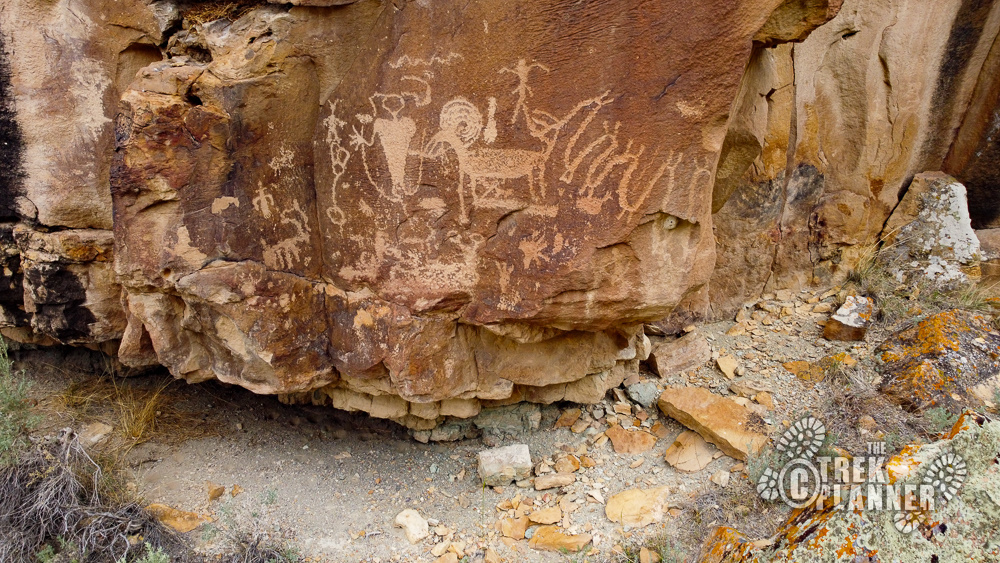
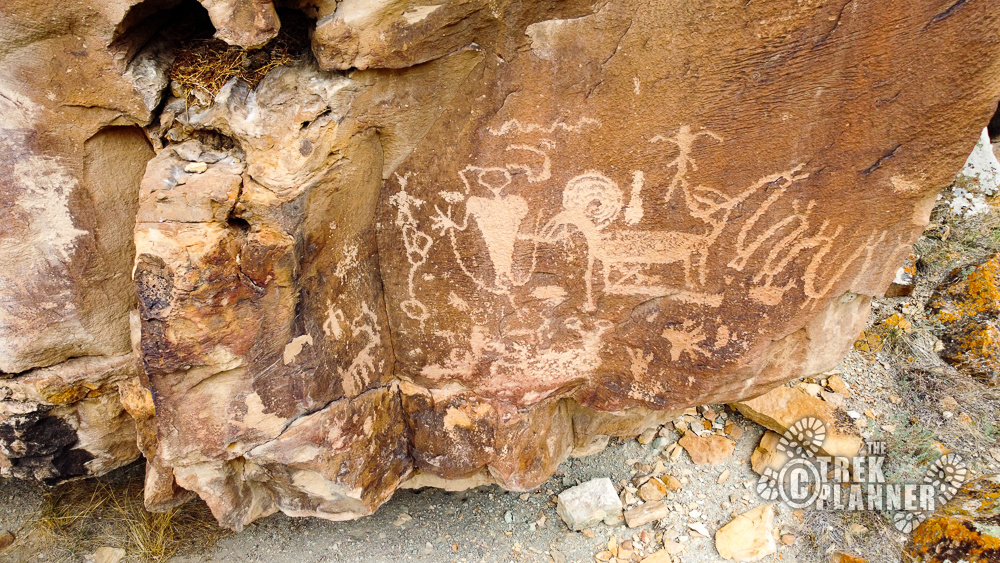
- On top of the rocks above the River Feet Panel, you will see a Square Ruin and also some other piles of rocks. You can see that these structures were once much larger, but have since crumbled
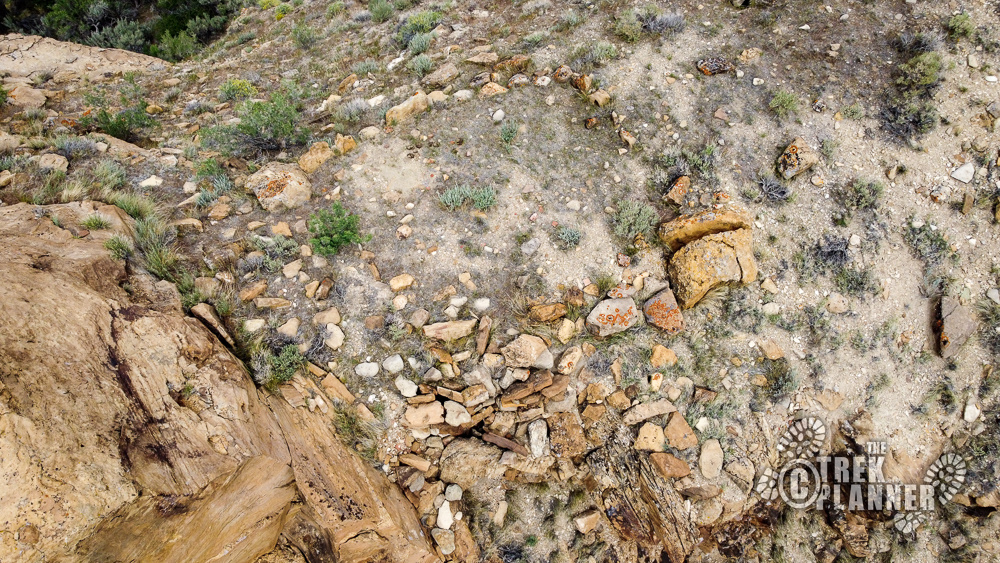
- Busy Panel – on the south side of the creek on the base of some small cliffs, you will see many different types of fascinating petroglyphs. You will see many big horn sheep, other animals, some anthropomorphs, symbols, and more! You will need to hike to these petroglyphs in order to see them.
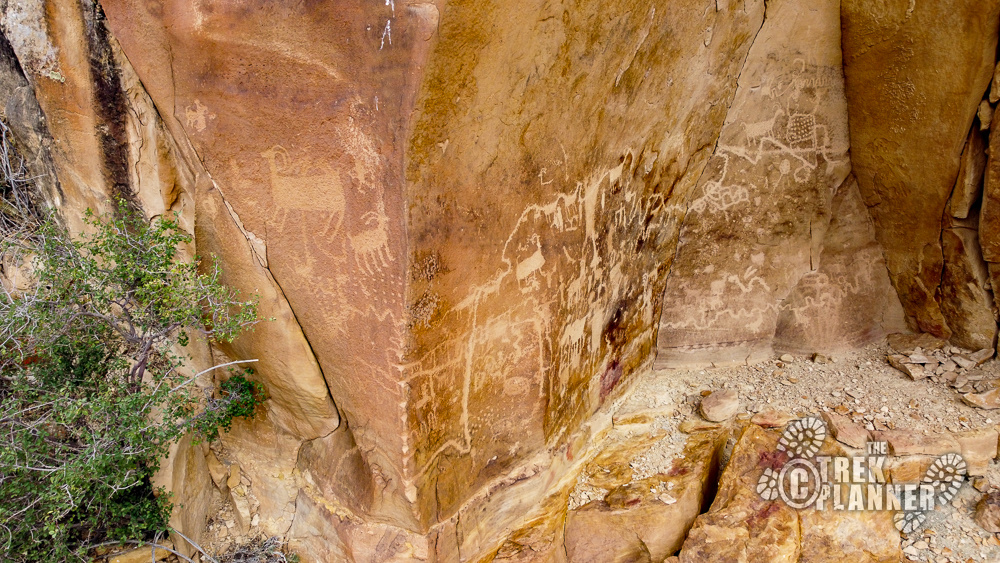
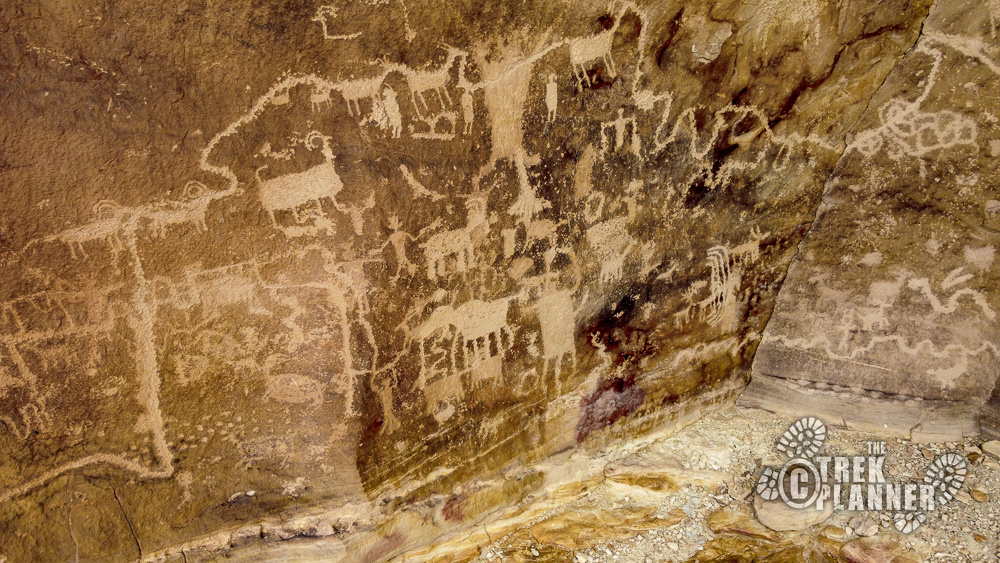
- Black Rainbow Pictograph – this incredible pictograph panel is faded, yet you can still see a black rainbow and a colored pictograph
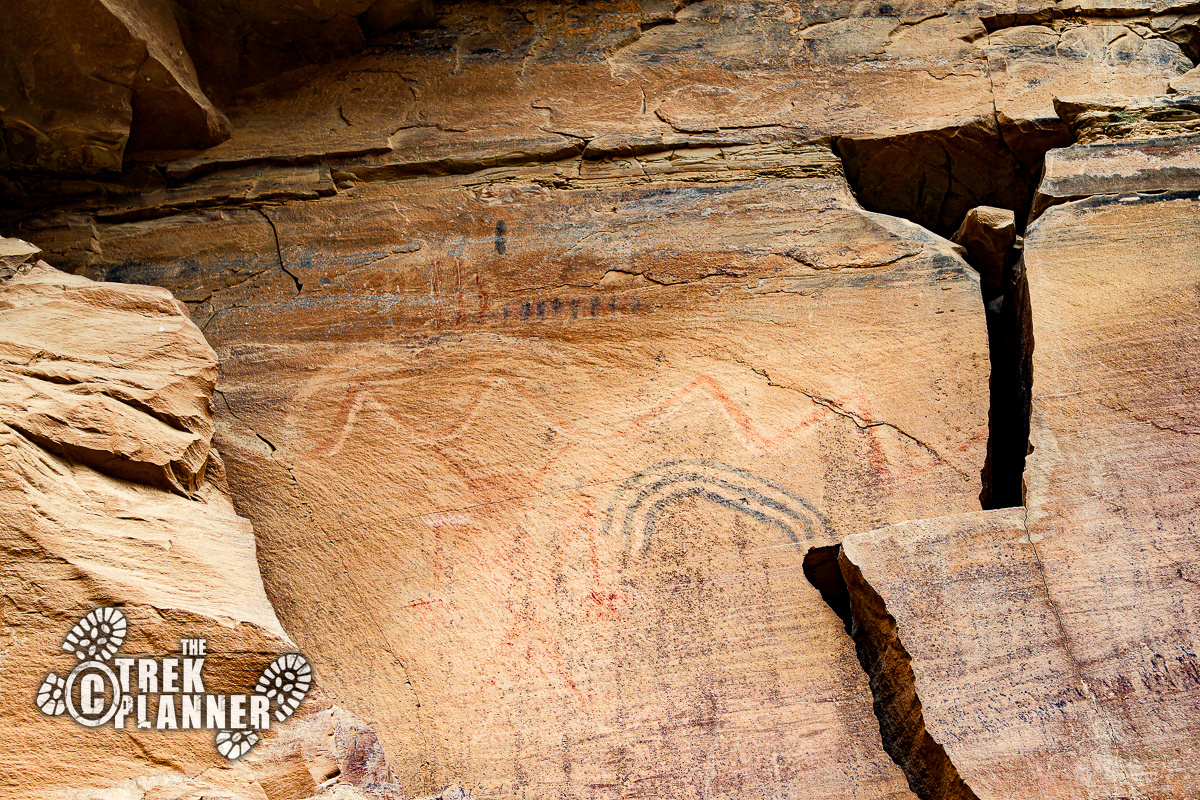
- Buffalo, Human, Sheep Panel – located near the Black Rainbow Panel
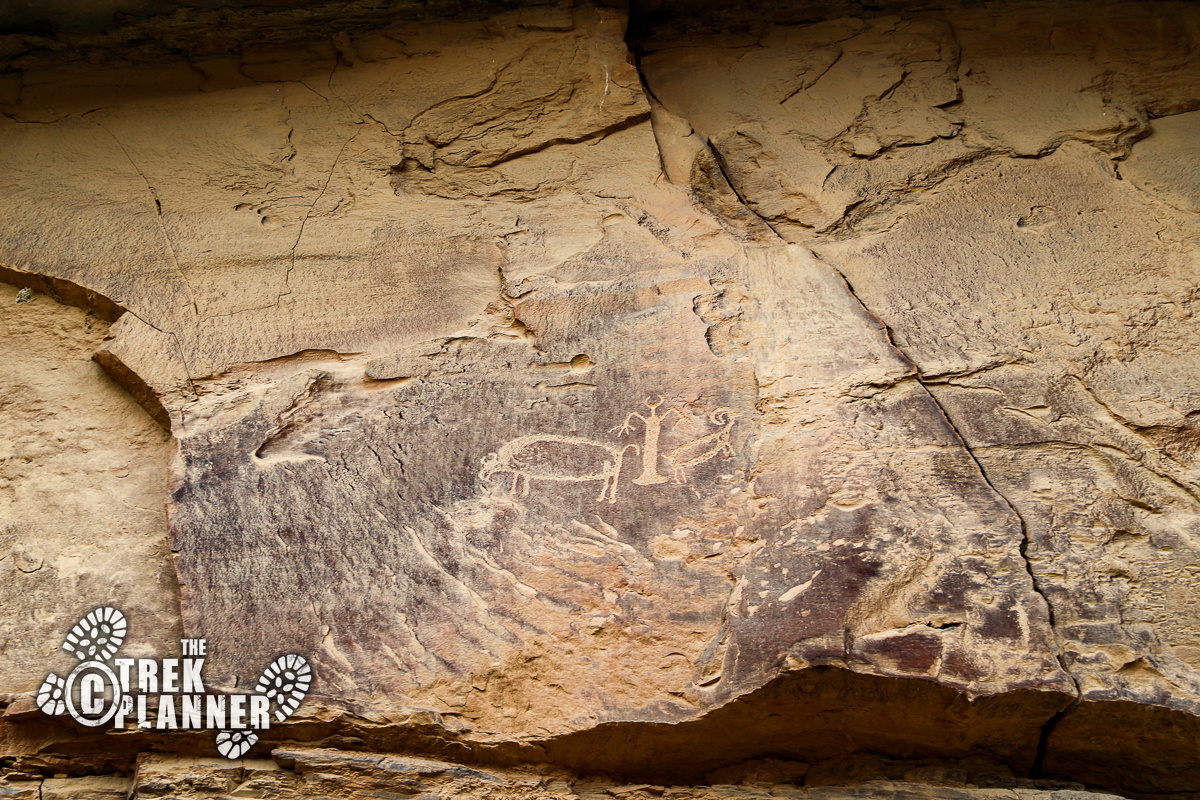
- Cliff Base Ruin – can’t really be seen from the road, but there are remnants of a ruin at the base of these cliffs
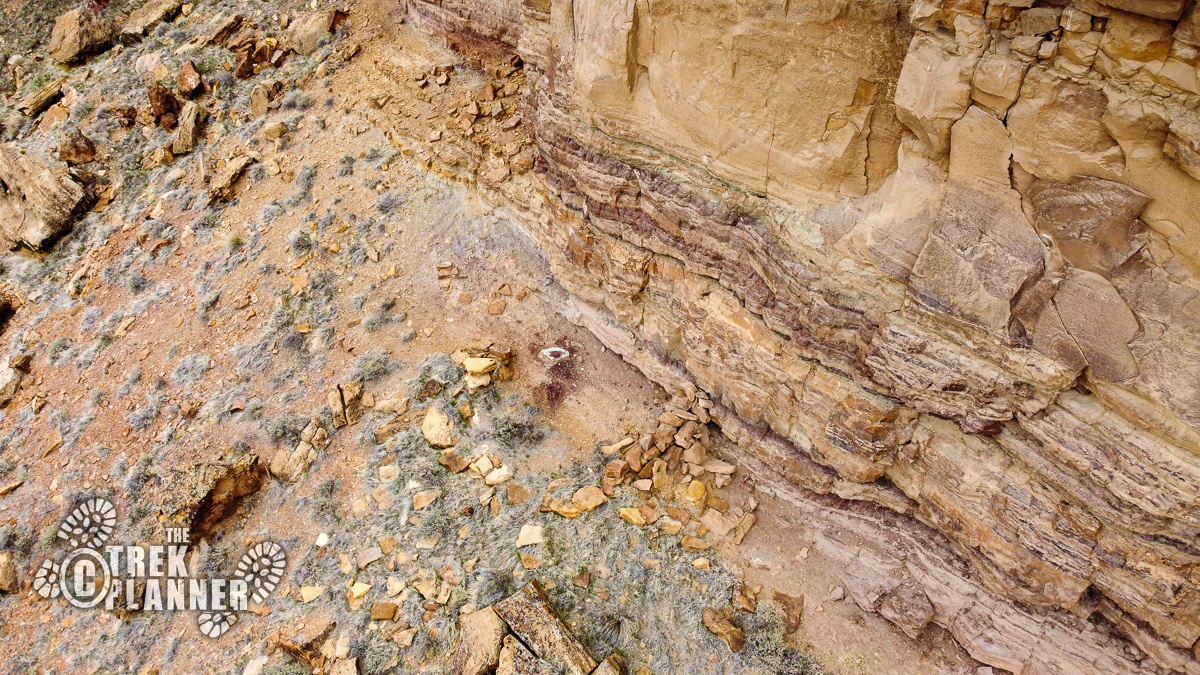
- Cliff Structure – there are two rock structures below these cliffs on the other side of the canyon. You will need binoculars or a telephoto lens to view them
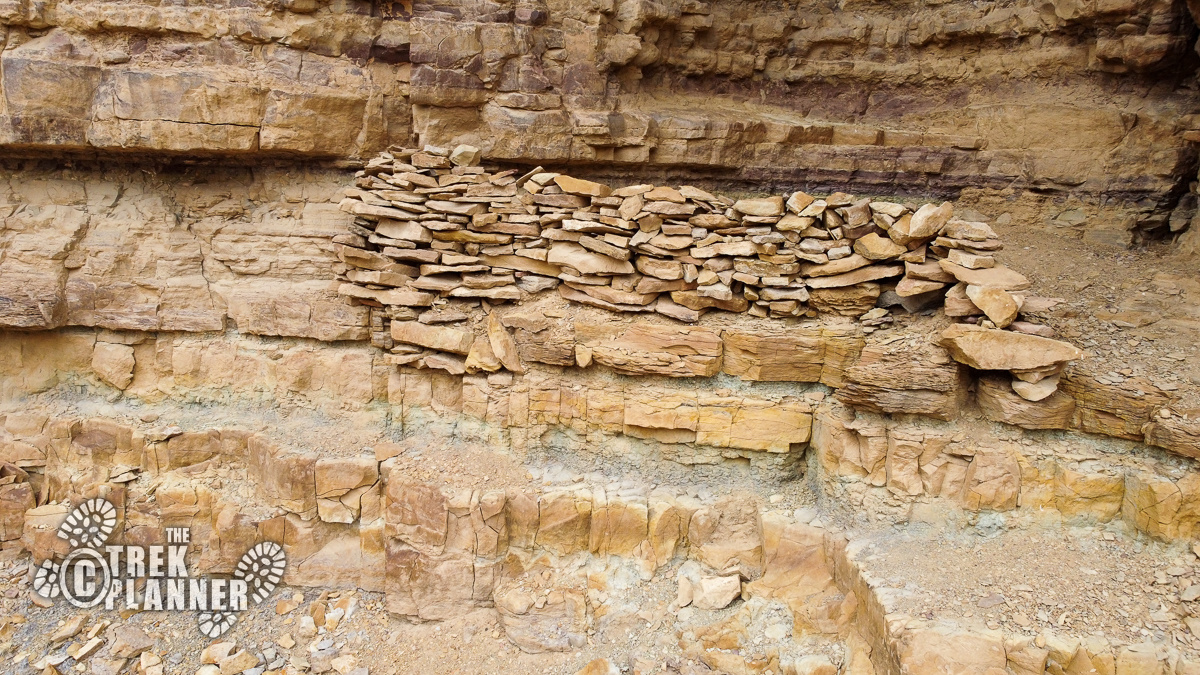
- Next to the cliff structures are a series of petroglyphs including this Dotted Outline
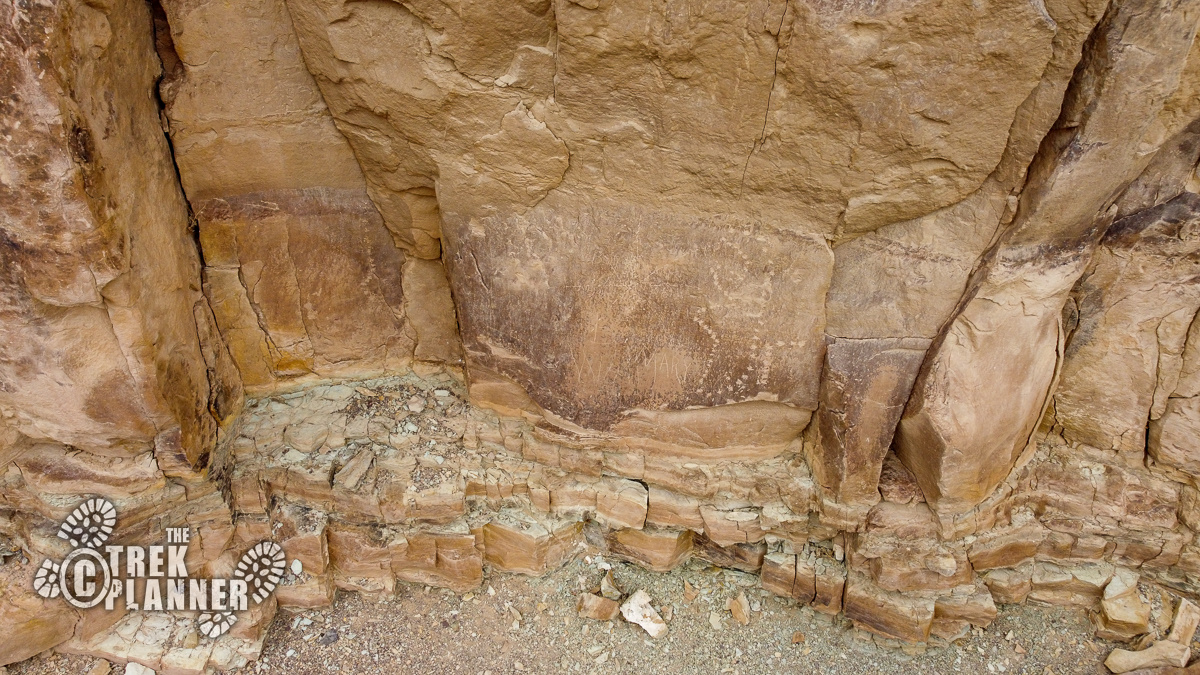
- Underneath an alcove are some incredibly vivid White Painted Zigzags! You will need binoculars or a drone to view these
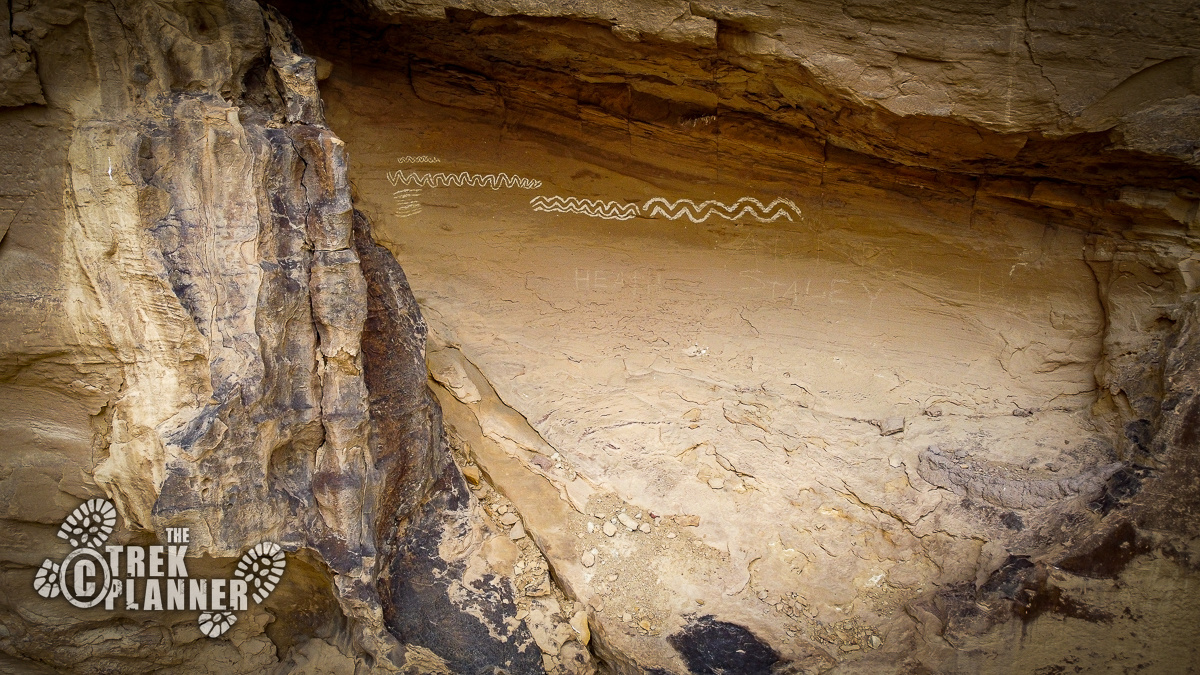
- Is this a pack road? This road doesn’t appear to be ancient, but it does seem to be old. Look at how the rocks are stacked in order to make this narrow trail up the side of the cliffs. The trail eventually disappears, so I’m not sure what this was for.
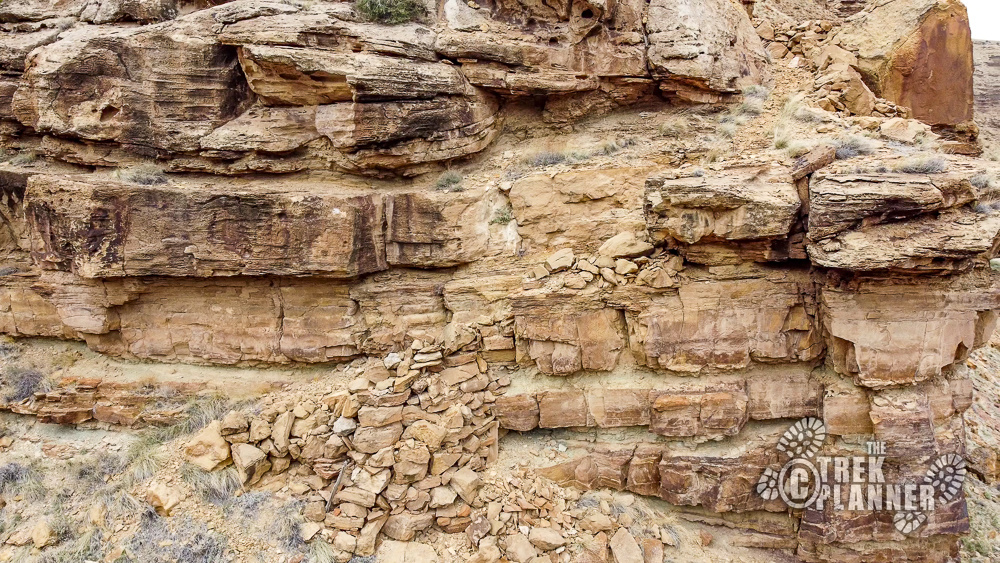
- Zigzag Glyph – can only be seen by using binoculars or a drone
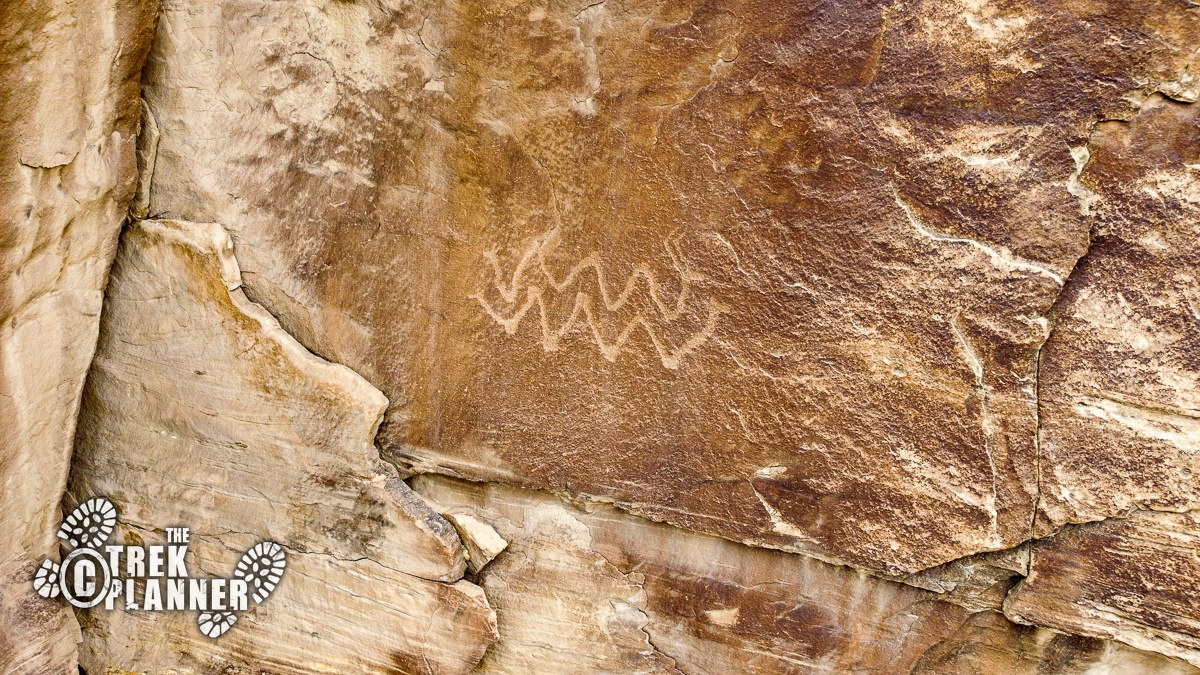
- Anthropomorph Glyph – can only be seen by using binoculars or a drone
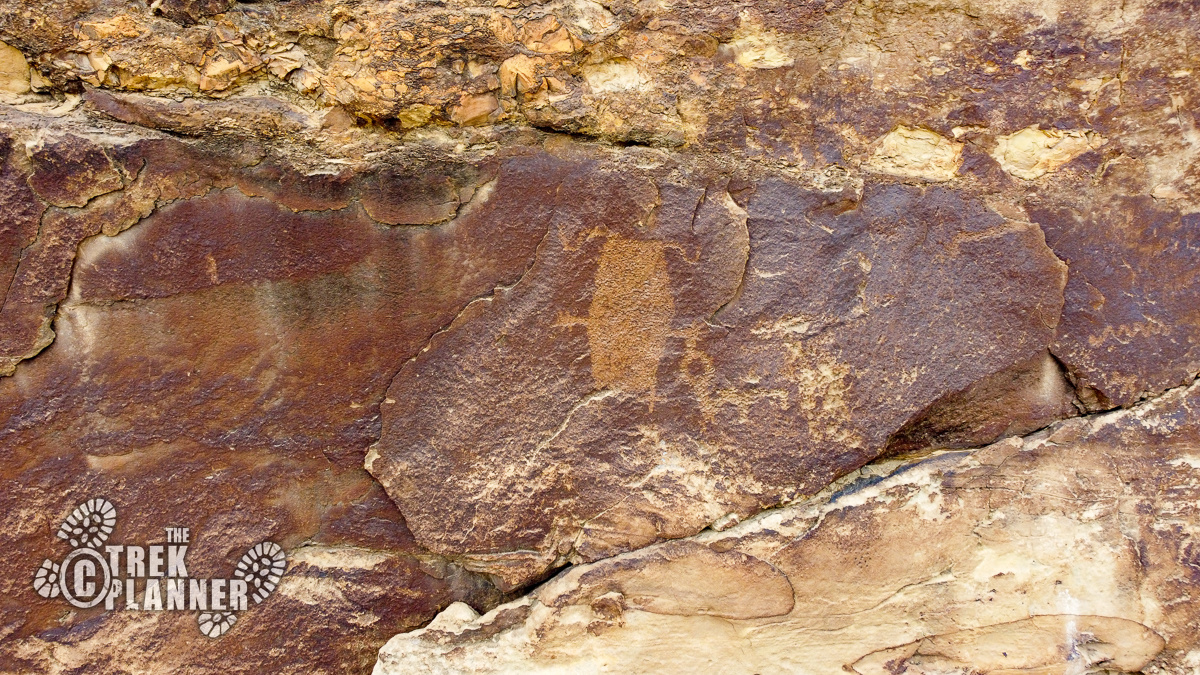
- Dots Glyph – can only be seen by using binoculars or a drone
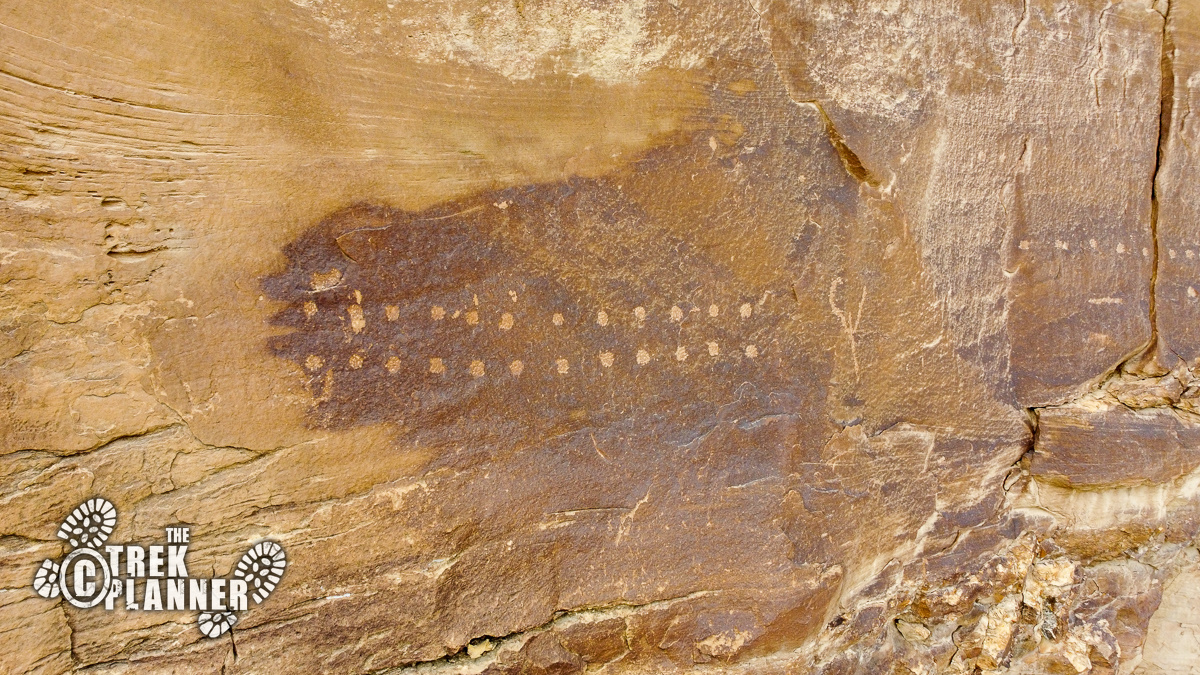
- Squidman Panel – can only be seen by using binoculars or a drone. Look at this figure of a human with multiple bendable legs!
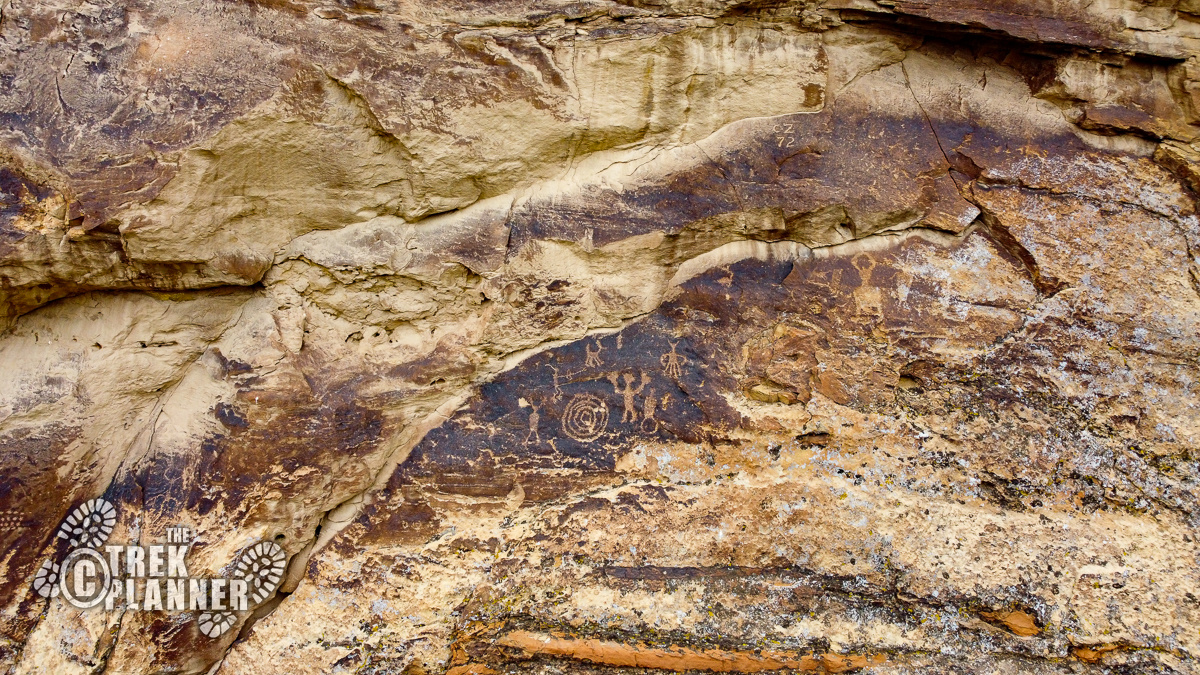
- White Ghosts Pictographs – Who are they? What are they? We will never know. But both of these “ghosts” hold their hands open like they are trying to scare and keep you away from something.
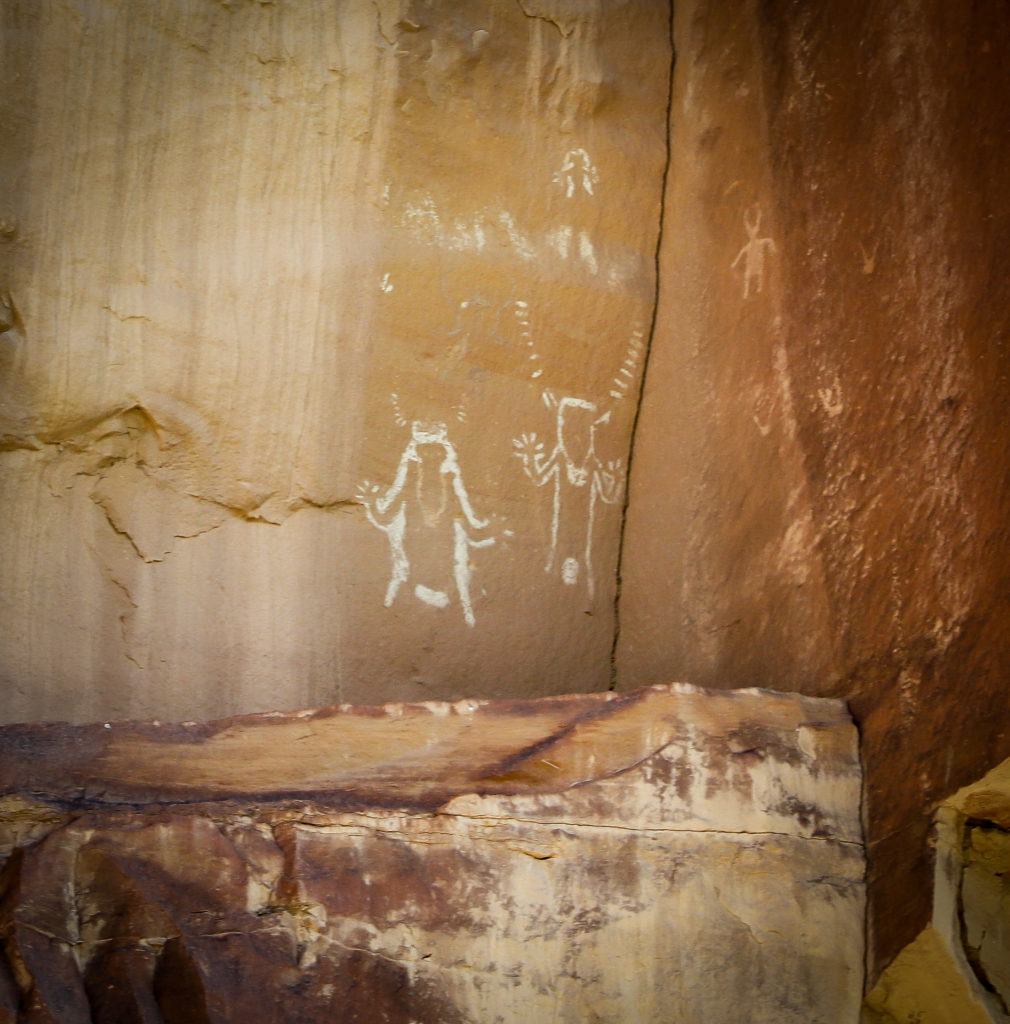
- Red Bear Paw Panel – This incredible panel is faded and hard to see from the road. If you look closely you can see a red and white painted human hand and then a red and white painted bear paw. You can also see hands and animal petroglyphs in the same spot.

- Red and White Lines – Look closely to your right about 30 feet up and you will see red and white painted lines. You can also see a white squiggly line and some other pictographs.
- Fremont Village – this short hike leads to an excavation site of a small village. You can see current work the archaeologists are doing so please examine from afar.


- Granary in a Boulder – This granary is inside of a boulder near the Fremont Village. Look for the painted handprints too!
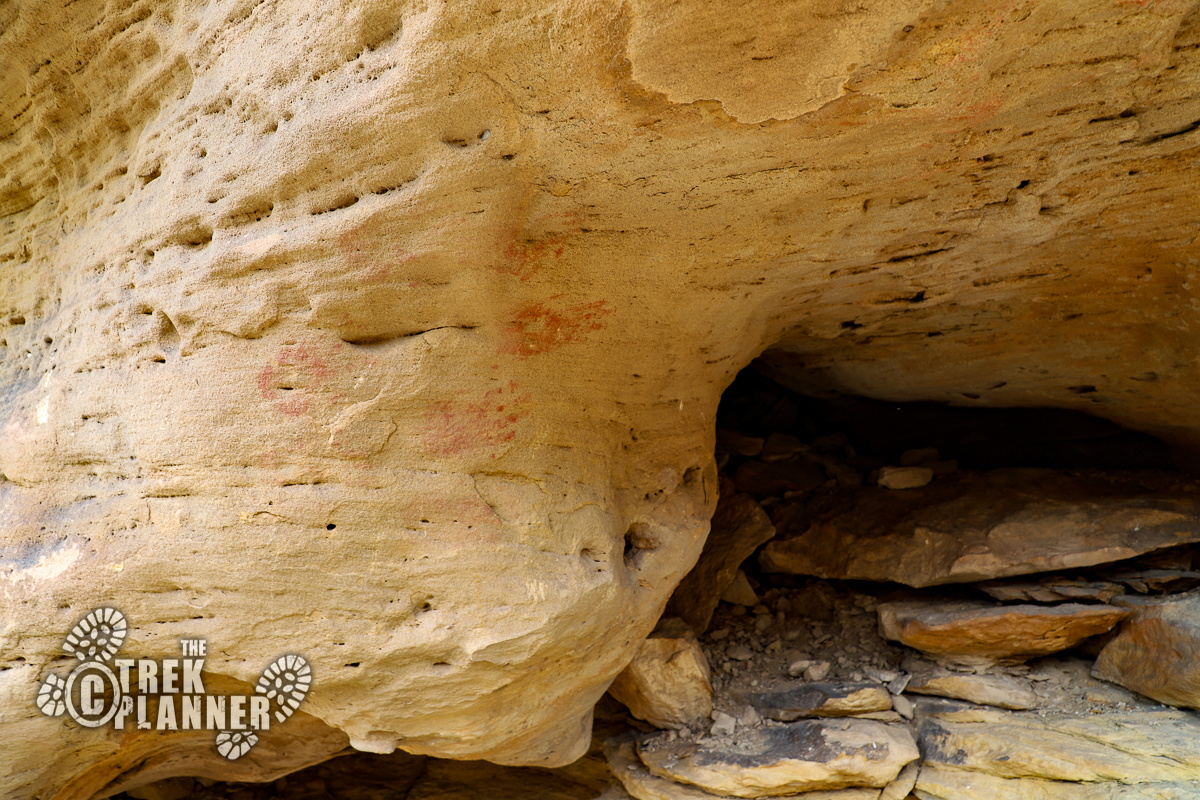
- Go up a little farther form the Granary Boulder and you will see several small petroglyphs of elk!
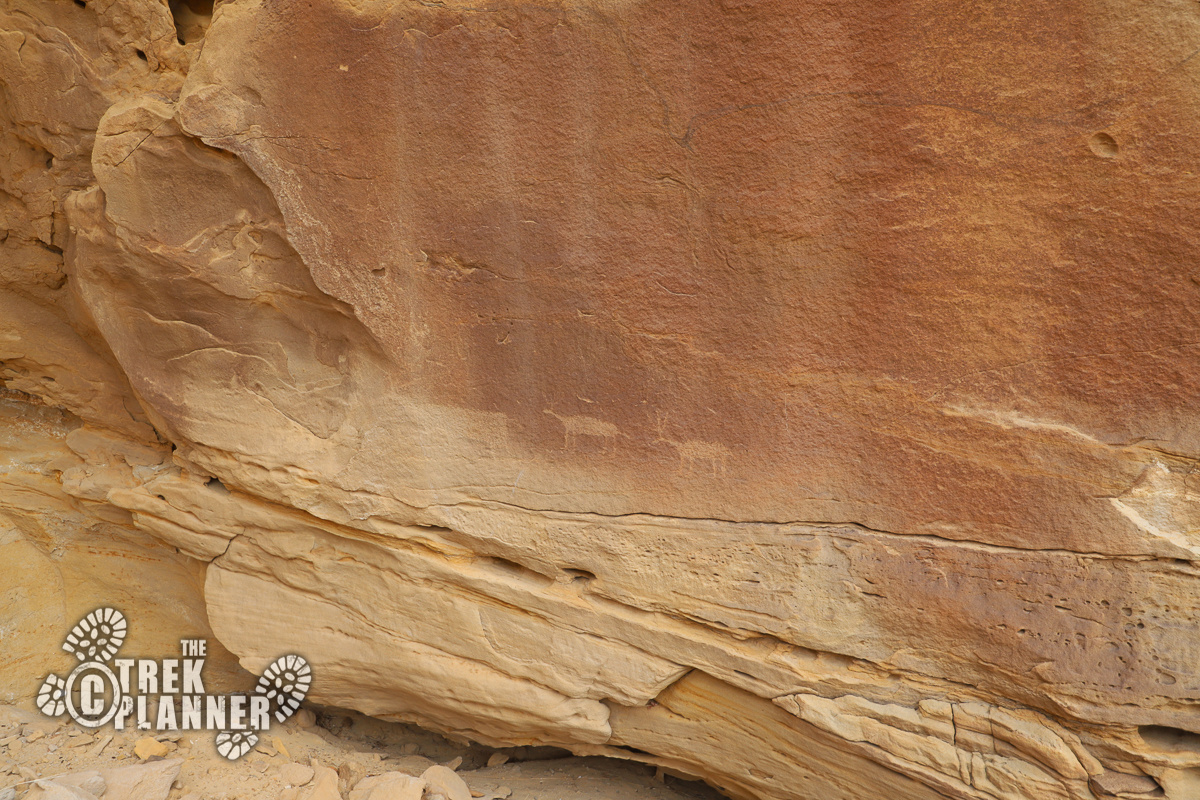
- The “I’m Going to Fall” Panel – this incredible panel is located on 80+ ft. cliffs! You can only view these if you make the climb all the way up and peer over the edge to see them! Someone was incredibly brave to carve these!
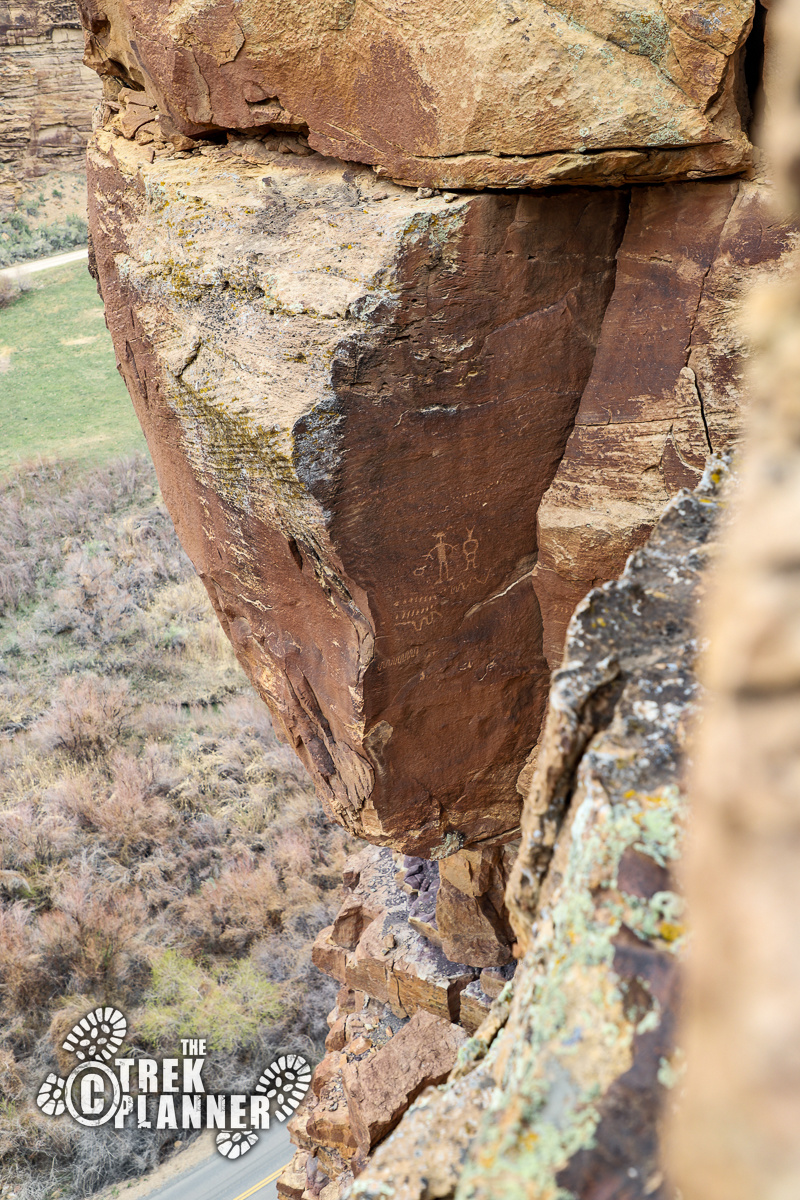
- Cottonwood Canyon – Cottonwood Canyon has some of 9 Mile Canyon’s best petroglyphs! To see the petroglyphs, take the short ride down Cottonwood Canyon. If you have a high clearance vehicle and 4×4 capability, you could drive the long way back to Price this way. -This road is not for amateurs! But you can see the next few spots easily-
- Big Buffalo – This buffalo is huge! Park at the sign that says “Big Buffalo”. The trail leads to your left and across a shallow creek. I found rocks to step on to cross and then the buffalo and other petroglyphs are about 75 yards away from here.
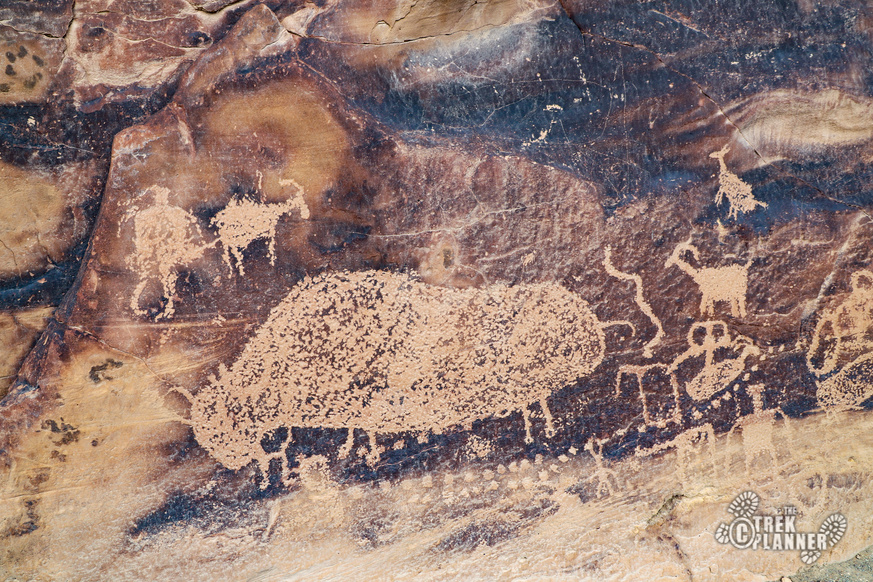
- Certainly, one of the greatest petroglyph panels in 9 Mile Canyon is The Great Hunt. Featuring many rams, sheep, and hunters. This panel is very detailed and clear! It tells a story of a great hunt that took place and probably fed many people for many days. You can see several hunters shooting arrows at the animals. Many other petroglyphs and pictographs are in this area.


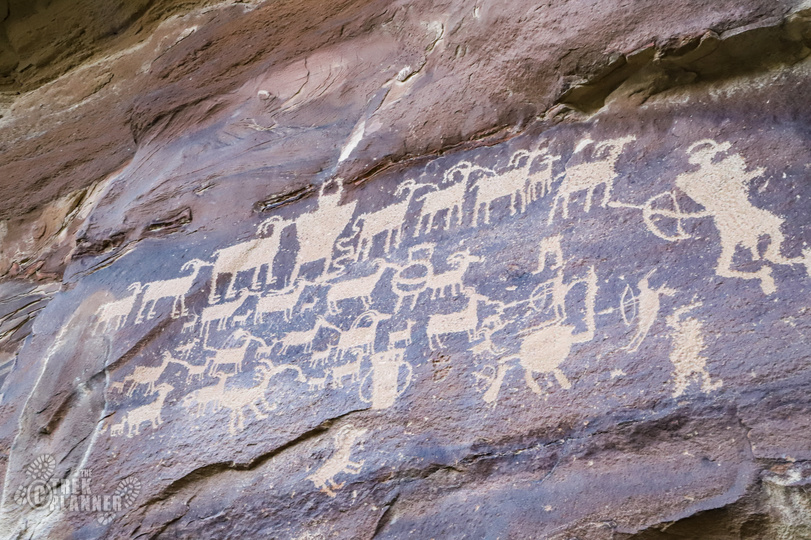

- Spiral Elk Tail – this panel is located just down the street a little ways from The Great Hunt Panel.
 On a different visit, I found this cross on top of a mesa. Not sure what it is, but it took me about 2 hours of hiking straight up to get to it. Is it an aviation marking? Spanish cross? or something else?
On a different visit, I found this cross on top of a mesa. Not sure what it is, but it took me about 2 hours of hiking straight up to get to it. Is it an aviation marking? Spanish cross? or something else?
- The first big thing to see is the Soldier Canyon Mine. The mine is fenced at its boundary and the mine entrances have been sealed since July 1999. You can still see remnants of this large coal mine including a conveyor system, coal hopper, warehouse, office, and other support buildings.

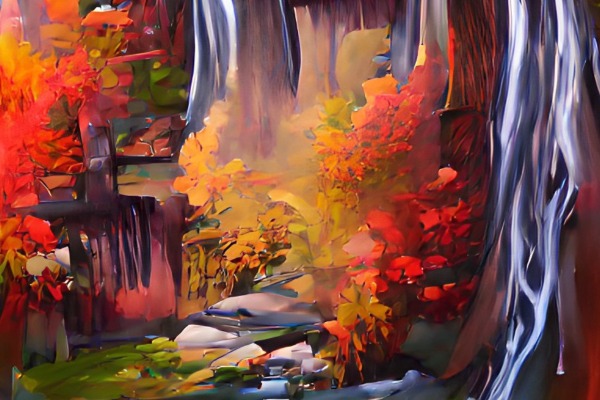
Personal Thoughts
I absolutely loved driving through 9 Mile Canyon. I was probably going 3-5 mph the entire time trying to spot petroglyphs along the canyon walls. Luckily, I didn't see many cars on the road this day. Just be sure to pull to pull to the side and show courteous to other drivers. This is a remote area so stock up on fuel, water, food, and even a spare tire! There is so much more to see to 9 mile canyon than what I have showed you in this Trek, so get out there and explore!

[…] trees or under ledges. Don’t expect to see tons of rock art like you would in the nearby 9 Mile Canyon. 9 Mile Canyon has way more rock art that is more easily accessible than Range Creek. Range Creek […]
My GPS will not take your coordinates. What datum format are they in decimal?
Hi Fred, we use the Decimal Degrees format. You may need a converter. I use this one: https://www.pgc.umn.edu/apps/convert/
Thanks, I just had to change to the HD.dddd format on my GPS and they all work now. Thanks
Hello Jeff, I have a question, how far up the canyon do you think you went? Did you go past 9 mile canyon ranch?
Hi Brandy, I went beyond 9 Mile Canyon Ranch all the way to the great hunt panel
[…] The Trek Planner has one of the best guides on 9 Mile Canyon! Click here to see it! […]
Excellent guide to this wonderful and amazing place. Great job photographing the rock art, which can be difficult at times. Thenks for such a thorough and complete tour! Well done!
I’m so glad you enjoyed our guide, RD! Thank you for your gracious comments!
[…] I decided to head home. Here are many of those pictures! I have made an extensive guide on 9 Mile Canyon. Almost all of the GPS coordinates are for Insider Members. Most of the guides on the […]
Hey Jeff, can you drive up the sheep canyon road? I notice it’s private next to the nine mile road but opens to public land above. How far up are the sites in sheep canyon?
Hey Joshua, I’m not too sure about the sites up Sheep canyon road. What sites are you talking about in particular?
[…] is also a spiral with the tail end of it is of an animal head. I’ve seen this before in 9 Mile Canyon and at other places around […]
[…] As per the information available on various websites, Nine Mile Canyon is a public outdoor museum with free admission [13][14][15]. […]
How can I access 9 mile canyon GPS coordinates?
Jeff, I took this photo about a mile or so before the Owl Panel in Nine Mile Canyon. My camera does not record GPS data and I did not take any pictures with my iPhone. I have also never seen this picture on line. Any chance you have this in your archive and if so could you give me its general location, like the nearest mile marker. I understand if you are not comfortable providing GPS co ordinates to strangers. Thanks, Joe Lorimor. PS: I thought I subscribed to our site last year but can’t seem to find user ID… Read more »
Hi Joe, I can’t see the picture. Can you please send it to my email and I’ll take a look: jeff@thetrekplanner.com
I did sent a photo copy of the photo. Please let me know if you did not get it.
Thanks
Jeff, I have seen several references to Warrior Ridge in Nine Mile Canyon. Can you tell me the general location of this ridge? Nearest side canyon or mile post would be wonderful.
Thanks,
JL